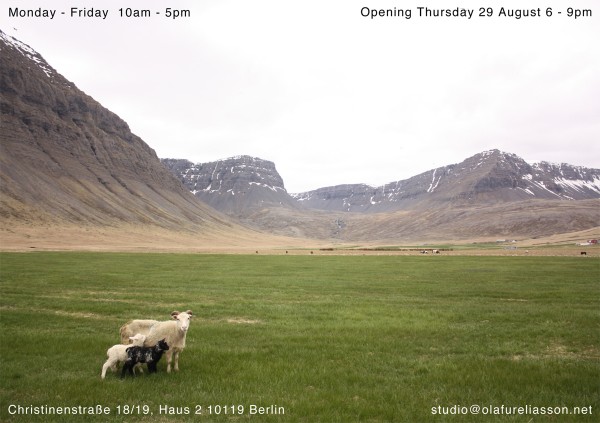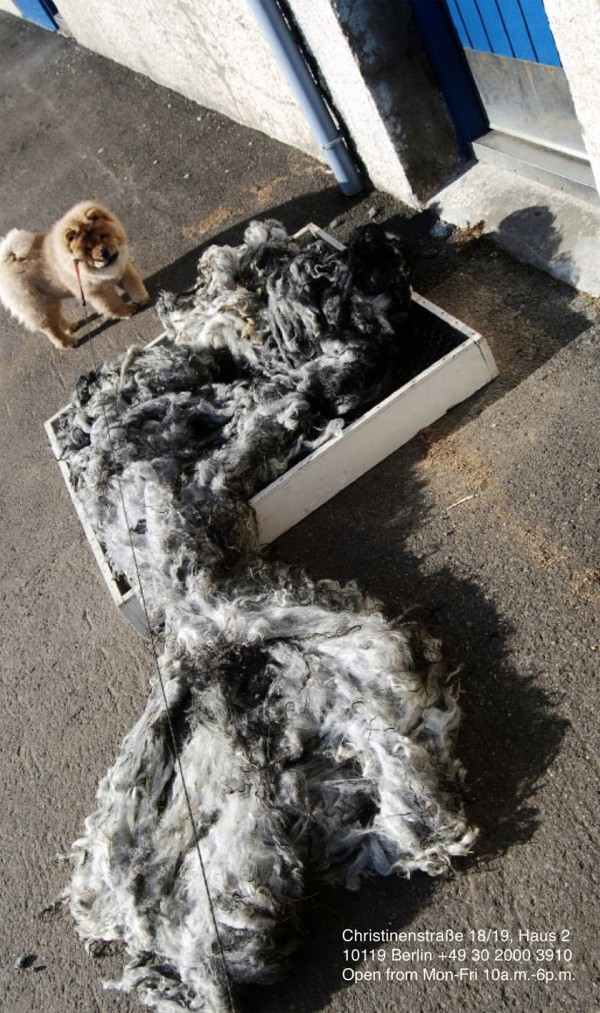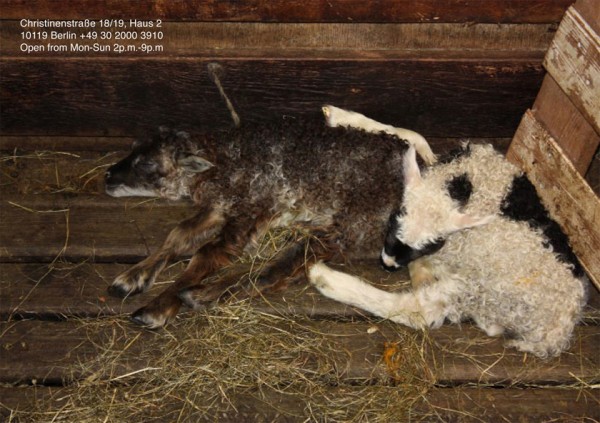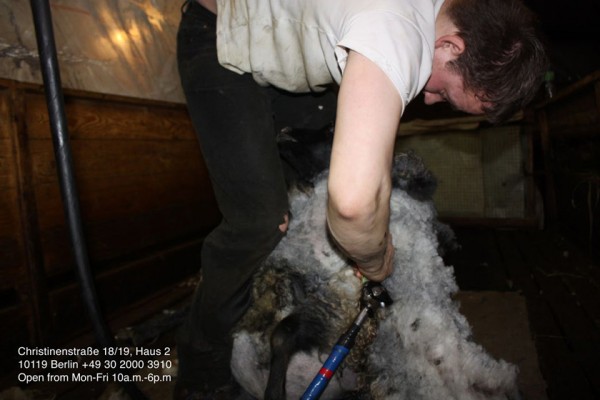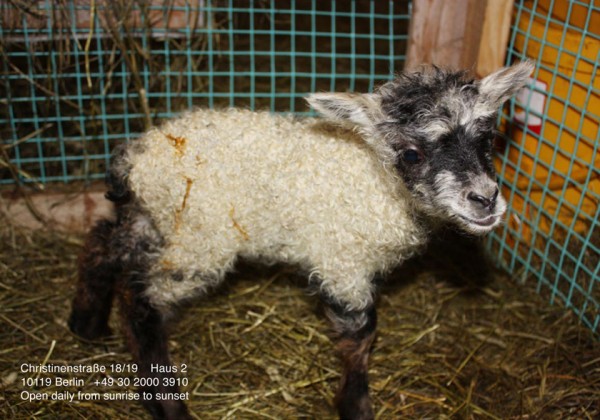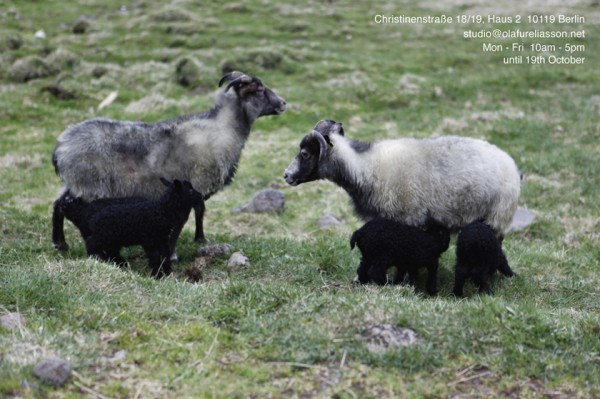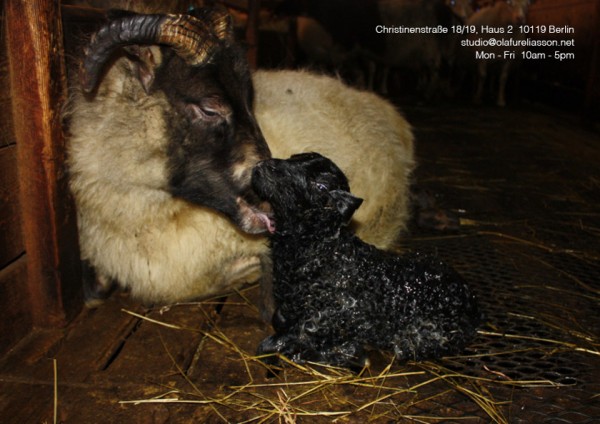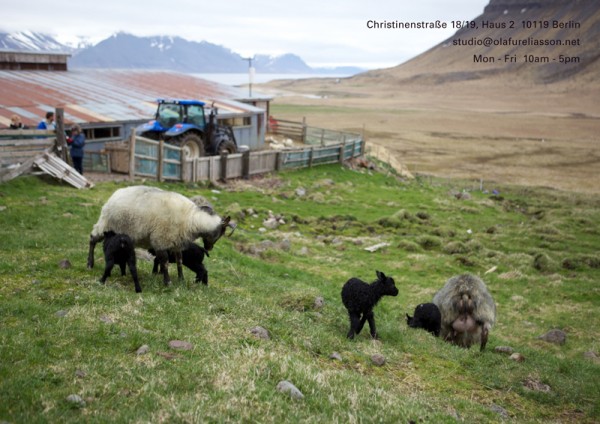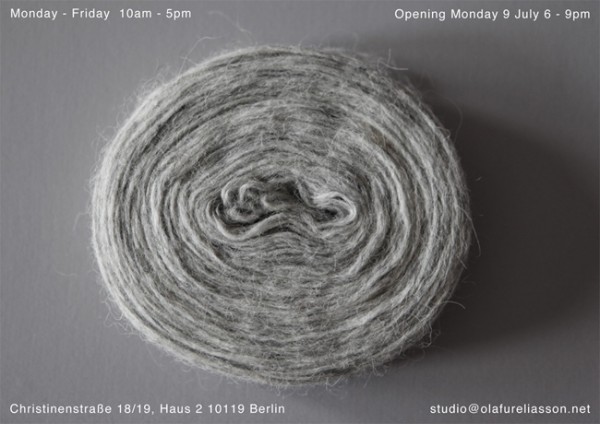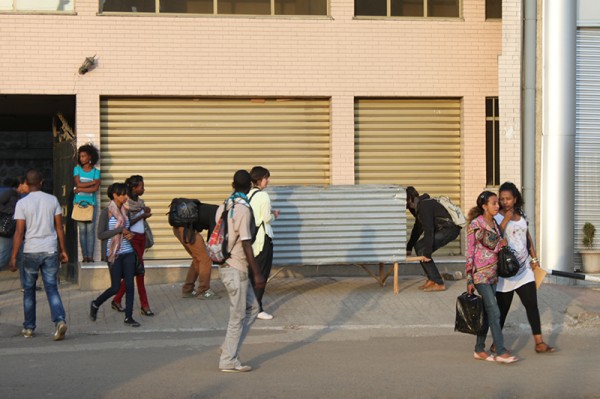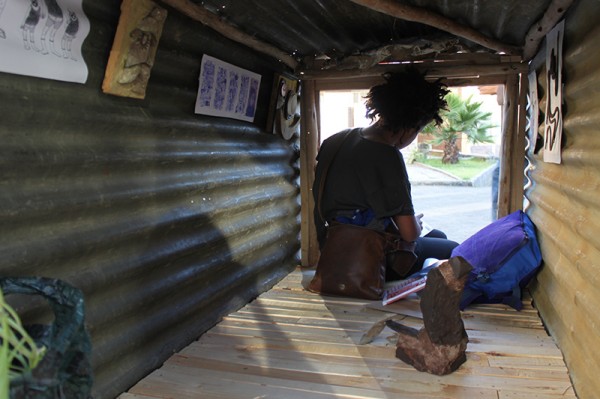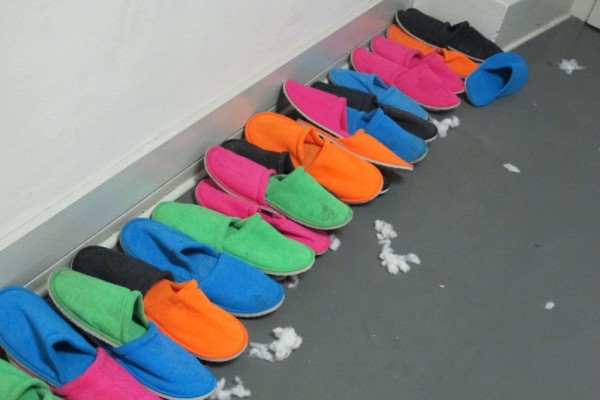27. - 28. Oktober 2023 / Kooperation, Ausstellung ⟶
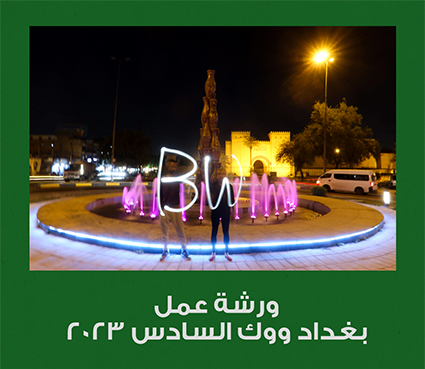
Baghdad Walk VI
Baghdad Walk IVGroup exhibition in public space
Baghdad Walk is an annual series of workshops culminating in a group exhibition presented in public spaces across the city of Baghdad. This year’s sixth edition – Baghdad Walk VI – took place over two meandering days in the vicinity of Al-Alawi and Al-Sarafiya Bridge. Fifteen Iraqi artists presented their works in a variety of artistic medias and expressive forms, addressing fundamental topics from human rights to climate change. The works speak to how these topical issues manifest in the artists’ surroundings and how the infringement of these rights effects their lives and the broader community.
The presented works demonstrate how upcoming generations are making sense of the changing social, political and environmental dynamics in Iraq. Many artists have taken the opportunity to focuses on artivism – artistic activism – in order to create public awareness around pressing societal issues like child labour, housing, water scarcity, environmental pollution, women’s roles in the public sphere, climate migration, land-use planning, injustice, politicized infrastructure, and coping strategies for collective and personal trauma.
Baghdad Walk IV features site-specific interventions and presentations by the following artists: Sally Naeem, Zahraa Soubhi, Noor Abd Ali, Razan Aldouri, Amnah Ali, Mahmoud Mohammed, Loay Al Hadhary, Muhaned Taha, Mohammed Kadhim, Atef Al Jaffal, Hassan Al Narjes, Haider Almaslmawe, Taqi Mohammed, Hussam Mohammed, Tarkib Collaboration.
Workshops and curatorial support: Susanne Bosch, Hella Mewis, Christina Werner
Please find the project’s bilingual (Englisch-Arabic) website here.
Baghdad Walk VI is conceptualized and organized by Tarkib and the Institut für Raumexperimente (Institute for Spatial Experiments), Berlin, and in collaboration with UNAMI Human Rights Office, the Embassy of the Kingdom of Netherlands to Iraq and Arab Fund for Arts and Culture (AFAC).
Photos: Hella Mewis, Zahraa Soubhi, Hassan Al Narjes, Atef Al Jaffal
Baghdad Walk IVGroup exhibition in public space
Baghdad Walk is an annual series of workshops culminating in a group exhibition presented in public spaces across the city of Baghdad. This year’s sixth edition – Baghdad Walk VI – took place over two meandering days in the vicinity of Al-Alawi and Al-Sarafiya Bridge. Fifteen Iraqi artists presented their works in a variety of artistic medias and expressive forms, addressing fundamental topics from human rights to climate change. The works speak to how these topical issues manifest in the artists’ surroundings and how the infringement of these rights effects their lives and the broader community.
The presented works demonstrate how upcoming generations are making sense of the changing social, political and environmental dynamics in Iraq. Many artists have taken the opportunity to focuses on artivism – artistic activism – in order to create public awareness around pressing societal issues like child labour, housing, water scarcity, environmental pollution, women’s roles in the public sphere, climate migration, land-use planning, injustice, politicized infrastructure, and coping strategies for collective and personal trauma.
Baghdad Walk IV features site-specific interventions and presentations by the following artists: Sally Naeem, Zahraa Soubhi, Noor Abd Ali, Razan Aldouri, Amnah Ali, Mahmoud Mohammed, Loay Al Hadhary, Muhaned Taha, Mohammed Kadhim, Atef Al Jaffal, Hassan Al Narjes, Haider Almaslmawe, Taqi Mohammed, Hussam Mohammed, Tarkib Collaboration.
Workshops and curatorial support: Susanne Bosch, Hella Mewis, Christina Werner
Please find the project’s bilingual (Englisch-Arabic) website here.
Baghdad Walk VI is conceptualized and organized by Tarkib and the Institut für Raumexperimente (Institute for Spatial Experiments), Berlin, and in collaboration with UNAMI Human Rights Office, the Embassy of the Kingdom of Netherlands to Iraq and Arab Fund for Arts and Culture (AFAC).
Photos: Hella Mewis, Zahraa Soubhi, Hassan Al Narjes, Atef Al Jaffal
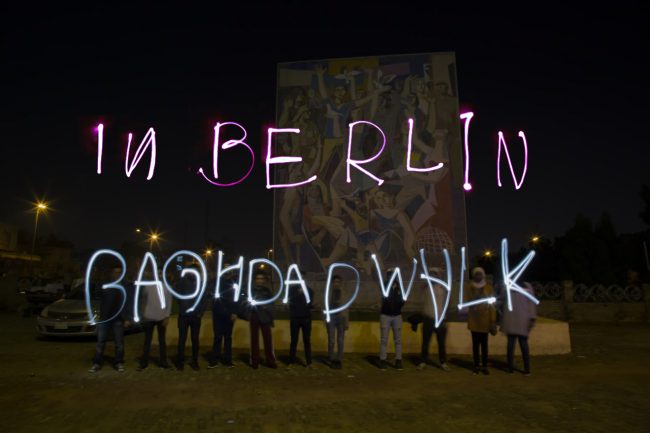
Baghdad Walk in Berlin at Salon am Moritzplatz
Salon am Moritzplatz, Oranienstraße 58, 10969 Berlin
Opening: 23 June at 6 pm
24 June — 26 June 2022. Daily from 2 pm to 8 pm
BAGHDAD WALK is an annual group exhibitions series which takes place in public spaces across the city of Baghdad, Iraq. BAGHDAD WALK IN BERLIN presents selected works by emerging Iraqi artists at Salon am Moritzplatz.
Since 2018, the independent artist group TARKIB has organised an ongoing series of art workshops and seminars in Baghdad in cooperation with the Goethe-Institut Irak and the Institut für Raumexperimente in Berlin, which culminate in the exhibition series BAGHDAD WALK. Urban realities and decisive events that have become part of Baghdad’s collective cultural memory are creatively explored and the artists’ works offer moments of reflection.
The exhibition in Berlin reveals how the participating artists develop artistic strategies and narratives in Baghdad’s public spaces. The shared experiences of the interventions on the streets of Baghdad are transferred into an exhibition format presenting photography, video, sound, painting, and documentation of performances and art interventions that collaboratively connect perspectives from Baghdad and Berlin. Works by Berlin-based artists who took part in the seminar series and previously hosted artistic projects in Baghdad are presented in dialogue with works of the participating Iraqi artists. Five of the exhibiting artists from Baghdad as well as the Berlin-based artists will be present at the opening.
–
With contributions by Tabarek Al Atrakchi @_tabiii9, Atef Al Jaffal @atef.ja, Muntadher Amel @muntadheramal, Shams Aqeel @tooshiepie, Loay Al Hadhary @artist_loay_alhadhary, Fabian Knecht @studiofabianknecht, Hella Mewis, Hussam Mohammed @husam_mohammed_a, Ameen Mokdad @ameen_mokdad, Yousr Mokdad @yousr.mokdad, Hussain Muttar @hussain_a_mutar, Fatima Dhahi, Hajer Qusay @hajer_qussay, Zaid Saad @zaid_saad_a, Muhaned Taha @mohanad_taha_k, Vlado Velkov #vladovelkov, Raul Walch @raulwalch, Basma Watheq.
Please find the project’s bilingual (Englisch-Arabic) website here.
–
Baghdad Walk is a project by the Goethe-Institut Irak, conceived and organised in collaboration with the Institut für Raumexperimente (Institute for Spatial Experiments), Berlin and hosted by TARKIB Baghdad Contemporary Arts Institute in BAIT TARKIB, choreographed by Hella Mewis and Christina Werner. It is the result of the workshop series „Arts Seminar in Baghdad“.
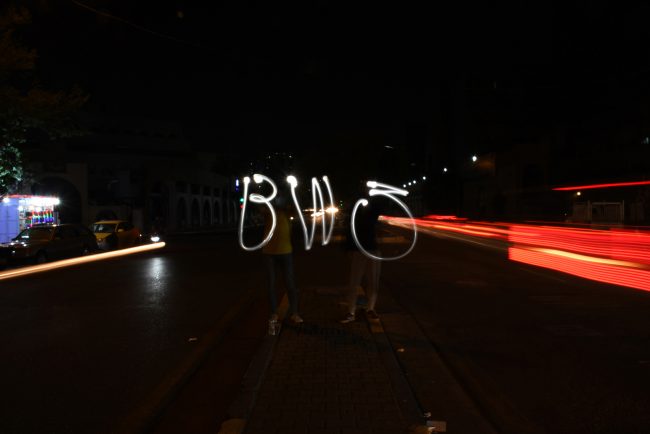
Baghdad Walk III
Baghdad Walk IIIGroup exhibition in public space
BAGHDAD WALK is a series of group exhibitions in public spaces across the city of Baghdad, Iraq. Th third edition of these art walks – Baghdad Walk III – took place along Haifa Street in November 2020, featuring site-specific interventions and presentations by the following artists:
Ali Adnan, Anees Amer, Shams Aqeel, Tabarek Al Atrakchi, Loay Al Hadhary, Hussam Mohammed, Ameen Mokdad, Hussain Muttar, Hadjer Qusay, Zaid Saad, Zain Saad, Muhaned Taha
–
Please find the project’s bilingual (Englisch-Arabic) website here.
–
Baghdad Walk is a project by the Goethe-Institut Irak, conceived and organised in collaboration with the Institut für Raumexperimente (Institute for Spatial Experiments), Berlin and hosted by TARKIB Baghdad Contemporary Arts Institute in BAIT TARKIB, choreographed by Hella Mewis and Christina Werner. It is the result of the workshop series „Arts Seminar in Baghdad“.
Photos: Ameen Mokdad, Anees Amer, Atef Al Jaffal
Baghdad Walk IIIGroup exhibition in public space
BAGHDAD WALK is a series of group exhibitions in public spaces across the city of Baghdad, Iraq. Th third edition of these art walks – Baghdad Walk III – took place along Haifa Street in November 2020, featuring site-specific interventions and presentations by the following artists:
Ali Adnan, Anees Amer, Shams Aqeel, Tabarek Al Atrakchi, Loay Al Hadhary, Hussam Mohammed, Ameen Mokdad, Hussain Muttar, Hadjer Qusay, Zaid Saad, Zain Saad, Muhaned Taha
–
Please find the project’s bilingual (Englisch-Arabic) website here.
–
Baghdad Walk is a project by the Goethe-Institut Irak, conceived and organised in collaboration with the Institut für Raumexperimente (Institute for Spatial Experiments), Berlin and hosted by TARKIB Baghdad Contemporary Arts Institute in BAIT TARKIB, choreographed by Hella Mewis and Christina Werner. It is the result of the workshop series „Arts Seminar in Baghdad“.
Photos: Ameen Mokdad, Anees Amer, Atef Al Jaffal
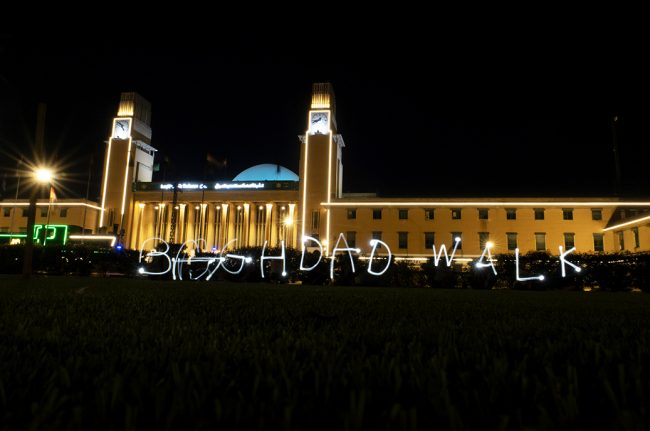
Baghdad Walk IV
Baghdad Walk IVGroup exhibition in public space
BAGHDAD WALK is a series of group exhibitions in public spaces across the city of Baghdad, Iraq. The latest edition of these art walks – Baghdad Walk IV – took place at Baghdad Central Station.
Baghdad Walk IV features site-specific interventions and presentations by the following artists:
Mayar Abdulkareem, Atef Al Jaffal, Zahraa Al Obaidi, Muntadher Amel, Anees Amer, Shams Aqeel, Tabarek Al Atrakchi, Fatima Dhahir, Loay Al Hadhary, Maryam Hazim, Zahraa Hassan, Nada Hussain, Hella Mewis, Hussam Mohammed, Ameen Mokdad, Yousr Mokdad, Hussain Muttar, Mohammed Nameer, Karrar Saad, Zaid Saad, Muhaned Taha, Basma Watheq, Mohanad Yakoob, Rose Yousif
Please find the project’s bilingual (Englisch-Arabic) website here.
–
Baghdad Walk is a project by the Goethe-Institut Irak, conceived and organised in collaboration with the Institut für Raumexperimente (Institute for Spatial Experiments), Berlin and hosted by TARKIB Baghdad Contemporary Arts Institute in BAIT TARKIB, choreographed by Hella Mewis and Christina Werner. It is the result of the workshop series „Arts Seminar in Baghdad“.
Photos: Hella Mewis, Anees Amer, Muntadher Amel
Baghdad Walk IVGroup exhibition in public space
BAGHDAD WALK is a series of group exhibitions in public spaces across the city of Baghdad, Iraq. The latest edition of these art walks – Baghdad Walk IV – took place at Baghdad Central Station.
Baghdad Walk IV features site-specific interventions and presentations by the following artists:
Mayar Abdulkareem, Atef Al Jaffal, Zahraa Al Obaidi, Muntadher Amel, Anees Amer, Shams Aqeel, Tabarek Al Atrakchi, Fatima Dhahir, Loay Al Hadhary, Maryam Hazim, Zahraa Hassan, Nada Hussain, Hella Mewis, Hussam Mohammed, Ameen Mokdad, Yousr Mokdad, Hussain Muttar, Mohammed Nameer, Karrar Saad, Zaid Saad, Muhaned Taha, Basma Watheq, Mohanad Yakoob, Rose Yousif
Please find the project’s bilingual (Englisch-Arabic) website here.
–
Baghdad Walk is a project by the Goethe-Institut Irak, conceived and organised in collaboration with the Institut für Raumexperimente (Institute for Spatial Experiments), Berlin and hosted by TARKIB Baghdad Contemporary Arts Institute in BAIT TARKIB, choreographed by Hella Mewis and Christina Werner. It is the result of the workshop series „Arts Seminar in Baghdad“.
Photos: Hella Mewis, Anees Amer, Muntadher Amel
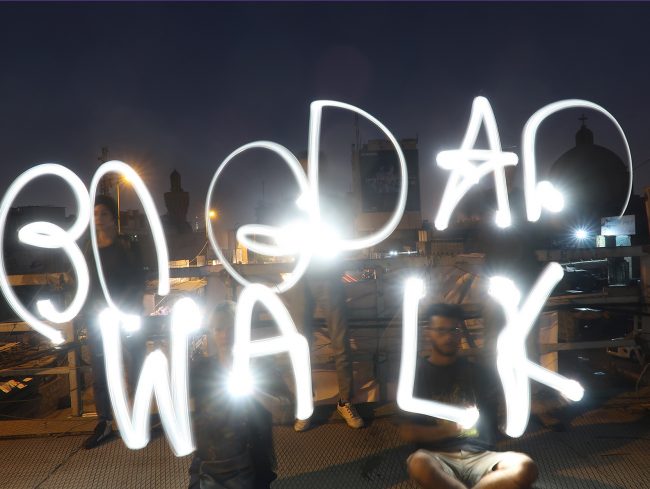
Baghdad Walk II
BAGHDAD WALK IIGroup exhibition in public space
BAGHDAD WALK is a series of group exhibitions with artworks by emerging Iraqi artists presented in public space and in different locations in Baghdad. Baghdad Walk is an exhibition and a narrative tour of the city. The participating artists connect their works with the specific locations, introducing background information on site. Manifold stories about the city of Baghdad are told and retold anew through the artists’ perspectives and the encounters they create.
Baghdad Walk II was originally planned for November 2019. Due to the ongoing protests in Iraq, the sit-in at Baghdad’s Al Tahrir Square and the adjacent neighbourhoods, and the strike of Iraqi educational and cultural organisations and institutions, Baghdad Walk II was postponed. The format had to be slightly adjusted and took place in March 2020.
Twelve artists presented their perspectives on memory culture in the neighbourhood around Mutanabbi Street and the Shorja Bazaar, interpreting events and local circumstances that have become part of the collective cultural memory as well as its various forms in the contemporary urban reality. The potential of visual culture to create moments of reflection in contemporary society is activated by the diverse artistic interventions.
The art walk started at the ruins of the former court building Al Mutasarefiya and the Al Mutanabbi Statue on Mutanabbi Street, then proceeded to Al Rasheed Street, meandered through the Shorja Bazaar, circled back to Al Rusafi Square, and ended at Al Mutasarefiya.
Please find the project’s bilingual (Englisch-Arabic) website here.
Participating artists: Tabarek Al Atrakchi, Atef Al Jaffal, Loay Al Hadhary, Ahmed Majid, Hella Mewis, Muhaned Mohammed, Hussam Mohammed, Ameen Mokdad, Hussain Muttar, Zaid Saad, Muhaned Taha.
–
Baghdad Walk is a project by the Goethe-Institut Irak, conceived and organised in collaboration with the Institut für Raumexperimente (Institute for Spatial Experiments), Berlin and hosted by TARKIB Baghdad Contemporary Arts Institute in BAIT TARKIB, choreographed by Hella Mewis and Christina Werner. It is the result of the workshop series „Arts Seminar in Baghdad“ led by Christina Werner.
Photos: Muntadher Amel, Hella Mewis, Christina Werner
BAGHDAD WALK IIGroup exhibition in public space
BAGHDAD WALK is a series of group exhibitions with artworks by emerging Iraqi artists presented in public space and in different locations in Baghdad. Baghdad Walk is an exhibition and a narrative tour of the city. The participating artists connect their works with the specific locations, introducing background information on site. Manifold stories about the city of Baghdad are told and retold anew through the artists’ perspectives and the encounters they create.
Baghdad Walk II was originally planned for November 2019. Due to the ongoing protests in Iraq, the sit-in at Baghdad’s Al Tahrir Square and the adjacent neighbourhoods, and the strike of Iraqi educational and cultural organisations and institutions, Baghdad Walk II was postponed. The format had to be slightly adjusted and took place in March 2020.
Twelve artists presented their perspectives on memory culture in the neighbourhood around Mutanabbi Street and the Shorja Bazaar, interpreting events and local circumstances that have become part of the collective cultural memory as well as its various forms in the contemporary urban reality. The potential of visual culture to create moments of reflection in contemporary society is activated by the diverse artistic interventions.
The art walk started at the ruins of the former court building Al Mutasarefiya and the Al Mutanabbi Statue on Mutanabbi Street, then proceeded to Al Rasheed Street, meandered through the Shorja Bazaar, circled back to Al Rusafi Square, and ended at Al Mutasarefiya.
Please find the project’s bilingual (Englisch-Arabic) website here.
Participating artists: Tabarek Al Atrakchi, Atef Al Jaffal, Loay Al Hadhary, Ahmed Majid, Hella Mewis, Muhaned Mohammed, Hussam Mohammed, Ameen Mokdad, Hussain Muttar, Zaid Saad, Muhaned Taha.
–
Baghdad Walk is a project by the Goethe-Institut Irak, conceived and organised in collaboration with the Institut für Raumexperimente (Institute for Spatial Experiments), Berlin and hosted by TARKIB Baghdad Contemporary Arts Institute in BAIT TARKIB, choreographed by Hella Mewis and Christina Werner. It is the result of the workshop series „Arts Seminar in Baghdad“ led by Christina Werner.
Photos: Muntadher Amel, Hella Mewis, Christina Werner

Baghdad Walk I
Group exhibition in public space
Baghdad Walk is a group exhibition by emerging Iraqi artists presented in the public space and in different locations in Karada, Baghdad. The walk starts at Iraqi Independent Film Centre, leads along Al Rasheed Street to Midan Square, connects Tayeran Square, Tahrir Square and Kahramana Square, spreads along the Abu Nawas riverside and meanders through Karada neighborhood, featuring time-based works and interventions. It is an exhibition and a narrative tour of the city. The participating artists connect their works with the specific locations, introducing background information on site. Manifold stories about the city of Baghdad are told and retold anew through the artists’ perspectives and the encounters they create.
Please find further information here and find the project’s bilingual (English-Arabic) website here.
—
Baghdad Walk is the result of a workshop series Arts Seminar in Baghdad, conceived and organised by the Goethe-Institut Irak, in collaboration with the Institut für Raumexperimente (Institut for Spatial Experiments), Berlin and hosted by TARKIB Baghdad Contemporary Arts Institute in BAIT TARKIB. Hosted by TARKIB Baghdad Contemporary Arts Institute. Choreographed by Hella Mewis and Christina Werner.
Group exhibition in public space
Baghdad Walk is a group exhibition by emerging Iraqi artists presented in the public space and in different locations in Karada, Baghdad. The walk starts at Iraqi Independent Film Centre, leads along Al Rasheed Street to Midan Square, connects Tayeran Square, Tahrir Square and Kahramana Square, spreads along the Abu Nawas riverside and meanders through Karada neighborhood, featuring time-based works and interventions. It is an exhibition and a narrative tour of the city. The participating artists connect their works with the specific locations, introducing background information on site. Manifold stories about the city of Baghdad are told and retold anew through the artists’ perspectives and the encounters they create.
Please find further information here and find the project’s bilingual (English-Arabic) website here.
—
Baghdad Walk is the result of a workshop series Arts Seminar in Baghdad, conceived and organised by the Goethe-Institut Irak, in collaboration with the Institut für Raumexperimente (Institut for Spatial Experiments), Berlin and hosted by TARKIB Baghdad Contemporary Arts Institute in BAIT TARKIB. Hosted by TARKIB Baghdad Contemporary Arts Institute. Choreographed by Hella Mewis and Christina Werner.
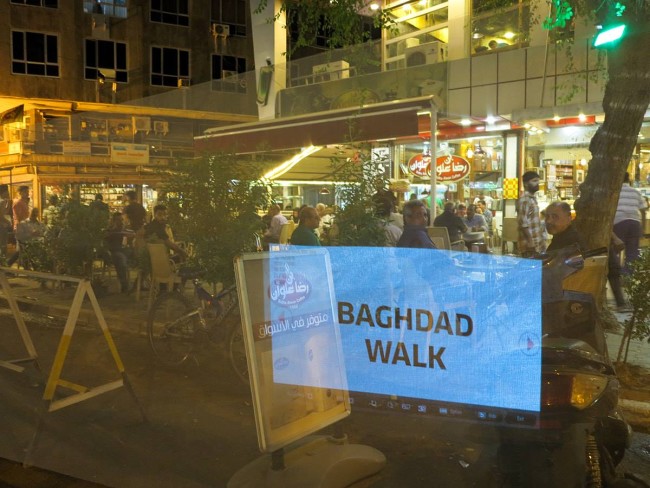
13. Ammar Hussein
Ammar Hussein: Chess (live)In front of Ridha Alwan Coffee
Photo by Christina Werner
Photo by Christina Werner
Photo by Hella Mewis
Photo by Christina Werner
Photo by Christina Werner
Ammar Hussein: Chess (live)In front of Ridha Alwan Coffee
Photo by Christina Werner
Photo by Christina Werner
Photo by Hella Mewis
Photo by Christina Werner
Photo by Christina Werner

12. Muhaned Taha
Muhaned Taha: How LongAt Kahramana Square
Photo by Yasir Razaq/Mahdi Al-Shididy
Photo by Christina Werner
Photo by Hella Mewis
Photo by Christina Werner
Photo by Christina Werner
Muhaned Taha’s installation consisted of a two-metre-high funnel filled with sand and gravel and three paintings arranged as a triangle. The paintings were crowned with the shape of a brain hovering at the rim of the funnel, tied to a bundle of white balloons. In HOW LONG, Tana talks about the connection between dream and reality. The three paintings resemble different dreams, with scenes oscillating between sweet dreams and nightmares. Taha positioned his installation to be the third object in a second, larger triangle connecting his work to two other significant objects in the nearby cityscape. The installation thereby created a dialogue with the popular Kahramana fountain by Mohammed Ghani Hikmat in Kahramana Square, which shows a figure from the story of Ali Baba and the 40 robbers, and a surveillance tower disguised as a statue shaped like a palm tree. The work created a web of associations of how society and our individual mind sets (as depicted by the literal brain) are influenced and shaped by narrations and memory, and how control evolves.
Muhaned Taha: How LongAt Kahramana Square
Photo by Yasir Razaq/Mahdi Al-Shididy
Photo by Christina Werner
Photo by Hella Mewis
Photo by Christina Werner
Photo by Christina Werner
Muhaned Taha’s installation consisted of a two-metre-high funnel filled with sand and gravel and three paintings arranged as a triangle. The paintings were crowned with the shape of a brain hovering at the rim of the funnel, tied to a bundle of white balloons. In HOW LONG, Tana talks about the connection between dream and reality. The three paintings resemble different dreams, with scenes oscillating between sweet dreams and nightmares. Taha positioned his installation to be the third object in a second, larger triangle connecting his work to two other significant objects in the nearby cityscape. The installation thereby created a dialogue with the popular Kahramana fountain by Mohammed Ghani Hikmat in Kahramana Square, which shows a figure from the story of Ali Baba and the 40 robbers, and a surveillance tower disguised as a statue shaped like a palm tree. The work created a web of associations of how society and our individual mind sets (as depicted by the literal brain) are influenced and shaped by narrations and memory, and how control evolves.
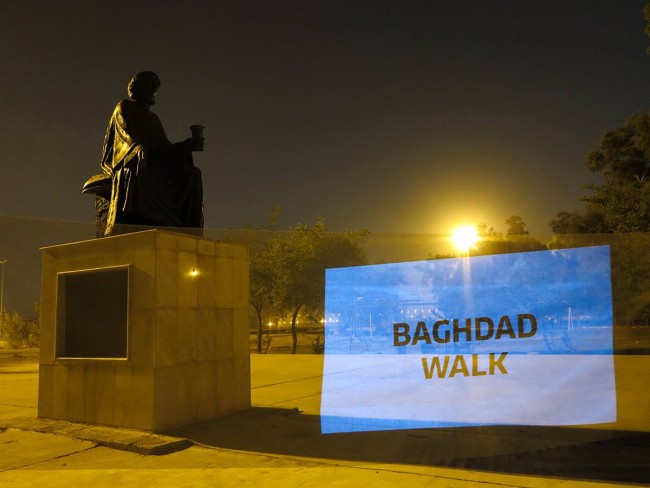
11. Husam Mohammed
Husam Mohammed: ExpressionIn front of the Abu Nawas statue
Photo by Hella Mewis
Photo by Hella Mewis
Photo by Yasir Razaq/Mahdi Al-Shididy
Photo by Hella Mewis
With his participatory work EXPRESSIONS, Husam Mohammed invited the audience to join together in a circle. He then proceeded to address each guest with a personal question, and the participants would answer each question without using words. With EXPRESSIONS, he wanted to challenge the audience and have people rely on their facial expressions, gestures, and body language as a means of communication. Mohammed is very critical of forms of expression used in social media today, such as relying on simplified icons, and he questions what the excessive use of emojis does to our everyday human interactions. The performance took place in front of the Abu Nawas statue, located in the park at the end of the boulevard Abu Nawas. The statue, designed by Ismael Fatteh and erected in 1962, honours the Iraqi poet Abu Nawas (756–814), who was a master of Arabic poetry. In poetry, the complexity and vitality of manifold ways to express human emotions stand in contrast to our reductionist forms of digital communication today. Following the performance, visitors were led back to the street; the exit was marked with a painting of faces on one side that showed lively expressions, and a sculpture resembling a judgment seat on the other side, to remind the visitors that they had the choice.
Husam Mohammed: ExpressionIn front of the Abu Nawas statue
Photo by Hella Mewis
Photo by Hella Mewis
Photo by Yasir Razaq/Mahdi Al-Shididy
Photo by Hella Mewis
With his participatory work EXPRESSIONS, Husam Mohammed invited the audience to join together in a circle. He then proceeded to address each guest with a personal question, and the participants would answer each question without using words. With EXPRESSIONS, he wanted to challenge the audience and have people rely on their facial expressions, gestures, and body language as a means of communication. Mohammed is very critical of forms of expression used in social media today, such as relying on simplified icons, and he questions what the excessive use of emojis does to our everyday human interactions. The performance took place in front of the Abu Nawas statue, located in the park at the end of the boulevard Abu Nawas. The statue, designed by Ismael Fatteh and erected in 1962, honours the Iraqi poet Abu Nawas (756–814), who was a master of Arabic poetry. In poetry, the complexity and vitality of manifold ways to express human emotions stand in contrast to our reductionist forms of digital communication today. Following the performance, visitors were led back to the street; the exit was marked with a painting of faces on one side that showed lively expressions, and a sculpture resembling a judgment seat on the other side, to remind the visitors that they had the choice.
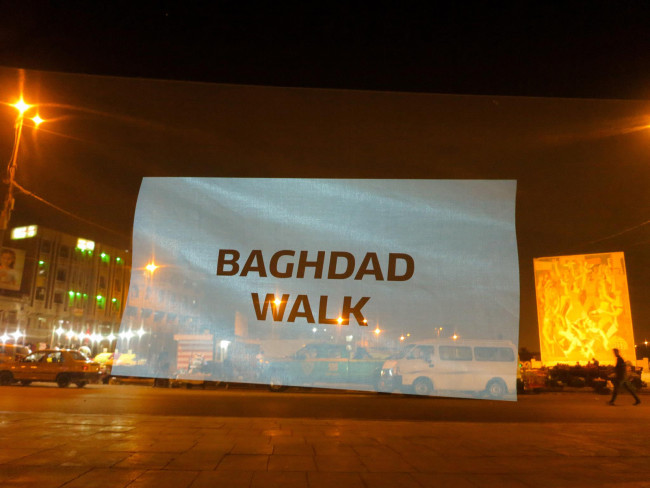
6. Ahmed Al Saad
Ahmed Al Saad: Lady Baghdad. In collaboration with Tabarek Al AtrakchiAt Tayeran Square
Photos by Christina Werner
Ahmed Al Saad: Lady Baghdad. 2018
The video installation LADY BAGHDAD used documentation of an intervention by Ahmed Al Saad in collaboration with Tabarek Al Atrackchi. The pop-art-style video shows a young woman playing the violin in front of the The Freedom Monument, a large-scale mosaic by Faek Hassan at al-Tayaran Square. A guitar player joins the violinist for a spontaneous street concert, while a female artist makes live drawings of the situation. Al Saad’s video captures both the artistic interaction and the urban surroundings and goings-on. For BAGHDAD WALK, Al Saad projected the video at night in front of the monument where the intervention had taken place. Installed on a traffic island, the video screen faced one way, while on the opposite side of the screen, Al Atrackchi installed a canvas with her drawings, capturing the moments of the intervention in another medium. With LADY BAGHDAD, Al Saad wants to encourage women be more present in public life in Baghdad and to increase their visibility in the cityscape. Al-Tayaran Square is an important public space and transportation hub in Baghdad, at the foot of Baghdad’s Alumma Park, opposite Tahrir Square. The mosaic monument Celebration of Victory, by Faek Hassan, erected in the 1960s, is widely visible and depicts a celebrating crowd with women and freed doves. It was the first mosaic in Baghdad representing the people’s desire to live together in peace and harmony. Al Saad references an artwork and a time with a potent emphasis on equality and quality of life.
Ahmed Al Saad: Lady Baghdad. In collaboration with Tabarek Al AtrakchiAt Tayeran Square
Photos by Christina Werner
Ahmed Al Saad: Lady Baghdad. 2018
The video installation LADY BAGHDAD used documentation of an intervention by Ahmed Al Saad in collaboration with Tabarek Al Atrackchi. The pop-art-style video shows a young woman playing the violin in front of the The Freedom Monument, a large-scale mosaic by Faek Hassan at al-Tayaran Square. A guitar player joins the violinist for a spontaneous street concert, while a female artist makes live drawings of the situation. Al Saad’s video captures both the artistic interaction and the urban surroundings and goings-on. For BAGHDAD WALK, Al Saad projected the video at night in front of the monument where the intervention had taken place. Installed on a traffic island, the video screen faced one way, while on the opposite side of the screen, Al Atrackchi installed a canvas with her drawings, capturing the moments of the intervention in another medium. With LADY BAGHDAD, Al Saad wants to encourage women be more present in public life in Baghdad and to increase their visibility in the cityscape. Al-Tayaran Square is an important public space and transportation hub in Baghdad, at the foot of Baghdad’s Alumma Park, opposite Tahrir Square. The mosaic monument Celebration of Victory, by Faek Hassan, erected in the 1960s, is widely visible and depicts a celebrating crowd with women and freed doves. It was the first mosaic in Baghdad representing the people’s desire to live together in peace and harmony. Al Saad references an artwork and a time with a potent emphasis on equality and quality of life.
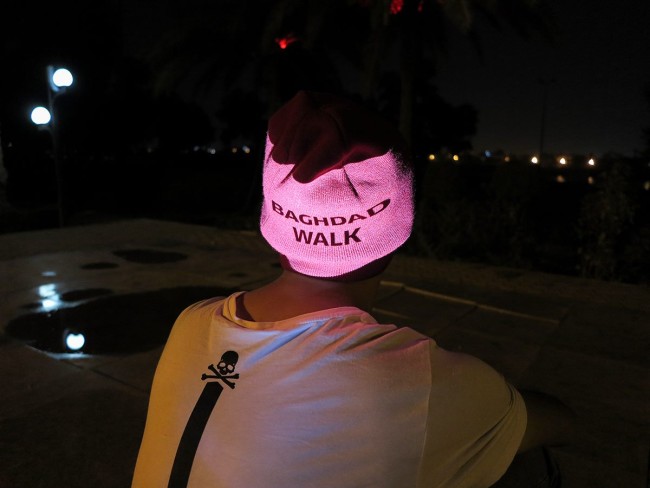
9. Zaid Saad
Zaid Saad: Sanduk (Box)On the riverbank of Tigris
Photo by Christina Werner
Photo by Christina Werner
Photo by Yasir Razaq/Mahdi Al-Shididy
Photo by Yasir Razaq/Mahdi Al-Shididy
Photo by Hella Mewis
The site-specific installation ZANDUK (the Arabic word for ‘box’) by Zaid Saad was made of eleven cardboard moving boxes. These boxes were stacked and ready to be transported to an unknown destination. They were labelled ‘From Iraq to the Sea’ and featured stencils of transportation symbols that Saad designed to signal: don’t kill them, don’t put them in jail, don’t return to sender. The installation was accompanied by a sound piece wherein the audience would listen to voices of Iraqis who shared stories about those others who had left Iraq because of the war. Saad addresses the wave of migration that has taken away many Iraqis in the last few years. Mostly the younger generations have been sent abroad, in a way similar to what governments all over the world do during wartime with national treasures and artefacts, to keep them safe outside the country. Yet people are often sent from one insecure situation to another, or even to their death. Saad lends his artistic voice to the mourning families who stay behind and lose their loved ones one way or another, ripping society off its future foundation. The installation is positioned on the riverbank of the Tigris, which leads towards the sea. In the background, on the other side of the river, the wall of the so-called International Zone, where the national decision-makers reside, is visible.
Zaid Saad: Sanduk (Box)On the riverbank of Tigris
Photo by Christina Werner
Photo by Christina Werner
Photo by Yasir Razaq/Mahdi Al-Shididy
Photo by Yasir Razaq/Mahdi Al-Shididy
Photo by Hella Mewis
The site-specific installation ZANDUK (the Arabic word for ‘box’) by Zaid Saad was made of eleven cardboard moving boxes. These boxes were stacked and ready to be transported to an unknown destination. They were labelled ‘From Iraq to the Sea’ and featured stencils of transportation symbols that Saad designed to signal: don’t kill them, don’t put them in jail, don’t return to sender. The installation was accompanied by a sound piece wherein the audience would listen to voices of Iraqis who shared stories about those others who had left Iraq because of the war. Saad addresses the wave of migration that has taken away many Iraqis in the last few years. Mostly the younger generations have been sent abroad, in a way similar to what governments all over the world do during wartime with national treasures and artefacts, to keep them safe outside the country. Yet people are often sent from one insecure situation to another, or even to their death. Saad lends his artistic voice to the mourning families who stay behind and lose their loved ones one way or another, ripping society off its future foundation. The installation is positioned on the riverbank of the Tigris, which leads towards the sea. In the background, on the other side of the river, the wall of the so-called International Zone, where the national decision-makers reside, is visible.
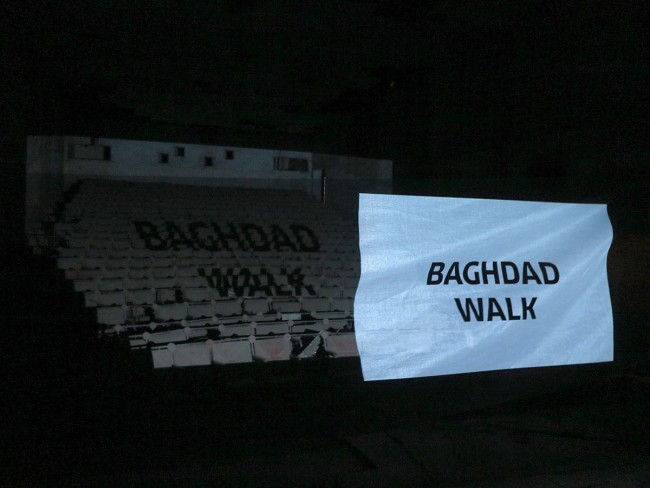
8. Ameen Mokdad
Ameen Mokdad: Sonic InterventionAt Abu Nawas Theater
Photo by Christina Werner
Photo by Hella Mewis
Photo by Yasir Razaq/Mahdi Al-Shididy
Video by Christina Werner
Composer and musician Ameen Mokdad conducted a body-percussion event, using the human body as an instrument to create sounds and vibrations. All participants in the BAGHDAD WALK were invited to join on stage and take part in the performance. The group exercise took place on the stage of the derelict, empty, and unused Abu Nawas Theatre, playing off the architectural features and astounding acoustics of the space. Mokdad is interested in activating social interaction through music; the participants were encouraged to listen to each other, letting the rhythm of their movements fall in sync, creating a small concert with nothing more than an exercise of collaboration. While everyone involved was both on stage and ‘in’ the audience at the same time, they experienced a sense of what the building once was, and what it could be used for again. The Abu Nawas Theatre was once one of the main attractions on the boulevard Abu Nawas, which follows the riverside of the Tigris and mostly used to host film screenings. Because the unresolved property situation today keeps private investors away, the theatre building is currently in the hands of the city administration and mainly used as a waste-disposal site.
Ameen Mokdad: Sonic InterventionAt Abu Nawas Theater
Photo by Christina Werner
Photo by Hella Mewis
Photo by Yasir Razaq/Mahdi Al-Shididy
Video by Christina Werner
Composer and musician Ameen Mokdad conducted a body-percussion event, using the human body as an instrument to create sounds and vibrations. All participants in the BAGHDAD WALK were invited to join on stage and take part in the performance. The group exercise took place on the stage of the derelict, empty, and unused Abu Nawas Theatre, playing off the architectural features and astounding acoustics of the space. Mokdad is interested in activating social interaction through music; the participants were encouraged to listen to each other, letting the rhythm of their movements fall in sync, creating a small concert with nothing more than an exercise of collaboration. While everyone involved was both on stage and ‘in’ the audience at the same time, they experienced a sense of what the building once was, and what it could be used for again. The Abu Nawas Theatre was once one of the main attractions on the boulevard Abu Nawas, which follows the riverside of the Tigris and mostly used to host film screenings. Because the unresolved property situation today keeps private investors away, the theatre building is currently in the hands of the city administration and mainly used as a waste-disposal site.
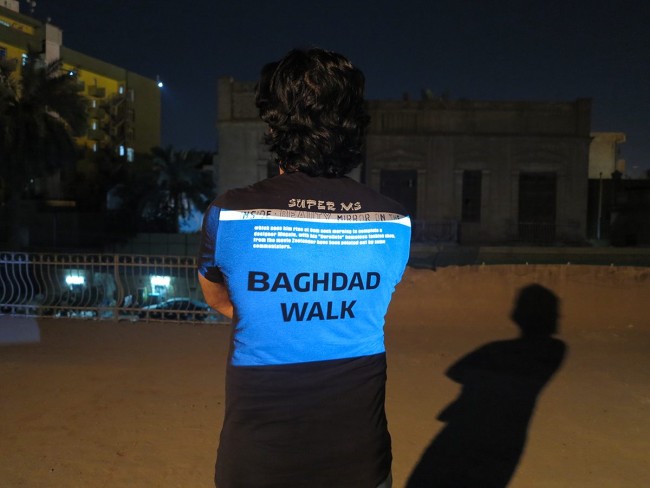
7. Akram Assam
Akram Assam: The History TreeAt Bait Tarkib
Photos by Christina Werner
Photo by Yasir Razaq/Mahdi Al-Shididy
THE HISTORY TREE by Akram Assam was an installation of a tree trunk, and the annual rings on its surface were painted in a variety of colours. Larger coloured ellipses were also drawn into the packed earth surrounding the trunk, resembling planetary orbits. Each coloured ring reflected a historical period of the Republic of Iraq, and the rings on the ground expanded beyond the lifetime of the tree. Each visitor was invited to take a notepad and write down an event that was an important marker in time for them, imagining the relation of the life span of the tree, their individual lifetime, and the historical moment. Placed on the rooftop of the creative arts centre BAIT TARKIB, the tree – when imagined in full growth – seems to blend in with the row of palm trees in the neighbouring yards. It rooted the location of BAIT TARKIB in the neighbourhood and the city’s history. BAIT TARKIB is in a typical Baghdad building, originally a family home that was built in the 1920s, when the Republic of Iraq was founded.
Akram Assam: The History TreeAt Bait Tarkib
Photos by Christina Werner
Photo by Yasir Razaq/Mahdi Al-Shididy
THE HISTORY TREE by Akram Assam was an installation of a tree trunk, and the annual rings on its surface were painted in a variety of colours. Larger coloured ellipses were also drawn into the packed earth surrounding the trunk, resembling planetary orbits. Each coloured ring reflected a historical period of the Republic of Iraq, and the rings on the ground expanded beyond the lifetime of the tree. Each visitor was invited to take a notepad and write down an event that was an important marker in time for them, imagining the relation of the life span of the tree, their individual lifetime, and the historical moment. Placed on the rooftop of the creative arts centre BAIT TARKIB, the tree – when imagined in full growth – seems to blend in with the row of palm trees in the neighbouring yards. It rooted the location of BAIT TARKIB in the neighbourhood and the city’s history. BAIT TARKIB is in a typical Baghdad building, originally a family home that was built in the 1920s, when the Republic of Iraq was founded.
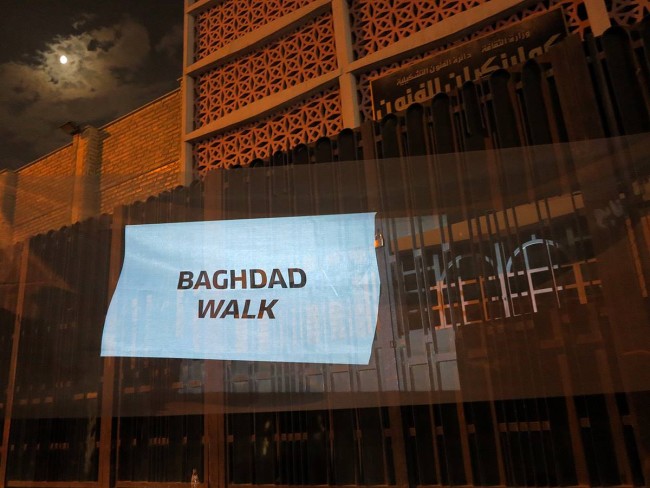
5. Tabarek Al Atrakchi
Tabarek Al Atrakchi: What Is A DreamIn front of the Calouste Gulbenkian Museum/Museum of Modern Art
Photo by Christina Werner
Photo by Anees Amer
Photo by Christina Werner
Photo by Christina Werner
The installation WHAT IS A DREAM by Tabarek Al Atrakchi showed a series of crayon drawings made by street kids, in an installation setting that included an arabana (a kind of wheelbarrow for transporting goods) loaded with water bottles, chewing gum, and cleaning materials – all items that are typically sold by children on the street. Al Atrakchi sought out the children in the city streets and asked them to draw their dreams and to tell her what those dreams were about. WHAT IS A DREAM depicts the hopes and future visions of the children. The dreams range from having a boat to work on the river and becoming a photographer or a doctor to travelling to an island in the turquoise sea. Al Atrakchi criticises child labour and the living conditions of many street kids in Iraq by looking into their wishes for a future that contrasts their everyday situation. She presented her artwork in front of the Museum of Modern Art in Baghdad, the first exhibition space for modern art in Iraq, built in 1962 and also known as ‘The Gulbenkian Hall’. The place embodies a collision of worlds that is typical for Baghdad: the governmental, state-run art museum is located in the midst of a bazaar that gathers small businesses, day labourers, and the poorest of the city, from thieves to street kids. The children’s drawings on the street stand in an imagined dialogue with the art inside the galleries, while they show how far removed one reality is from the other.
Tabarek Al Atrakchi: What Is A DreamIn front of the Calouste Gulbenkian Museum/Museum of Modern Art
Photo by Christina Werner
Photo by Anees Amer
Photo by Christina Werner
Photo by Christina Werner
The installation WHAT IS A DREAM by Tabarek Al Atrakchi showed a series of crayon drawings made by street kids, in an installation setting that included an arabana (a kind of wheelbarrow for transporting goods) loaded with water bottles, chewing gum, and cleaning materials – all items that are typically sold by children on the street. Al Atrakchi sought out the children in the city streets and asked them to draw their dreams and to tell her what those dreams were about. WHAT IS A DREAM depicts the hopes and future visions of the children. The dreams range from having a boat to work on the river and becoming a photographer or a doctor to travelling to an island in the turquoise sea. Al Atrakchi criticises child labour and the living conditions of many street kids in Iraq by looking into their wishes for a future that contrasts their everyday situation. She presented her artwork in front of the Museum of Modern Art in Baghdad, the first exhibition space for modern art in Iraq, built in 1962 and also known as ‘The Gulbenkian Hall’. The place embodies a collision of worlds that is typical for Baghdad: the governmental, state-run art museum is located in the midst of a bazaar that gathers small businesses, day labourers, and the poorest of the city, from thieves to street kids. The children’s drawings on the street stand in an imagined dialogue with the art inside the galleries, while they show how far removed one reality is from the other.
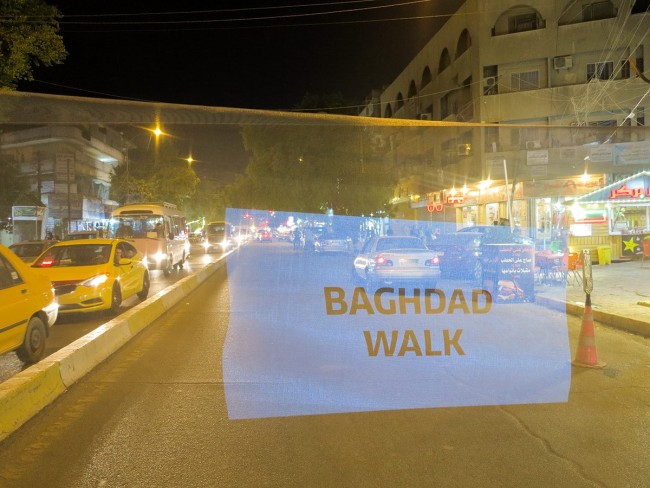
3. Ameen Mokdad
Ameen Mokdad: 1000 Iraqui Lip PrintsAt Karada Ridha Alwan
Photos by Christina Werner
Videos by Christina Werner
Ameen Mokdad collected 1000 empty water bottles that littered the streets of Baghdad with his own hands and formed a large sphere from the waste material. This huge plastic ball was returned to the street, placed in the middle of Karada Dajel in front of Ridha Alwan Café and blocking traffic. 1000 IRAQI LIP PRINTS are 1000 pieces of evidence of polluting crime happening every second in Baghdad, the lip prints tracing back to the very DNA of individual involvement. With his intervention, Mokdad wanted to create awareness of the enormous amount of waste in Baghdad’s streets and how this is influenced by our understanding of which spaces we care for and how habits and responsibility for communal spaces are intertwined. The intervention took place on Karada Dajel, a thriving shopping street at the heart of the city of Karada, in front of the art cafe Ridha Alwan, where socially diverse clientele meet under one roof. The spot seemed ideal for eliciting diverse reactions from a mixed crowd in a quite everyday situation. To Mokdad, it was important that the audience comprised inhabitants of Baghdad, who can achieve change if they want.
Ameen Mokdad: 1000 Iraqui Lip PrintsAt Karada Ridha Alwan
Photos by Christina Werner
Videos by Christina Werner
Ameen Mokdad collected 1000 empty water bottles that littered the streets of Baghdad with his own hands and formed a large sphere from the waste material. This huge plastic ball was returned to the street, placed in the middle of Karada Dajel in front of Ridha Alwan Café and blocking traffic. 1000 IRAQI LIP PRINTS are 1000 pieces of evidence of polluting crime happening every second in Baghdad, the lip prints tracing back to the very DNA of individual involvement. With his intervention, Mokdad wanted to create awareness of the enormous amount of waste in Baghdad’s streets and how this is influenced by our understanding of which spaces we care for and how habits and responsibility for communal spaces are intertwined. The intervention took place on Karada Dajel, a thriving shopping street at the heart of the city of Karada, in front of the art cafe Ridha Alwan, where socially diverse clientele meet under one roof. The spot seemed ideal for eliciting diverse reactions from a mixed crowd in a quite everyday situation. To Mokdad, it was important that the audience comprised inhabitants of Baghdad, who can achieve change if they want.
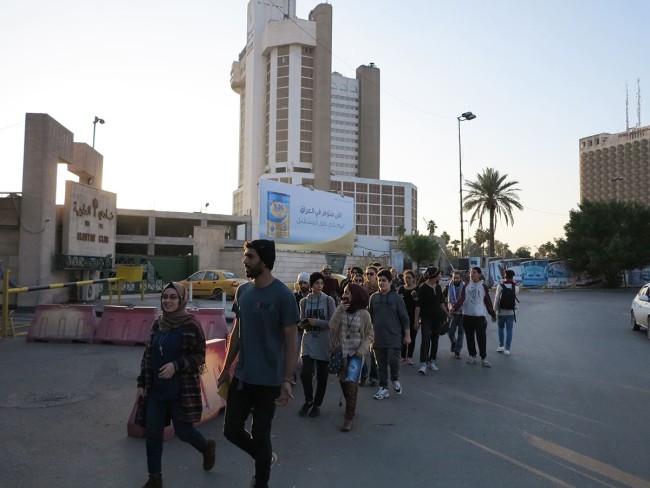
Baghdad Walk – Follow us
The two-day walk started at the Iraqi Independent Film Centre, led along Al Rasheed Street to Midan Square, connected Karada Dajel with Tayeran Square and Tahrir Square; it led from Tarkib Baghdad Contemporary Arts Institute to the Abu Nawas Theater, spread along the Abu Nawas riverside and meandered through Karada neighborhood from Kahramana Square to Ridah Alwan Coffeeshop.
Please find the documentation of each of the artist’s interventions on the following pages.
Photo by Anees Amer
Photo by Anees Amer
Photo by Christina Werner
Photo by Anees Amer
Photo by Yasir Razaq/Mahdi Al-Shididy
Photo by Anees Amer
Photo by Anees Amer
Photo by Yasir Razaq/Mahdi Al-Shididy
Photo by Anees Amer
Photo by Hella Mewis
Photo by Christina Werner
Photo by Hella Mewis
Photo by Yasir Razaq/Mahdi Al-Shididy
Photo by Christina Werner
Photo by Hella Mewis
Photo by Hella Mewis
Photo by Christina Werner
Photo by Hella Mewis
The two-day walk started at the Iraqi Independent Film Centre, led along Al Rasheed Street to Midan Square, connected Karada Dajel with Tayeran Square and Tahrir Square; it led from Tarkib Baghdad Contemporary Arts Institute to the Abu Nawas Theater, spread along the Abu Nawas riverside and meandered through Karada neighborhood from Kahramana Square to Ridah Alwan Coffeeshop.
Please find the documentation of each of the artist’s interventions on the following pages.
Photo by Anees Amer
Photo by Anees Amer
Photo by Christina Werner
Photo by Anees Amer
Photo by Yasir Razaq/Mahdi Al-Shididy
Photo by Anees Amer
Photo by Anees Amer
Photo by Yasir Razaq/Mahdi Al-Shididy
Photo by Anees Amer
Photo by Hella Mewis
Photo by Christina Werner
Photo by Hella Mewis
Photo by Yasir Razaq/Mahdi Al-Shididy
Photo by Christina Werner
Photo by Hella Mewis
Photo by Hella Mewis
Photo by Christina Werner
Photo by Hella Mewis
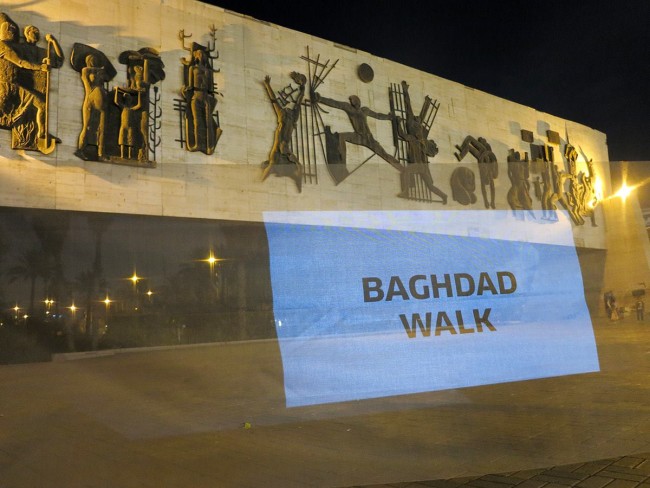
4. Loay Al Hadhary
Loay Al Hadhary: Not For SaleAt Tahrir Square
Photo by Yasir Razaq/Mahdi Al-Shididy
Photo by Yasir Razaq/Mahdi Al-Shididy
Photo by Yasir Razaq/Mahdi Al-Shididy
Photo by Anees Amer
Photo by Anees Amer
Photo by Hella Mewis
The sculpture NOT FOR SALE by Loay Al Hadhary shows a Yazidi woman wrapped in plastic foil, which represents the traditional Abaya robe. Underneath the semi-transparent veil, her naked skin is covered with marks, inscriptions of newspaper clippings and symbols that refer to slavery and misuse. Her hands are raised, tearing a chain apart. The statue stands for the fate of thousands of Yazidi women, kidnapped, enslaved, sold, and raped by members of the Islamic State (IS) during the years of genocide of the Yazidi community in Iraq. Al Hadhari positioned the sculpture underneath the Freedom Monument, known as Nasb al-Hurriyah, by sculptor Jawad Saleem and architect Rifat Chadirji, at Tahrir Square (Liberation Square), where people have historically held demonstrations. The monument was unveiled in 1961; it expresses the struggle of the Iraqi people before the 14 July Revolution in 1958 and commemorates the establishment of the Republic of Iraq. The monument symbolises the people’s strife against tyranny, a struggle that hasn’t been put to an end, fought again in the present day. IS has been pursuing a genocidal campaign against the Yazidi of Sinjar in northern Iraq, but to date, no perpetrator has been held accountable for the genocide.
Loay Al Hadhary: Not For SaleAt Tahrir Square
Photo by Yasir Razaq/Mahdi Al-Shididy
Photo by Yasir Razaq/Mahdi Al-Shididy
Photo by Yasir Razaq/Mahdi Al-Shididy
Photo by Anees Amer
Photo by Anees Amer
Photo by Hella Mewis
The sculpture NOT FOR SALE by Loay Al Hadhary shows a Yazidi woman wrapped in plastic foil, which represents the traditional Abaya robe. Underneath the semi-transparent veil, her naked skin is covered with marks, inscriptions of newspaper clippings and symbols that refer to slavery and misuse. Her hands are raised, tearing a chain apart. The statue stands for the fate of thousands of Yazidi women, kidnapped, enslaved, sold, and raped by members of the Islamic State (IS) during the years of genocide of the Yazidi community in Iraq. Al Hadhari positioned the sculpture underneath the Freedom Monument, known as Nasb al-Hurriyah, by sculptor Jawad Saleem and architect Rifat Chadirji, at Tahrir Square (Liberation Square), where people have historically held demonstrations. The monument was unveiled in 1961; it expresses the struggle of the Iraqi people before the 14 July Revolution in 1958 and commemorates the establishment of the Republic of Iraq. The monument symbolises the people’s strife against tyranny, a struggle that hasn’t been put to an end, fought again in the present day. IS has been pursuing a genocidal campaign against the Yazidi of Sinjar in northern Iraq, but to date, no perpetrator has been held accountable for the genocide.
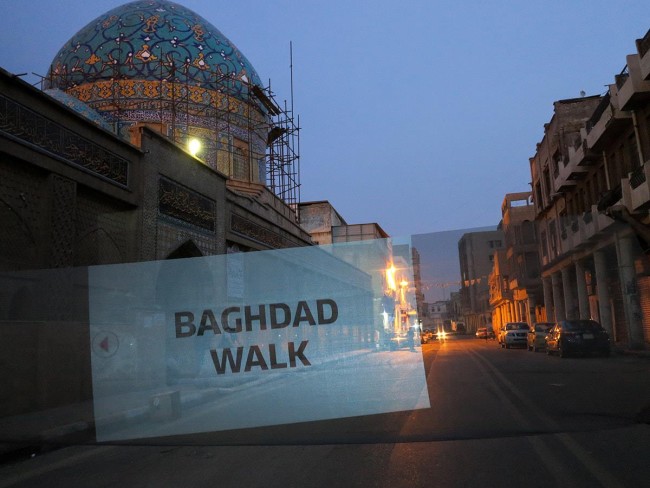
2. Hussain Muttar
Hussain Muttar: 1000 Stories & A StoryAt Al Rasheed Street
Photo by Christina Werner
Photo by Christina Werner
Photo by Yasir Razaq/Mahdi Al-Shididy
Photo by Christina Werner
Photo by Hella Mewis
Photo by Christina Werner
Photos by Christina Werner
Hussain Muttar’s 1000 STORIES AND A STORY is based on his on-going research. He collects historical photographs of Baghdad city views from archives as well as from private households and reconstructs the images in the present day, photographing the same location from the same angles and perspectives. For BAGHDAD WALK, he chose to present comparisons of architectural landscapes, landmarks, and sights in Baghdad. The work juxtaposes past and present, installing large posters of the historical and current photographs of facades and buildings of Al Rasheed Street along that very street, covering a distance of 2.7 kilometres from Zinek Bridge to Midan Square. Muttar’s ambition is to raise awareness of Baghdas architectural heritage and to encourage residents to see their neighbourhood’s rich history. He involves the local community by collecting the photos and stories about the buildings and their use and function, and he depends on the cooperation of residents to access rooftops and sites in order to reconstruct the original perspectives. For BAGHDAD WALK, Muttar chose to present ten sites on Al Rasheed Street, not just to highlight the richness of architectural tradition, but also to emphasise how architecturally and historically valuable treasures dwindle away through human misuse and neglect.
Hussain Muttar: 1000 Stories & A StoryAt Al Rasheed Street
Photo by Christina Werner
Photo by Christina Werner
Photo by Yasir Razaq/Mahdi Al-Shididy
Photo by Christina Werner
Photo by Hella Mewis
Photo by Christina Werner
Photos by Christina Werner
Hussain Muttar’s 1000 STORIES AND A STORY is based on his on-going research. He collects historical photographs of Baghdad city views from archives as well as from private households and reconstructs the images in the present day, photographing the same location from the same angles and perspectives. For BAGHDAD WALK, he chose to present comparisons of architectural landscapes, landmarks, and sights in Baghdad. The work juxtaposes past and present, installing large posters of the historical and current photographs of facades and buildings of Al Rasheed Street along that very street, covering a distance of 2.7 kilometres from Zinek Bridge to Midan Square. Muttar’s ambition is to raise awareness of Baghdas architectural heritage and to encourage residents to see their neighbourhood’s rich history. He involves the local community by collecting the photos and stories about the buildings and their use and function, and he depends on the cooperation of residents to access rooftops and sites in order to reconstruct the original perspectives. For BAGHDAD WALK, Muttar chose to present ten sites on Al Rasheed Street, not just to highlight the richness of architectural tradition, but also to emphasise how architecturally and historically valuable treasures dwindle away through human misuse and neglect.
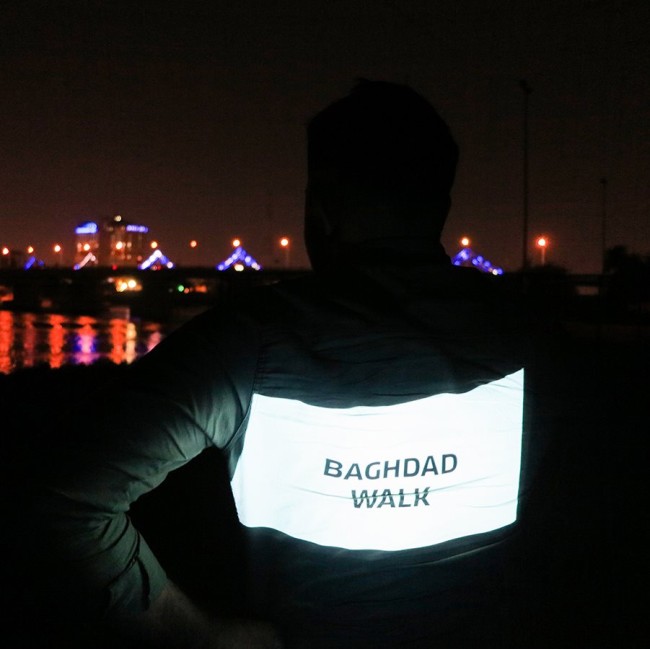
1. Ammar Hussein
Ammar Hussein: Tree of HeavenAt the Iraqi Independent Film Center (IIFC)
Photo by Yasir Razaq/Mahdi Al-Shididy
Photo by Yasir Razaq/Mahdi Al-Shididy
Photo by Yasir Razaq/Mahdi Al-Shididy
Photo by Yasir Razaq/Mahdi Al-Shididy
Photo by Yasir Razaq/Mahdi Al-Shididy
Photo by Anees Amer
TREE OF HEAVEN by Ammar Hussein presented five montage works combining different types of processed wood on canvas. The works were arranged on the ground, set into the soil of a former yard. Hussain highlights the significance of the medium of wood and its importance to humanity, both in our built environment and in narrative traditions. The installation was presented in the yard of the Iraqi Independent Film Center (IIFC), a shanasheel building constructed in the early 1920s on Al Rasheed Street. The IIFC plays a pioneering role in the independent arts and creative industries in Baghdad. The building is currently under renovation, and its traditional shanasheel features, for instance, the finely crafted bay windows, were once completed with intricate wooden latticework and ornate stained glass, which allow inhabitants to see outside without being seen.
Ammar Hussein: Tree of HeavenAt the Iraqi Independent Film Center (IIFC)
Photo by Yasir Razaq/Mahdi Al-Shididy
Photo by Yasir Razaq/Mahdi Al-Shididy
Photo by Yasir Razaq/Mahdi Al-Shididy
Photo by Yasir Razaq/Mahdi Al-Shididy
Photo by Yasir Razaq/Mahdi Al-Shididy
Photo by Anees Amer
TREE OF HEAVEN by Ammar Hussein presented five montage works combining different types of processed wood on canvas. The works were arranged on the ground, set into the soil of a former yard. Hussain highlights the significance of the medium of wood and its importance to humanity, both in our built environment and in narrative traditions. The installation was presented in the yard of the Iraqi Independent Film Center (IIFC), a shanasheel building constructed in the early 1920s on Al Rasheed Street. The IIFC plays a pioneering role in the independent arts and creative industries in Baghdad. The building is currently under renovation, and its traditional shanasheel features, for instance, the finely crafted bay windows, were once completed with intricate wooden latticework and ornate stained glass, which allow inhabitants to see outside without being seen.
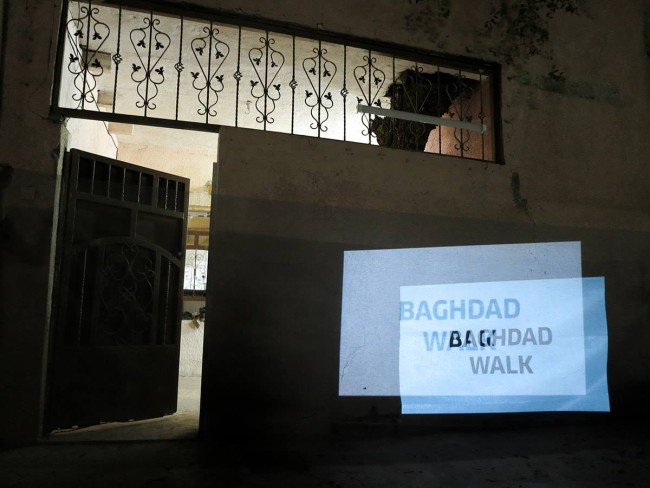
10. Atef Al Jaffal
Atef Al Jaffal: CircleStreet behind Shataa Al Jameel
Photos by Christina Werner
CIRCLE is a mural by Atef Al Jaffal, a young designer who painted a circle on the exterior wall of an ordinary one-family house and integrated eight images on plates, designed in contrasting colours, with the circle. Each design mirrors disputed issues within the Iraqi community. The images are ambivalent: a veiled woman stands for the discrepancy of tradition versus modern life, intertwined hands point to topics of gender and love, walls and roadblocks tackle questions of danger and control. Al Jaffal sees the country of Iraq as one big family. He thinks that to be able to live a normal life, the people should start to learn to respect each other and allow for different ways of being part of a community. The artist chose this ordinary family home in order to render a clear connection between the bonds of family life and how we operate in the larger community – to raise the question of how our domestic intimacies, responsibilities, and behaviour can influence our participation in society as a whole.
Atef Al Jaffal: CircleStreet behind Shataa Al Jameel
Photos by Christina Werner
CIRCLE is a mural by Atef Al Jaffal, a young designer who painted a circle on the exterior wall of an ordinary one-family house and integrated eight images on plates, designed in contrasting colours, with the circle. Each design mirrors disputed issues within the Iraqi community. The images are ambivalent: a veiled woman stands for the discrepancy of tradition versus modern life, intertwined hands point to topics of gender and love, walls and roadblocks tackle questions of danger and control. Al Jaffal sees the country of Iraq as one big family. He thinks that to be able to live a normal life, the people should start to learn to respect each other and allow for different ways of being part of a community. The artist chose this ordinary family home in order to render a clear connection between the bonds of family life and how we operate in the larger community – to raise the question of how our domestic intimacies, responsibilities, and behaviour can influence our participation in society as a whole.
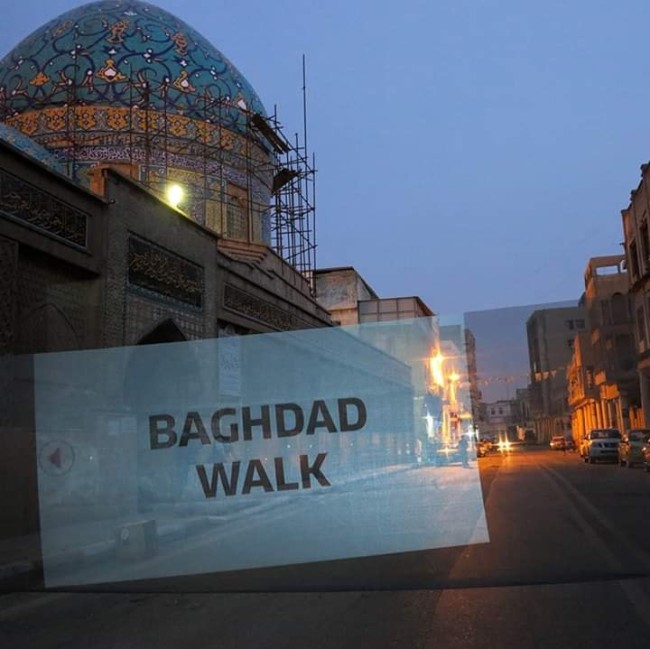
Baghdad Walk I
BAGHDAD WALKGroup exhibition in public space
Baghdad Walk is a group exhibition by emerging Iraqi artists presented in the public space and in different locations in Karada, Baghdad. The walk starts at Iraqi Independent Film Centre, leads along Al Rasheed Street to Midan Square, connects Tayeran Square, Tahrir Square and Kahramana Square, spreads along the Abu Nawas riverside and meanders through Karada neighborhood, featuring time-based works and interventions.
Baghdad Walk is an exhibition and a narrative tour of the city. The participating artists connect their works with the specific locations, introducing background information on site. Manifold stories about the city of Baghdad are told and retold anew through the artists’ perspectives and the encounters they create.
Participants:
Ahmed Al Saad, Tabarek Al Atrakchi, Akram Assam, Ameen Mokdad, Ammar Hussein, Atef Al Jaffal, Hussam Mohammed, Hussain Muttar, Loay Al Hadhary, Muhaned Taha, Zaid Saad.
—
Please find the project’s bilingual (Englisch-Arabic) website here.
—
Baghdad Walk is the result of a workshop series Arts Seminar in Baghdad, conceived and organised by the Goethe-Institut Irak, in collaboration with the Institut für Raumexperimente (Institut for Spatial Experiments), Berlin and hosted by TARKIB Baghdad Contemporary Arts Institute in BAIT TARKIB. Hosted by TARKIB Baghdad Contemporary Arts Institute. Choreographed by Hella Mewis and Christina Werner
BAGHDAD WALKGroup exhibition in public space
Baghdad Walk is a group exhibition by emerging Iraqi artists presented in the public space and in different locations in Karada, Baghdad. The walk starts at Iraqi Independent Film Centre, leads along Al Rasheed Street to Midan Square, connects Tayeran Square, Tahrir Square and Kahramana Square, spreads along the Abu Nawas riverside and meanders through Karada neighborhood, featuring time-based works and interventions.
Baghdad Walk is an exhibition and a narrative tour of the city. The participating artists connect their works with the specific locations, introducing background information on site. Manifold stories about the city of Baghdad are told and retold anew through the artists’ perspectives and the encounters they create.
Participants:
Ahmed Al Saad, Tabarek Al Atrakchi, Akram Assam, Ameen Mokdad, Ammar Hussein, Atef Al Jaffal, Hussam Mohammed, Hussain Muttar, Loay Al Hadhary, Muhaned Taha, Zaid Saad.
—
Please find the project’s bilingual (Englisch-Arabic) website here.
—
Baghdad Walk is the result of a workshop series Arts Seminar in Baghdad, conceived and organised by the Goethe-Institut Irak, in collaboration with the Institut für Raumexperimente (Institut for Spatial Experiments), Berlin and hosted by TARKIB Baghdad Contemporary Arts Institute in BAIT TARKIB. Hosted by TARKIB Baghdad Contemporary Arts Institute. Choreographed by Hella Mewis and Christina Werner
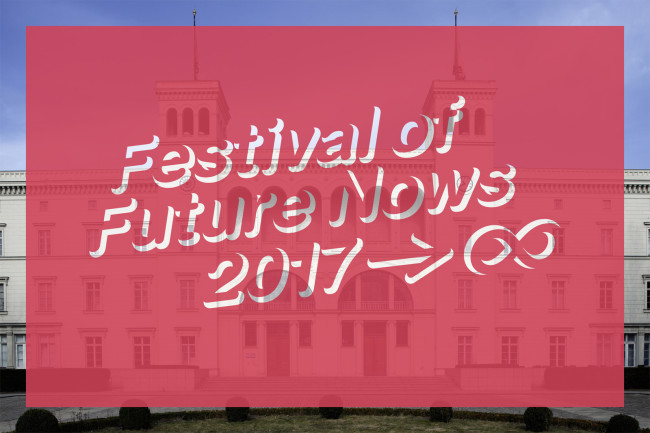
Festival of Future Nows 2017
Festival of Future Nows 2017 → ∞; Trailer; Design: BASICS09
Festival of Future Nows 2017 → ∞
September 14–17 2017
A cooperation by the Institut für Raumexperimente
and Nationalgalerie – Staatliche Museen zu Berlin
Hamburger Bahnhof – Museum für Gegenwart – Berlin
Staatliche Museen zu Berlin
Invalidenstraße 50 – 51 | 10557 Berlin
www.smb.museum/hbf
Opening: 14 September 2017, 7 pm
Welcome Address: 20 h
Udo Kittelmann, Director of the Nationalgalerie Staatliche Museen zu Berlin
Olafur Eliasson, Artist and Director of the Institut für Raumexperimente
Hans Düttmann, Deputy Chairman of the Freunde der Nationalgalerie
Rita Werneyer, Spokesperson for Culture, Volkswagen Aktiengesellschaft
Opening Hours
Thu, 14.09.: 19 pm – 11 pm
Fri, 15.09.: 10 am – 11 pm
Sat, 16.09.: 11 am – 11 pm
Sun, 17.09.: 11 am – 11 pm
Free admission.
The second edition of the Festival of Future Nows will take place during Berlin Art Week 2017 at Hamburger Bahnhof – Museum für Gegenwart – Berlin. As with the festival’s first edition in 2014 this year’s cooperation between the Nationalgalerie – Staatliche Museen zu Berlin Olafur Eliasson and his Institut für Raumexperimente e.V. brings together different works by over hundred international artists.
Over a four-day period a dense cloud of creative energy and spontaneity will erupt and break free like a Berlin punk-opera-weather-system accumulating and hovering over Hamburger Bahnhof – Museum für Gegenwart – Berlin. The festival program invites a young and diverse crowd to engage with the unpredictable nature of performance, action, music, interventions, dance experiments, movement and perception exercises. Individual projects take place in parallel or overlap the deliberate abundance forces visitors to take a nonlinear route through the festival. The principle of density and diversity’ is applied purposefully. The Festival of Future Nows 2017 → ∞ brings together an inspired mix of emerging practitioners with renowned artists under the banner of ‘The challenge is in the moment the time is always now’ (James Baldwin).
From 2009 to 2014 Olafur Eliasson led the Institut für Raumexperimente (Institute for Spatial Experiments), which was affiliated with the Berlin University of the Arts, together with Christina Werner and Eric Ellingsen. Working with the participants in the internationally highly regarded project, they experimented with new approaches to arts education and research. To mark the project’s end in autumn 2014, the institute created the Festival of Future Nows at the Neue Nationalgalerie in Berlin, just before the iconic building by Ludwig Mies van der Rohe closed for renovation. The second edition of the festival continues with a similar approach and is based on the broad artistic network around the Institut für Raumexperimente.
Choreographed by Sven Beckstette, Natalie Keppler, Christina Werner
The project is supported by Volkswagen Aktiengesellschaft and is made possible by Freunde der Nationalgalerie.
Festival of Future Nows 2017 → ∞; Trailer; Design: BASICS09
Festival of Future Nows 2017 → ∞
14. – 17. September 2017
Eine Kooperation des Instituts für Raumexperimente
und der Nationalgalerie – Staatliche Museen zu Berlin
Hamburger Bahnhof – Museum für Gegenwart – Berlin
Staatliche Museen zu Berlin
Invalidenstraße 50 – 51 | 10557 Berlin
www.smb.museum/hbf
Eröffnung: 14. September 2017, 19 Uhr
Begrüßung: 20 Uhr
Udo Kittelmann, Direktor der Nationalgalerie – Staatliche Museen zu Berlin
Hans Düttmann, Stellvertretender Vorsitzender der Freunde der Nationalgalerie
Rita Werneyer, Sprecherin Kultur, Volkswagen Aktiengesellschaft
Olafur Eliasson, Gründungsdirektor des Instituts für Raumexperimente, Berlin
Öffnungszeiten
Do, 14.09.: 19 – 23 Uhr
Fr, 15.09.: 10 – 23 Uhr
Sa, 16.09.: 11 – 23 Uhr
So, 17.09.: 11 – 23 Uhr
Der Eintritt zum Festival ist frei.
Zur Berlin Art Week 2017 findet im Hamburger Bahnhof – Museum für Gegenwart – Berlin, das zweite Festival of Future Nows statt. Die diesjährige Kooperation zwischen der Nationalgalerie – Staatliche Museen zu Berlin, Olafur Eliasson und seinem Institut für Raumexperimente e.V. bringt – wie schon die erste Ausgabe des Festivals 2014 – Arbeiten von über hundert internationalen Künstlerinnen und Künstlern zusammen.
Vom 14. bis 17. September 2017 entlädt sich eine dichte Wolkenformation kreativer Energie und Informalität über dem Hamburger Bahnhof, schwebt wie ein Berliner Punk-Opern-Wetterleuchten über dem Museum, um sich schließlich wieder aufzulösen. Das Festivalprogramm zeigt in der historischen Halle und rund um den Hamburger Bahnhof junge und diverse Positionen, die das umkalkulierbare Potenzial von Formaten wie Performance, Happening, Experiment und Intervention sowie dem Spiel mit Bewegung und Wahrnehmung ausloten. Ein gezieltes Überangebot verführt Besucher*innen, den Festival-Parcours nicht-linearzu entdecken, „Dichte und Diversität“ sind bewusst gewählte Prinzipien. Das Festival of Future Nows 2017 → ∞ bringt unerprobte und inspirierende künstlerische Positionen nein Zusammenspiel mit einer Reihe bekannterer Stimmen, getreu dem Motto „The challenge is in the moment, the time is always now“ (James Baldwin).
Von 2009 bis 2014 leitete Olafur Eliasson zusammen mit Eric Ellingsen und Christina Werner das Institut für Raumexperimente, das an der Universität der Künste Berlin angeschlossen war. Das international hoch angesehene Projekt experimentierte mit neuen Ansätzen in der künstlerischen Ausbildung und Forschung. Um das Ende des Modellstudiengangs zu markieren, fand im Herbst 2014 das Festival of Future Nows in der Neuen Nationalgalerie in Berlin statt, bevor das ikonische Gebäude von Ludwig Mies van der Rohe für die Generalsanierung geschlossen wurde. Die nun anstehende zweite Ausgabe des Festivals führt den spontanen Geist weiter und fußt auf dem weiten Netzwerk künstlerischer Positionen rund um das Institut für Raumexperimente.
Choreografiert von Sven Beckstette, Natalie Keppler, Christina Werner
Das Projekt wird unterstützt durch die Volkswagen Aktiengesellschaft und ermöglicht durch die Freunde der Nationalgalerie.
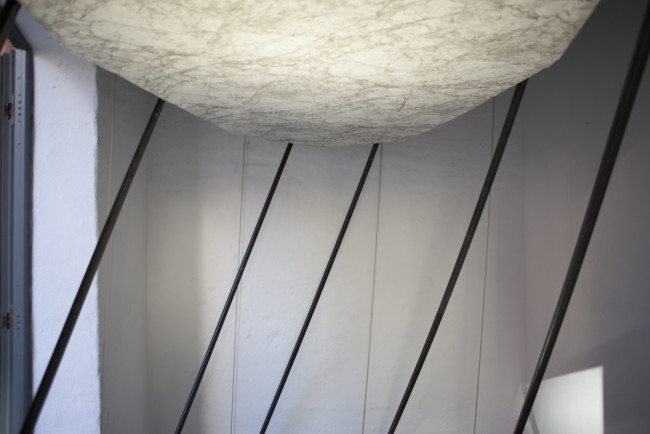
Elise Eeraerts: Complementary Volumes
In complementary volumes, the dimensions of two spatial components are determined by one another’s presence. A large, opaque object is supported by a frame surrounding it, and the volume of the frame is in turn dependent on and defined by the presence of the object inside. Thus, both components balance each other in a tension that is immediately palpable to the visitor.
In complementary volumes, the dimensions of two spatial components are determined by one another’s presence. A large, opaque object is supported by a frame surrounding it, and the volume of the frame is in turn dependent on and defined by the presence of the object inside. Thus, both components balance each other in a tension that is immediately palpable to the visitor.
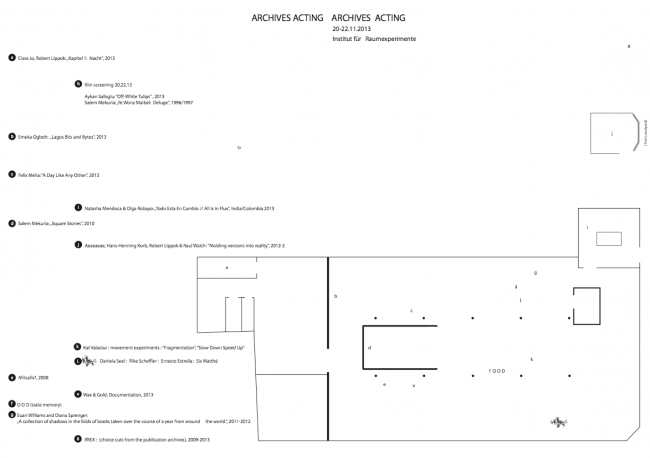
Archives Acting
Archives Acting is an exhibition curated on occasion of the Archives Works Marathon and hosted at the Institut für Raumexperimente and the Grey Sheep project housed at Studio Olafur Eliasson.
Archives Acting is choreographed by Eric Ellingsen and Christina Werner with contributions by Aeaeaeae, Hans-Henning Korb, Robert Lippok, and Raul Walch; Clara Jo and Robert Lippok; Salem Mekuria; Felix Melia; Natasha Mendonca and Olga Robayo; Netsa Art Village, Mihret Kebede, and Robel Temesgen; Emeka Ogboh; Elvira Dyangani Ose and Pere Ortín; Aykan Safoǧlu; Daniela Seel, Rike Scheffler, Ernesto Estrella, and Sis Matthé; Diana Sprenger and Euan Williams; and Kat Válastur.
Aeaeaeae, Hans-Henning Korb, Robert Lippok, and Raul Walch
Molding Versions into Reality, 2012-2013
Everything is knot together here. Everything hanging here comes from Ethiopia, even the things that come from China, and this is reality. This is the sound of reality snared and knotted together from stories and streets and markets and roundabouts in Addis Ababa. This is archive’s opposite, a moment of chaotic similarities. A sound installation as part of the Grey Sheep project.
Tainá Guedes, Asako Iwama, Lauren Maurer, and Lynn Peemoeller
f : O O D, 2013
Served in the context of the marathon days, these taste memory experiments, recipes, menus, and thoughts are provided by Tainá Guedes, Asako Iwama, Lauren Maurer, and Lynn Peemoeller. Menu designed by Thomas Meyer.
Clara Jo and Robert Lippok
24h Dahlem, Kapitel 1: Nacht, 2013
24h Dahlem centres on the controversial re-location of the ethnographic collections of the Dahlem Museums to the future site of the Humboldt Forum in Berlin’s city centre. Combining material from two archives within the Ethnological Museum and the Museum for Asian Art, the resulting large-scale video installations are presented in three chapters in the Dahlem Museum. 24h Dahlem was produced in the context of the Humboldt Lab Dahlem, a project of the German Federal Cultural Foundation and the Prussian Cultural Heritage Foundation.
Director: Clara Jo; sound design & audio archive composition: Robert Lippok; director of photography: Michael Laakmann
Felix Melia
A Day Like Any Other, 2013
A Day Like Any Other is a video work comprised of appropriated video and audio from the Aquis Bryant film Hood 2 Hood: The Blockumentary and Samuel Beckett’s Endgame. The video draws a comparison between the repetitive, cyclical nature of events in Beckett’s play and the similarly recurrent explanations and stories of ‘real’ life in Hood 2 Hood, stories that allude to the sedentary metaphysics and social immobility imposed upon its protagonists. The words ‘all day everyday’ literally encircle the imagery of the work. A commonly employed assertion within the appropriated footage, these words describe a refusal to give in, while highlighting the limited dynamic of the environments the protagonists inhabit.
Salem Mekuria
Ye Wonz Maibel: Deluge, 1996/1997
Ye Wonz Maibel: Deluge is a personal visual meditation on history, conflict, and the roads to reconciliation. It is a tale of love and betrayal, of idealism and the lure of power. It is a memorial to a brother who disappeared and a best friend, executed. It is a story of the Ethiopian students, their ‘revolution’, and its aftermath – a brutal military dictatorship. Ye Wonz Maibel: Deluge contemplates the role of the individual in perpetuating national tragedies – be that famine, war, or political terror – by re-visiting family tragedies in Ethiopia. Focusing on and searching through her own history, Mekuria sought personal experiences that illuminated universal truths. The film offers tools for reflection in order to look forward to a future in which responsibility and choice inform our conduct.
Salem Mekuria
Square Stories, 2010
Square Stories is a triptych video installation. Maskal Square (Revolution Square, or just ‘the Square’), located in the centre of Addis Ababa, Ethiopia, is a massive concrete expanse framed by permanent bleachers. It is the lowest point in the city: everything cascades into the Square. Everything big that happens in the city takes place there. The Square is also a site of commemoration, anchored by two museums that offer stable, corporealised narratives of the city and the nation. Square Stories offers a way of bearing witness to these multiple, fragmentary histories. It presents Maskal Square both as place and metaphor culled from a childhood in Addis Ababa and the gaze of an American art professor. The triptych format, which gestures to Ethiopia’s religious and cultural history, amplifies the contradictions within history, memory, and narration and interrogates the failure of any one story to stand in for the manifold subjectivities that comprise Ethiopian identity and history.
Writer/producer/videographer/director: Salem Mekuria; editor: Sarah B. Peck
Natasha Mendoca & Olga Robayo
Todo Esta En Cambio // All is in Flux, 2013
Todo Esta En Cambio navigates through sounds that seamlessly crisscross India and Colombia. This sonic journey takes us through the agrarian crisis and the consequences of the free trade treaty signed between India, Colombia, and the United States. The sound makes links between how food is produced in an industrialised world without consideration for the farmers, and how political leaders and corporations are leading the world to further environmental and socio-political disasters in the name of profit.
Netsa Art Village
Wax&Gold, 2013
Wax&Gold is a documentation of the Wax&Gold workshop for freedom of artistic expression that took place at Netsa Art Village and was accompanied by a touring exhibition in Addis Ababa, July 2012. Wax&Gold, a project developed and designed by Netsa Art Village and funded by the Prince Claus Fund, embraces the historical Ethiopian tradition of ‘Wax and Gold’, an approach involving indirect methods of communication, a strong form of expression in Ethiopian literature called ‘Qinie’, which obscures and protects the main message, the ‘Gold’, by covering it with ‘Wax’.
Presented by Mihret Kebede & Robel Temesgen.
Emeka Ogboh
Lagos Bits and Bytes, 2013
An electro-acoustic exploration of a bustling amphitheatre of sounds, a sprawling metropolis, and an aspiring megalopolis – Lagos, Nigeria. This is an excerpt from a Lagos soundscapes project, an acoustic enquiry into the mega-city focused on capturing sounds that define the unique character of Lagos and reflect the city’s diversity.
Elvira Dyangani Ose & Pere Ortín
Africalls?, 2008
Africalls? is a documentary film that shows the work of five artists and two production centres of contemporary art in seven African cities. It shows the interests that motivate them and the urban context from which they create their artworks. Africalls? approaches these artists’ work from an unusual perspective, exploring their personalities and creative processes as well as the art objects they make in Dakar, Douala, Cape Town, Rabat, Luanda, Nairobi, and Maputo. Africalls? is an audiovisual journey through the contemporary art of an urban Africa: both cosmopolitan and little-known, local and global.
Curator: Elvira Dyangani Ose; director: Pere Ortín; producer: Vic Pereiró
Aykan Safoǧlu
Off-White Tulips, 2013
Off-White Tulips is a tribute to the US-American writer James Baldwin. In this dense video essay, the artist links Baldwin’s self-imposed exile in Turkey with his own biographical details and an exploration of his native country. With the help of old photographs, we follow the path through Istanbul equally of James Baldwin as much as of Aykan Safoǧlu and his family. The emphasis on both personal stories quickly begins to blur fact and fiction. Safoǧlu calls this form biomythography – a type of invented life story coined by the American writer and activist Audre Lord, who described herself as a ‘black lesbian feminist mother warrior poet’. Off-White Tulips looks at history from marginal perspectives in order to explore alternative interpretations of cultural artefacts and differences, queer politics and identity. It is concerned with black survival strategies in a white mainstream. The film was awarded the Oberhausen Grand Prize at the Short Film Festival in Oberhausen in 2013.
Daniela Seel, Rike Scheffler, Ernesto Estrella, and Sis Matthé
L-A-N-G-U-A-G-I-N-G, 2013
L-A-N-G-U-A-G-I-N-G is a series of writing experiments and spontaneous language swerves informed by a space of listening. For two days, four poets tweeted echoes of what they heard from a listening space in the context of the Archives Works Marathon. The tweets can be found under the Twitter handle @Raumexperimente.
Diana Sprenger and Euan Williams
A Collection of Shadows in the Folds of Books Taken over the Course of a Year from Around the World, 2011-2012
In the folds of books. Reproduced shadows. Heightening the ephemeral quality of a book as a physical entity. A movable and borderless publication. Free of obvious geographical and temporal marks, yet created out of the temporal and geographical relationship between a source of light, an object, and the moment in which a photo is taken. A merging of real shadows with represented ones. Past mixes with present, as northern hemisphere mixes with southern hemisphere.
Kat Válastur
Fragmentation, Slow Down, Speed Up (Sketches), 2013
Movement experiments developed and demonstrated by the artist to collectively test moving in and against time
Institut für Raumexperimente
A presentation of selected visual material from the archives of the Institut für Raumexperimente, 2009-2013.
Archives Acting ist eine Ausstellung, die anlässlich des Archives Works Marathons kuratiert wurde und im Institut für Raumexperiemente sowie dem Grey Sheep Projekt im Studio Olafur Eliasson gezeigt wird.
Archives Acting wurde von Eric Ellingsen und Christina Werner choreografiert und zeigt Beiträge von Aeaeaeae, Hans-Henning Korb, Robert Lippok, und Raul Walch; Clara Jo und Robert Lippok; Salem Mekuria; Felix Melia; Natasha Mendonca und Olga Robayo; Netsa Art Village, Mihret Kebede und Robel Temesgen; Emeka Ogboh; Elvira Dyangani Ose und Pere Ortín; Aykan Safoǧlu; Daniela Seel, Rike Scheffler, Ernesto Estrella und Sis Matthé; Diana Sprenger und Euan Williams sowie Kat Válastur.
Aeaeaeae, Hans-Henning Korb, Robert Lippok und Raul Walch
Molding versions into reality, 2012-2013
Alles hier ist miteinander verknotet. Alles was hier hängt kommt aus Äthiopien, sogar die Dinge die aus China kommen und das ist die Realität. Das ist der Klang der Realität, eingefangen und zusammengeknotet aus Geschichten und Straßen und Märkten und Kreisverkehren in Addis Abeba. Das ist das Gegenteil des Archivs, ein Moment chaotischer Ähnlichkeiten. Eine Klanginstallation als Teil des Grey Sheep Projektes.
Tainá Guedes, Asako Iwama, Lauren Maurer und Lynn Peemoeller
f : O O D, 2013
Diese leckeren Erinnerungsexperimente, Rezepte, Menüs und Ideen werden im Rahmen der Marathon-Tage von Tainá Guedes, Asako Iwama, Lauren Maurer und Lynn Peemoeller aufgetischt. Entwurf des Menüs von Thomas Meyer.
Clara Jo und Robert Lippok
24h Dahlem, Kapitel 1: Nacht, 2013
24h Dahlem positioniert sich rund um die kontroverse Umsiedelung der ethnografischen Sammlung aus den Museen Dahlem an ihren zukünftigen Ort, das Humboldt Forum im Stadtzentrum Berlins. Mit einer Mischung aus Materialien zweier Archive des Ethnologischen Museums und des Museums für Asiatische Kunst werden die daraus entstandenen großformatigen Videoinstallationen in drei Kapiteln in den Museen Dahlem gezeigt. 24h Dahlem wurde im Rahmen des Humboldt Lab Dahlem produziert, einem Projekt der Kulturstiftung des Bundes und der Stiftung Preußischer Kulturbesitz.
Regie: Clara Jo; Sounddesign & und Komposition der Audioarchive: Robert Lippok; Kamera: Michael Laakmann
Felix Melia
A Day Like Any Other, 2013
A Day Like Any Other verwendet Video- und Audiomaterial des Films Hood 2 Hood: The Blockumentary von Aquis Bryant und Samuel Becketts Endspiel. Das Video zieht einen Vergleich zwischen der sich wiederholenden, zyklischen Struktur der Ereignisse in Becketts Stück und den genauso repetitiven Erklärungen und Geschichten des „echten“ Lebens in Hood 2 Hood. Dies sind Geschichten, welche auf die immobile Metaphysik und soziale Unbeweglichkeit hinweisen, welche den Protagonisten auferlegt sind. Die Formulierung „den ganzen Tag, jeden Tag“ umschreibt wortwörtlich die Bildwelten dieses Werks. Als wiederholte Beteuerung innerhalb der appropriierten Filmelemente steht diese Formulierung für Weigerung nachzugeben während sie gleichzeitig die eingeschränkte Dynamik der Umgebung, in der die Protagonisten sich befinden, herausstellt.
Salem Mekuria
Ye Wonz Maibel: Deluge, 1996/1997
Ye Wonz Maibel: Deluge ist eine persönliche, visuelle Meditation über Geschichte, Konflikten und Wegen, die zur Versöhnung führen. Es ist eine Geschichte über Liebe und Betrug, Idealismus und die Verführung der Macht. Es ist ein Denkmal an einen Bruder der verschwand und einen besten Freund der exekutiert wird. Erzählt wird die Geschichte der äthiopischen Studenten, ihrer „Revolution“ und dem was darauf folgt – eine brutale Militärdiktatur. Ye Wonz Maibel: Deluge denkt über die Rolle des Individuums in bestehenden nationalen Tragödien nach – das können Hungersnöte, Kriege oder politischer Terror sein – indem Familientragödien in Äthiopien neu betrachtet werden. Mit suchendem Fokus auf ihre eigene Geschichte greift Mekuria, persönliche Erfahrungen auf, die universelle Wahrheiten aufscheinen lassen.
Salem Mekuria
Square Stories, 2010
Square Stories ist eine Videoinstallation im Tryptichon-Format. Der Maskal Square Platz (Revolution Square oder einfach auch “the square”) liegt im Zentrum von Addis Abeba, Äthiopien, und ist eine große Betonfreifläche, die von fest installierten Tribünen begrenzt ist. Der Platz ist der niedrigstgelegene Punkt der Stadt: Alles läuft auf den Square zu. Alle großen Ereignisse in der Stadt finden hier statt. Der Platz ist auch ein Ort für Erinnerung. Zwei Museen, die hier Orientierungspunkte bieten stehen für konstante, verkörperte Narrationen der Stadt sowie der Nation. Square Stories bietet einen Zugang, um Zeugnis für diese vielseitigen, fragmentierten Geschichten abzulegen. Der Maskal Square wird sowohl als Platz als auch als Metapher präsentiert. Das Triptychon-Format, das der religiösen und kulturellen Geschichte Äthiopiens entlehnt ist, unterstreicht die Widersprüchlichkeit, die der Geschichte, der Erinnerung und der Narration zugrunde liegen. Gleichzeitig unterstreicht es, dass seither keine einzelne Geschichte repräsentativ für die vielseitigen Subjektivitäten, aus denen die äthiopische Identität und Geschichte bestehen, einstehen konnte.
Autor/Produzent/Kamera/Regie: Salem Mekuria; Schnitt: Sarah B. Peck
Natasha Mendoca & Olga Robayo
Todo Esta En Cambio // All is in Flux, 2013
Todo Esta En Cambio navigiert durch Klänge, die Indien und Columbien nahtlos im Zickzack durchqueren. Diese Klangreise nimmt uns mit durch eine Landwirtschaftskrise und deren Auswirkungen auf das freie Handelsabkommen zwischen Indien, Kolumbien und den Vereinigten Staaten. Der Klang stellt Verbindungen zwischen der Nahrungsmittelproduktion in einer industrialisierten Welt her, wo Bauern nicht mit in Betracht gezogen werden, und der Art, auf die Politiker und Firmen im Namen des Profits die Welt in weitere umwelttechnische und sozio-politische Desaster führen.
Netsa Art Village
Wax&Gold, 2013
Wax&Gold ist eine Dokumentation des Wax&Gold Workshops für die Freiheit künstlerischen Ausdrucks, der im Netsa Art Village stattfand und von einer Wanderausstellung in Addis Abeba im Juli 2012 begleitet wurde. Wax&Gold, ein Projekt das vom Netsa Art Village entwickelt und gestaltet wurde, sowie vom Prince Claus Fonds mitgetragen wird, übernimmt die historische äthiopische Tradition des “Wax & Gold”. Dieser Ansatz umfasst indirekte Kommunikationsformen, eine in der äthiopischen Literatur starken Ausdrucksform namens “Qinie”, welche die zu transportierende Aussage gleichermaßen verschleiert als auch schützt. Das “Gold” wird hier mit “Wachs” überzogen.
Präsentiert von Mihret Kebede & Robel Temesgen.
Emeka Ogboh
Lagos Bits and Bytes, 2013
Ein elektroakustischer Erkundungsgang durch ein klangerfülltes Theater, eine lebendige Metropole und eine aufstrebende Megalopole – Lagos in Nigeria. Dies ist ein Ausschnitt aus einem Projekt, das mit den Klanglandschaften Lagos arbeitet und eine akustische Befragung der Megastadt ist. Der Fokus liegt dabei darauf, Klänge einzufangen, die den einzigartigen Charakter der Stadt Lagos bestimmen und die Diversität der Stadt widerspiegeln.
Elvira Dyangani Ose & Pere Ortín
Africalls?, 2008
Africalls? ist ein Dokumentationsfilm, der die Arbeit von fünf Künstlern und zwei Produktionszentren für zeitgenössische Kunst in sieben afrikanischen Städten zeigt. Africalls? thematisiert die Arbeiten dieser Künstler aus einer ungewöhnlichen Perspektive, zeigt ihre Persönlichkeiten und Kreativprozesse sowie Kunstwerke, die sie in Dakar, Douala, Kapstadt, Rabat, Luanda, Nairobi und Maputo schaffen. Africalls? ist eine audiovisuelle Reise durch die zeitgenössische Kunst eines urbanen Afrikas: Kosmopolitisch und wenig bekannt, lokal und global.
Kurator: Elvira Dyangani Ose; Regisseur: Pere Ortín; Produktion: Vic Pereiró
Aykan Safoǧlu
Off-White Tulips, 2013
Off-White Tulips ist ein Homage an den amerikanischen Autor James Baldwin. In einem dichten Videoessay verbindet der Künstler Baldwinds selbstauferlegtes Exil in der Türkei mit Details aus seiner eigenen Biografie und einem Blick auf sein Heimatland. Mithilfe alter Fotografien folgen wir James Baldwin und Aykan Safoǧlu und dessen Familie gleichermaßen durch Istanbul. Der Fokus auf die persönlichen Geschichten von beiden lässt Fakt und Fiktion schnell verschwimmen. Safoǧlu nennt diese Form Biomythografie – eine Form der fiktiven Lebensgeschichte, begründet von der amerikanischen Autorin Audre Lord, die sich selbst als “black lesbian feminist mother warrior poet” bezeichnet. Off-White Tulips blickt aus marginalisierten Perspektiven auf die Geschichte um daraus alternative Interpretationen kultureller Artefakte und Differenzen sowie von Queer Politik und Identität zu ziehen. Das Werk befasst sich mit schwarzen Überlebensstrategien innerhalb eines weißen Mainstreams. Der Film wurde mit dem Oberhausen Grand Prix beim Kurzfilm-Festival 2013 in Oberhausen ausgezeichnet.
Daniela Seel, Rike Scheffler, Ernesto Estrella, und Sis Matthé
L-A-N-G-U-A-G-I-N-G, 2013
L-A-N-G-U-A-G-I-N-G ist eine Serie aus Schreibexperimenten und spontanen Sprachnotizen, beeinflusst von einem “Zuhörort”. Zwei Tage lang tweeteten vier Dichter Echos dessen was sie an diesem Ort im Rahmen des Archives Works Marathon hörten. Ihre Tweets finden sich bei Twitter unter @Raumexperimente.
Diana Sprenger und Euan Williams
A Collection of Shadows in the Folds of Books Taken over the Course of a Year from Around the World, 2011-2012
Zwischen den Falten von Buchseiten. Reproduzierte Schatten. Eine Unterstreichung der flüchtigen Eigenschaften von Büchern als physischer Einheit. Eine bewegliche und grenzenlose Publikation. Frei von offensichtlichen geografischen und zeitlichen Zeichen und doch aus der zeitlichen und geografischen Beziehung zwischen einer Lichtquelle, einem Objekt und dem Moment des Fotografierens entstanden. Eine Vermischung von echten Schatten mit den repräsentierten Schatten. Die Vergangenheit vermischt sich mit der Gegenwart genauso wie sich die nördliche Hemisphäre mit der südlichen Hemisphäre vermischt.
Kat Válastur
Fragmentation, Slow Down, Speed Up (Entwürfe), 2013
Experimente zu Bewegung, die von der Künstlerin entwickelt und vorgeführt wurden um kollektiv Bewegung in und gegen die Zeit zu testen.
Institut für Raumexperimente
Präsentation von ausgewählten Bild- und Publikationsmaterialien aus dem Institutsarchiv von 2009-2013.
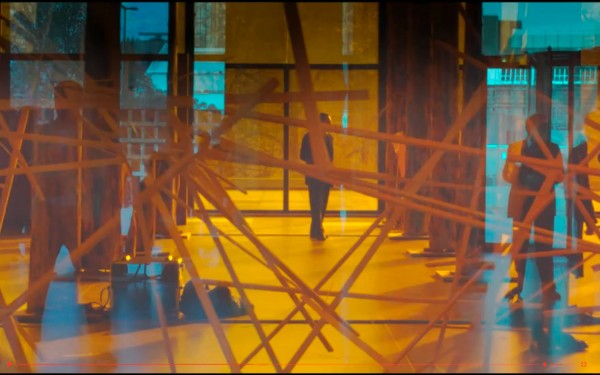
Reflections: Ein Film von SHIMURAbros
Reflections: Filmic impressions of the Festival of Future Nows at Neue Nationalgalerie, Staatliche Museen zu Berlin. A film by SHIMURAbros.
Reflections: Filmische Impressionen des Festival of Future Nows in der Neuen Nationalgalerie, Staatliche Museen zu Berlin. Ein Film von SHIMURAbros.

Festival of Future Nows / Neue Nationalgalerie
From October 30th to November 1st, 2014, the Festival of Future Nows brings together performances, sculptures, talks, and installations by 100 artists, who have been part of the past five years of program of the Institut für Raumexperimente at the Berlin University of the Arts. The festival will be held within the David Chipperfield exhibition Sticks and Stones at the Neue Nationalgalerie in Berlin.
With contributions by AEAEAEAE, Diego Agulló, Jamie Allen, Berhanu Ashagrie Deribew, Malte Bartsch, Simon Bauer, Viktor Bedö, Julius von Bismarck, Ally Bisshop, Bling Bling Recycling Collective, Rune Bosse, Jan Bünnig, Andreas Bunte, Anton Burdakov, Lucas Buschfeld, Manuel Breuer, Luz Broto, Merlin Carter, Julian Charrière, Cooking Sections, Nico Dockx & Clara Meister, Elise Eeraerts, Olafur Eliasson, Leon Eixenberger, Eric Ellingsen, Tomás Espinosa, Maresa Anna Fiege, Jan Fiege, Nina Fischer & Maroan el Sani, Thilo Frank, Ivana Franke, Kendell Geers, Fabian Geimer-Lorusso, Tamrat Gezahegne, Hildur Guðnadóttir, Andreas Greiner, Perry Hall, Egon Hanfstingl, Elín Hansdóttir, Lutz Henke, Friedrich Herz, Elaine W. Ho, Markus Hoffmann, Jeremias Holliger, Rike Horb, Rafael Ibarra, Petja Ivanova, Asako Iwama, Jeroen Jacobs, Clara Jo, Hans Jóhannsson, Anne Duk Hee Jordan, Institut für Raumexperimente, Mihret Kebede, Felix Kiessling, Fabian Knecht, Andreas Koch, Steen Koerner, Takehito Koganezawa, Hans-Henning Korb, Norgard Kröger, Jeewi Lee, Deborah Ligorio, Robert Lippok, Amelie Marei Löllmann, Anastasia Loginova, Yutaka Makino, Gabrielle Mainguy, Ayumi Matsuzaka, Natasha Mendonca, Rodrigo Maltez Novaes, Felix Meyer, Vladimir Miller, Jorge Miñano, Mette Moestrup, Meike Nittel, Timea Anita Ovarecz, osa_office for subversive architecture, Kirsten Palz, Ece Pazarbaşı, Anton Peitersen, Sophia Pompéry, Claudio Puntin, Anne Rauch, Marcela Reichelt, Vinzenz Reinecke, Michal B. Ron, Macarena Ruiz-Tagle, Aykan Safoğlu, Joel Scott, Tiago Romagnani Silveira, Yorgos Sapountzis, Rike Scheffler, Nina Schuiki, Daniela Seel, Matthias Sohr, Diana Sprenger, Dan Stockholm, Yuichiro Tamura, Robel Temesgen, Alkistis Thomidou, Fernanda Trevellin, Alvaro Urbano, Kat Válastur, Quynh Vantu, Vlado Velkov, Ósk Vilhjálmsdóttir, Shira Wachsmann, Raul Walch, Jonas Wendelin, Jan St. Werner, Dr. Uwe Westphal, Louwrien Wijers, Euan Williams, Hendrik Wolking, Helen Zeru.
—
A project by the Institut für Raumexperimente, Berlin University of the Arts in collaboration with the Neue Nationalgalerie
Supported by Einstein Foundation Berlin, TURN Fund of the German Federal Cultural Foundation, Goethe-Institut Addis Ababa, Jacqueline Diffring Foundation, Museum & Location GmbH, Studio Olafur Eliasson, Verein der Freunde der Nationalgalerie.
www.futurenows.net/2014
Das Festival of Future Nows versammelt künstlerische Arbeiten, Performances, Lesungen und Interaktionen von 100 KünstlerInnen, die in den vergangenen fünf Jahren am Programm des Instituts für Raumexperimente der Universität der Künste Berlin teilnahmen. Das Festival findet vom 30.10 bis zum 1.11.2014 in der Ausstellung Sticks and Stones von David Chipperfield in der Neuen Nationalgalerie statt.
Mit Beiträgen von AEAEAEAE, Diego Agulló, Jamie Allen, Berhanu Ashagrie Deribew, Malte Bartsch, Simon Bauer, Viktor Bedö, Julius von Bismarck, Ally Bisshop, Bling Bling Recycling Collective, Rune Bosse, Jan Bünnig, Andreas Bunte, Anton Burdakov, Lucas Buschfeld, Manuel Breuer, Luz Broto, Merlin Carter, Julian Charrière, Cooking Sections, Nico Dockx & Clara Meister, Elise Eeraerts, Olafur Eliasson, Leon Eixenberger, Eric Ellingsen, Tomás Espinosa, Maresa Anna Fiege, Jan Fiege, Nina Fischer & Maroan el Sani, Thilo Frank, Ivana Franke, Kendell Geers, Fabian Geimer-Lorusso, Tamrat Gezahegne, Hildur Guðnadóttir, Andreas Greiner, Perry Hall, Egon Hanfstingl, Elín Hansdóttir, Lutz Henke, Friedrich Herz, Elaine W. Ho, Markus Hoffmann, Jeremias Holliger, Rike Horb, Rafael Ibarra, Petja Ivanova, Asako Iwama, Jeroen Jacobs, Clara Jo, Hans Jóhannsson, Anne Duk Hee Jordan, Institut für Raumexperimente, Mihret Kebede, Felix Kiessling, Fabian Knecht, Andreas Koch, Steen Koerner, Takehito Koganezawa, Hans-Henning Korb, Norgard Kröger, Jeewi Lee, Deborah Ligorio, Robert Lippok, Amelie Marei Löllmann, Anastasia Loginova, Yutaka Makino, Gabrielle Mainguy, Ayumi Matsuzaka, Natasha Mendonca, Rodrigo Maltez Novaes, Felix Meyer, Vladimir Miller, Jorge Miñano, Mette Moestrup, Meike Nittel, Timea Anita Ovarecz, osa_office for subversive architecture, Kirsten Palz, Ece Pazarbaşı, Anton Peitersen, Sophia Pompéry, Claudio Puntin, Anne Rauch, Marcela Reichelt, Vinzenz Reinecke, Michal B. Ron, Macarena Ruiz-Tagle, Aykan Safoğlu, Joel Scott, Tiago Romagnani Silveira, Yorgos Sapountzis, Rike Scheffler, Nina Schuiki, Daniela Seel, Matthias Sohr, Diana Sprenger, Dan Stockholm, Yuichiro Tamura, Robel Temesgen, Alkistis Thomidou, Fernanda Trevellin, Alvaro Urbano, Kat Válastur, Quynh Vantu, Vlado Velkov, Ósk Vilhjálmsdóttir, Shira Wachsmann, Raul Walch, Jonas Wendelin, Jan St. Werner, Dr. Uwe Westphal, Louwrien Wijers, Euan Williams, Hendrik Wolking, Helen Zeru.
—
Institut für Raumexperimente, Universität der Künste Berlin in Zusammenarbeit mit der Neuen Nationalgalerie
Unterstützt von Einstein Stiftung Berlin, Fonds TURN der Kulturstiftung des Bundes, Goethe-Institut Addis Abeba, Jacqueline Diffring Foundation, Museum & Location GmbH, Studio Olafur Eliasson, Verein der Freunde der Nationalgalerie.
www.futurenows.net/2014
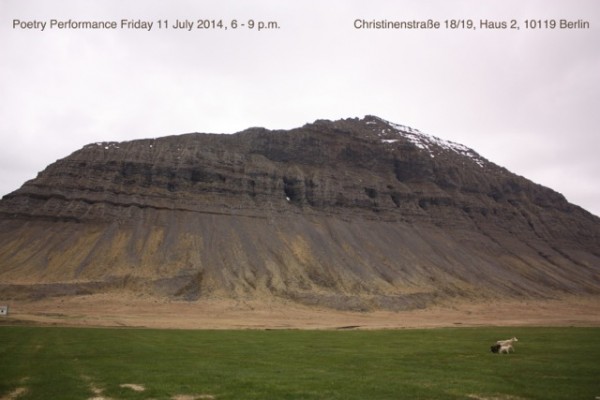
Mihret Kebede, Abebaw Melaku, Jorga Mesfin, Misrak Terefe & Eric Ellingsen: A-B-A-B-A : from here to hear
„Half a-gap half-firmed
superficially locked.
Who shall enter this door?“
Poetry Performance on Friday, 11 July 2014
—
Mihret Kebede is an artist, poet and a founding director of Netsa art village, an artists‘ collective. She is also a founding member of Tobiya Poetic Jazz Group since 2008 and is featured on the Tobiya poetry & Jazz DVD, Vol.1 release. She is highly regarded for her poetry readings and experimental artworks.
Abebaw Melaku is a renowned poet and journalist. He is a founding member of Tobiya Poetic Jazz Group since 2008 as well as a radio journalist on the influential Ethiopian radio show, „Addis Zema“. He has published a poetry book called „Keradion“ in 2007 and an audio poetry CD in 2008.
Jorga Mesfin is a musician with influences that span the spirit and innovation of Jazz and the ancient and diverse sounds found in Ethiopian music. He has performed with Takana Miyamoto, Aster Aweke, Mahmoud Ahmed and Mulatu Astatke, amongst others. He is the founder of Ethio-jazz group Wudasse, and composed the score to Haile Gerima’s epic Ethiopian movie Teza, for which he won the award for Best Music Selection at the 22nd Carthage Film Festival and Best Composer Award at the 5th Dubai International Film Festival.
Misrak Terefe is a renowned poet in Ethiopia who has published the first poetry VCD as a female poet. She has contributed to different group publications with other writers and is featured on the Tobiya poetry & Jazz DVD, Vol.1 release. She is also a founding member of Tobiya Poetic Jazz Group since 2008.
—
This event is part of Acting Archives, a project by the Institut für Raumexperimente, Berlin University of the Arts and the Alle School of Fine Arts and Design, Addis Ababa University, supported by Studio Olafur Eliasson, and funded by the TURN Fund of the German Federal Cultural Foundation. It is choreographed by Christina Werner and Eric Ellingsen.
„Half a-gap half-firmed
superficially locked.
Who shall enter this door?“
Poetry Performance on Friday, 11 July 2014
—
Mihret Kebede is an artist, poet and a founding director of Netsa art village, an artists‘ collective. She is also a founding member of Tobiya Poetic Jazz Group since 2008 and is featured on the Tobiya poetry & Jazz DVD, Vol.1 release. She is highly regarded for her poetry readings and experimental artworks.
Abebaw Melaku is a renowned poet and journalist. He is a founding member of Tobiya Poetic Jazz Group since 2008 as well as a radio journalist on the influential Ethiopian radio show, „Addis Zema“. He has published a poetry book called „Keradion“ in 2007 and an audio poetry CD in 2008.
Jorga Mesfin is a musician with influences that span the spirit and innovation of Jazz and the ancient and diverse sounds found in Ethiopian music. He has performed with Takana Miyamoto, Aster Aweke, Mahmoud Ahmed and Mulatu Astatke, amongst others. He is the founder of Ethio-jazz group Wudasse, and composed the score to Haile Gerima’s epic Ethiopian movie Teza, for which he won the award for Best Music Selection at the 22nd Carthage Film Festival and Best Composer Award at the 5th Dubai International Film Festival.
Misrak Terefe is a renowned poet in Ethiopia who has published the first poetry VCD as a female poet. She has contributed to different group publications with other writers and is featured on the Tobiya poetry & Jazz DVD, Vol.1 release. She is also a founding member of Tobiya Poetic Jazz Group since 2008.
—
Eine Veranstaltung im Rahmen von Acting Archives, einem Projekt des Instituts für Raumexperimente der Universität der Künste Berlin und der Alle School of Fine Arts and Design, Addis Ababa University, unterstützt durch Studio Olafur Eliasson, gefördert im Fonds TURN der Kulturstiftung des Bundes. Die Veranstaltung ist choreographiert von Christina Werner und Eric Ellingsen.

Blind Spot: Ausstellung im Science Center Spectrum
Works by Markus Hoffmann, Sophia Pompéry and Tiago Romagnani Silveira at Science Center Spectrum, Berlin
Installation View
Through artistic means Markus Hoffmann, Tiago Romagnani Silveira and Sophia Pompéry approximate various scientific disciplines, both in methodology and ways of thinking. Of central importance here is the experiment as an instrument of scientific history. Through experimentation, certainties – norms, values, structures – are put to the test. How we understand our reality is fluid and negotiable. This opens up for possibilities: we are able to, shape our reality. The artistic works in Science Center Spectrum invite us to experience the way our world is produced through the act of perception. We are active co-producers of that, which we call „reality.“
Markus Hoffman choreographs coincidental phenomena of optics and nuclear physics in his work. As rays emanating from the radioactive decay of the surroundings hit the window panes, which are connected, to a particle detector, the transparency of the glass is altered. Hence, the quality of light in the exhibition, space is constantly changing. This simple, direct aesthetic experience addresses the boundaries of our, perception, and subtly brings the rays and their source into focus, provoking ambivalent connotations.
Tiago Romagnani Silveiras‘ work between a point and another transforms electrical current into a poetic, experience. Electrical impulses cause an extended wire to glow at an unpredictable rate. The physical state of, this inconspicuous line, which connects two points, is subtly altered as the current runs through it. Change, in color, temperature and sound frequency accompany the contraction and expansion of the wire. As one, views the work, does time expand? Does the space?… Or do they remain constant?
From a novel perspective, Sophia Pompéry‘s videos show the laws of physics that mark our daily lives. Through reflections in water on the floor of the Science Center Spectrum, unseen spaces become visible. The sound of a flute penetrates a mirrored world. A mirror image is ingested. In this context, the myth of Narcissus, who fell in love with his own mirror image, raises questions of recognition and embodied, knowledge, of self-recognition and physical experience.
A shared working background at the Institut für Raumexperimente links the work of Markus Hoffmann, Tiago Romagnani Silveira and Sophia Pompéry. Curated by Christina Werner.
Markus Hoffmann: Coincidence; Background radiation, Geiger-Müller tubes, PDLC glass
Sophia Pompéry: Kawala Play, Video, 1:52 min
Sophia Pompéry: Miralamentira, Video, 3:00 min
Sophia Pompéry: Window, Video, 4:24 min
Tiago Romagnani Silveira: Between a point and another, Electric current, resistance
Tiago Romagnani Silveira: Between a point and another, Electric current, resistance
Arbeiten von Markus Hoffmann, Sophia Pompéry and Tiago Romagnani Silveira im Science Center Spectrum, Berlin
Installationsansicht
Mit künstlerischen Mitteln nähern sich Markus Hoffmann, Tiago Romagnani Silveira und Sophia Pompéry unterschiedlichen Wissenschaftsdisziplinen, deren Methoden und Verständnis. Von zentraler Bedeutung ist hierbei das Experiment als wissenschaftshistorisches Instrument: Durch Experimentieren werden Gewissheiten, – Normen, Werte, Strukturen – auf den Prüfstand gestellt. Wie wir unsere Wirklichkeit verstehen, ist wandelbar und verhandelbar. Damit entsteht Spielraum: Wir können unsere Wirklichkeit gestalten. Die künstlerischen Arbeiten im Science Center Spectrum laden ein zu erfahren, dass unsere Welt durch den Akt des Wahrnehmens hervorgebracht wird. Wir werden zu aktiven Koproduzenten dessen, was wir Wirklichkeit nennen.
Markus Hoffmann choreographiert in seiner Arbeit Koinzidenz Phänomene der Optik und der Atomphysik. Trifft die aus den radioaktiven Zerfallsprozessen des Umraumes stammende Strahlung auf das mit einem Teilchendetektor verbundene Fensterglas ändert dieses seine Transparenz; die Lichtsituation des Raumes, befindet sich in konstantem Wandel. Diese einfache unmittelbar ästhetische Erfahrung adressiert die Grenzen unserer Wahrnehmungsfähigkeit und rückt subtil die Strahlung und Ihren Ursprung als Auslöser ambivalenter Konnotationen in den Fokus.
Tiago Romagnani Silveiras Arbeit Zwischen zwei Punkten verwandelt elektrische Spannung in poetische Erfahrung. Elektrische Energieimpulse bringen in unvorhersehbarem Rhythmus den gespannten Draht zum Glühen. Die unscheinbare Linie, die zwei Punkte verbindet, verändert ihren Zustand auf subtile Weise. Farbveränderung, Temperaturentwicklung, Tonfrequenzen begleiten Kontraktion und Ausdehnung. Dehnt sich beim Betrachten die Zeit, dehnt sich der Raum – oder bleiben sie gleichförmig?
Die Videos von Sophia Pompéry zeigen physikalische Gesetzmäßigkeiten unseres Alltags aus ungewöhnlicher Perspektive. Wasserspiegelungen auf dem Fußboden im Science Center Spectrum machen ungesehene Räume sichtbar. Ein Flötenton durchdringt eine gespiegelte Welt. Ein Spiegelbild wird aufgesogen. Der Mythos von Narziss, der sich in sein eigenes Spiegelbild verliebt, wirft hier die Frage nach Erkennen und Sich-Einverleiben, von Selbsterkenntnis und körperlicher Erfahrung auf.
Die Arbeiten der drei Künstler Markus Hoffmann, Tiago Romagnani Silveira und Sophia Pompéry verbindet, der gemeinsame Arbeitshintergrund am Institut für Raumexperimente. Kuratiert von Christina Werner.
Markus Hoffmann: Koinzidenz; Radioaktive Hintergrundstrahlung, Geiger-Müller-Zählrohre, PDLC-Glas
Sophia Pompéry: Flötenspiel, Video, 1:52 min
Sophia Pompéry: Miralamentira, Video, 3:00 min
Sophia Pompéry: Fenster, Video, 4:24 min
Tiago Romagnani Silveira: Zwischen zwei Punkten, Strom, Widerstand
Tiago Romagnani Silveira: Zwischen zwei Punkten, Strom, Widerstand
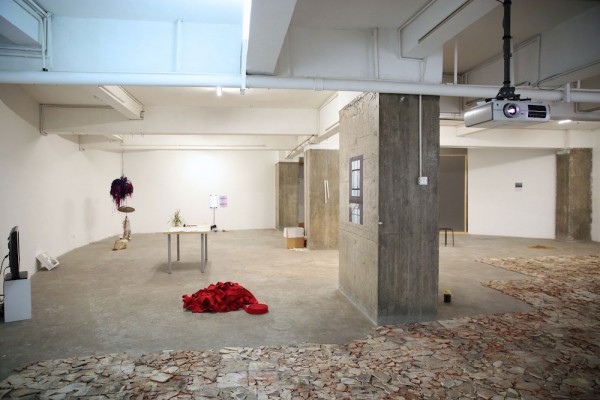
Walk-In-Progress
WORKS BY: AEAEAEAE, Malte Bartsch, Rune Bosse, Merlin Carter, Leon Eixenberger, Eric Ellingsen, Tomas Espinosa, Hu Fang, Markus Hoffmann, Jeremias Holliger, Elaine W. Ho, Rike Horb., Fabian Knecht, Felix Kiessling, Hans-Henning Korb, Norgard Kröger, Fotini Lazaridou-Hatzigoga, Felix Meyer, Vinzenz Reinecke, Nina Schuiki, Tamura Yuichiro, Kat Válastur, Raul Walch, Joanna Warsza, Christina Werner, Euan Williams
CHOREOGRAPHED BY
Christina Werner & Eric Ellingsen
Co-produced and hosted by Vitamin Creative Space, Guangzhou, open to the public from 10.2.-10.3.2014.
Walk and public encounter on 17.1.2014.
View Exhibition Website
The Institut für Raumexperimente traveled to Hong Kong, Shenzhen/Dongguan, Guangzhou and Beijing from 9.-25.1.2014. Walk-in-progress is an experiment timing space, primed by the experiences of traveling to meet, leaning into spatial relationships inveigling mental distances, generating moving stories, motions and emotions of scale, speeds slowing, perceptual political contracts of effort and energy, attention spanning directionality, agencies agency. Walk-in-progress shares ideas motion.
The projects are ideas and interventions, images action. Some are precise statements, others errant dreams, others personal distortions and curated delusions. Some are autonomous projects soon to be realized, unknown characters operated on by translations, parts carried and realized in other places, co-authored in the approach, attempts and pitches for projects to come, reflections given to fade.
On Friday 17.1.2014 a silent walk, designed by Eric Ellingsen, Christina Werner, Joanna Warsza, led across downtown Guangzhou, spreading from the Xingang Middle Road, Chigang Market and Vitamin Creative Space featuring time-based works and interventions.
Silent Walk Manual: With a group or alone, walk through part of a city without speaking for at least 30 minutes. While walking, give continuous and focused attention to the loudest sound you hear around you by looking in every direction in which you hear something.
The walk meandered on and ended up on a rooftop, morphed into a celebration, the celebration continued as a gathering inside Vitamin Creative Space with common dumplings cooking, drinks, actions and performances, followed by evening drinks at the near by street vendors, accompanied by further performances.
With special thanks to: Zhang Wei & Hu Fang & team & Olafur Eliasson
mit Arbeiten von: AEAEAEAE, Malte Bartsch, Rune Bosse, Merlin Carter, Leon Eixenberger, Eric Ellingsen, Tomas Espinosa, Hu Fang, Markus Hoffmann, Jeremias Holliger, Elaine W. Ho, Rike Horb., Fabian Knecht, Felix Kiessling, Hans-Henning Korb, Norgard Kröger, Fotini Lazaridou-Hatzigoga, Felix Meyer, Vinzenz Reinecke, Nina Schuiki, Tamura Yuichiro, Kat Válastur, Raul Walch, Joanna Warsza, Christina Werner, Euan Williams
choreografiert von:
Christina Werner & Eric Ellingsen
Koproduziert und veranstaltet von Vitamin Creative Space, Guangzhou, geöffnet 10.2.-10.3.2014.
Walk und Aktionen in der Stadt am 17.1.2014.
Website der Ausstellung anschauen
Das Institut für Raumexperimente bereiste Hong Kong, Shenzhen/Dongguan, Guangzhou und Peking vom 9.-25.1.2014. Walk-in-progress ein Experiment, das versucht, Räume zeitlich zu fassen, sich räumlichen Beziehungen anzunähern, sich von mentalen Distanzen verleiten zu lassen, bewegte Geschichten und Geschichten von Bewegung zu erzählen und Maßstäbe für Emotionen zu verschieben, Geschwindigkeiten zu verlangsamen, es fokussiert Übereinkünfte von Wahrnehmungspolitiken, Verhältnisse zu Anstrengung und Energie, Wahrnehmungsdauer und -gerichtetheit, das Wirken des Wirkenden. Walk-in-progress teilt Ideen und Bewegungen.
Die Projekte sind Ideen und Interventionen, Aktionen. Einige sind präzise Statements, andere umherschweifende Träume, persönliche Verwerfungen und ausgewählte Irrwege. Einige sind selbständige Projekte, die kurz vor ihrer Realisierung stehen; andere unbekannte, Übersetzungen unterworfene Zeichen; Fragmente, die anderswo entstanden sind oder mitgenommen wurden, gemeinsam hervorgebrachte Ansätze, Vorschläge und Entwürfe für Zukünftiges, Reflektionen, die verblassen dürfen.
Am Freitag, dem 17.1.2014, führte ein von Eric Ellingsen, Christina Werner und Joanna Warsza konzipierter, stummer „Walk“ durch die Altstadt Guangzhous und verband entlang des Weges verschiedene Interventionen und performative Arbeiten.
Anleitung für den „Silent Walk“: Laufe allein oder mit einer Gruppe für mindestens eine halbe Stunde schweigend durch eine Stadt. Richtet während des Laufens eure Aufmerksamkeit beständig auf das lauteste Geräusch in der Umgebung und schaut in dessen Richtung.
Der Spaziergang endete auf einem Hochhausdach, verwandelte sich in eine Eröffnungsfeier, die sich in den Ausstellungsräumen im Vitamin Creative Space fortsetzte und dort mit gemeinsamem Kochen und dem Zubereiten von Dumplings, Aktionen und Performances begangen wurde und mit Drinks am lokalen Straßenkiosk und weiteren performativen Aktionen endete.
Mit besonderem Dank an Zhang Wei, Hu Fang & Team, and Olafur Eliasson
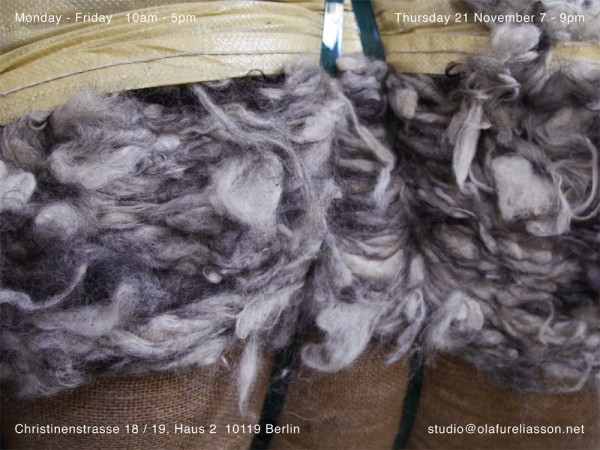
Aeaeaeae, Hans-Henning Korb, Robert Lippok & Raul Walch: Molding versions into reality
Everything is knot together here. Everything hanging here comes from Ethiopia, even the things that come from China, and this is reality. This is the sound of reality snared and knotted together from stories and streets and markets and roundabouts in Addis Ababa. This is archives opposite, a moment of chaotic similarities.
Aeaeaeae, Hans-Henning Korb, Robert Lippok & Raul Walch
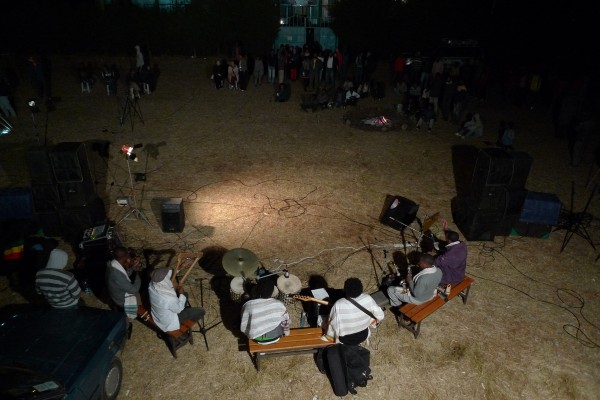
Ishe get ‘um, OK Poetry
poetry readings by Misrak Terefe, Vinzenz Reinecke, Demissew Mersha, Eric Ellingsen, Mihret Kebede, and Abebaw Melaku
poetry readings by Misrak Terefe, Vinzenz Reinecke, Demissew Mersha, Eric Ellingsen, and Tadele Tewodros
Mihret Kebede and Abebaw Melaku
Ishe get ‘um, OK Poetry is an event bringing together poetry readings and performances, language experiments, and music, including contributions by Eric Ellingsen, Mihret Kebede, Misrak Terefe, Abebaw Melaku, Demissew Mersha, Vinzenz Reinecke, Tadele Tewodros, and the Addis Taem Band. Organised by Eric Ellingsen and Mihret Kebede, the event takes place on occasion of Jan Meda – Großes Feld, an art festival hosted by the Institut für Raumexperimente, 13–15 December 2012, Addis Ababa, Ethiopia.
Short biographies
Eric Ellingsen co-directed the Institut für Raumexperimente at UdK, Berlin from 2009 to 2014. He established Species of Space in 2009 as a platform through which art, architecture, writing and performance can converge through spatial practices. He publishes creative and critical writing regularly, and gives performance/lectures. Some of his long-term projects involve collaborations with a retired police sketch artist, a Turkish shoe cobbler, translators, a sound engineer, a dance choreographer, an artist and a sign language instructor, and a food systems planner.
Mihret Kebede is an artist, poet, and the founding director of the Netsa Art Village artist collective in Addis Ababa. Renowned for her poetry readings and experimental artworks, Kebede is a founding member of Tobiya Poetic Jazz Group and is featured on the Tobiya Poetic Jazz DVD, Vol.1.
Abebaw Melaku is a poet and journalist. He is a founding member of Tobiya Poetic Jazz Group and a radio journalist affiliated with the Ethiopian radio show Addis Zema. He published a volume of poetry called Keradion in 2007 and an audio poetry CD in 2008.
Demissew Mersha is an Ethiopian poet who has been active in the Addis Ababa poetry scene for over 13 years. He has contributed to different group publications with other writers and is featured on the Tobiya Poetic Jazz DVD, Vol.1. He is also a founding member of the Tobiya Poetic Jazz Group.
Vinzenz Reinecke is an artist, writer, stonemason, poet, traveller, chess player, musician, and storyteller. Before he moved to Berlin to study at the Institut für Raumexperimente, he was a journeyman, travelling for three years and one day. During this time, he also worked for Canterbury Cathedral.
Misrak Terefe is an Ethiopian poet and the first female poet to publish a poetry VCD. She has contributed to different group publications with other writers and is featured on the Tobiya Poetic Jazz DVD, Vol.1. She is also a founding member of Tobiya Poetic Jazz Group, having been involved with the organisation since 2008.
Tadele Tewodros is an educator for hearing-impaired children, currently teaching at the Menelik Elementary School in Addis Ababa. Tewodros will graduate with an MA in Special Needs Education from Addis Ababa University in 2015. He performed his own poems using sign language during the event Ishe get ‘um, OK Poetry.
Addis Taem Band, established by six young musicians in 2011, blends together the instruments and techniques of traditional and modern music. More recently, they have worked with Tobiya Poetic Jazz Group, and the band can be found performing in a variety of venues in both Addis Ababa and other parts of Ethiopia.
Misrak Terefe, Vinzenz Reinecke, Demissew Mersha, Eric Ellingsen, Mihret Kebede und Abebaw Melaku
Misrak Terefe, Vinzenz Reinecke, Demissew Mersha, Eric Ellingsen und Tadele Tewodros
Mihret Kebede und Abebaw Melaku
Ishe get ‘um, OK Poetry ist eine Veranstaltung die eine Kombination präsentiert aus Gedichtlesungen und Performances, Sprachexperimenten und Musik mit Beiträgen von Eric Ellingsen, Mihret Kebede, Misrak Terefe, Abebaw Melaku, Demissew Mersha, Vinzenz Reinecke, Tadele Tewodros, und der Addis Taem Band. Die Veranstaltung ist ein Kooperationsprojekt von Eric Ellingsen und Mihret Kebede und findet im Rahmen des Festivals Jan Meda – Großes Feld statt.
Kurzbiografien
Eric Ellingsen war von 2009 bis 2014 Co-Direktor des Instituts für Raumexperimente an der UdK in Berlin. Er gründete im Jahr 2009 die Plattform Species of Space als einen Ort an dem Kunst, Architektur, Text und Performance durch räumliche Praktiken zueinander finden können. Er veröffentlicht regelmäßig kreative und kritische Texte und gibt Performances sowie Vorlesungen. Einige seiner Langzeitprojekte realisiert er in Zusammenarbeit mit einem Gerichtszeichner im Ruhestand, einem türkischen Schuster, Übersetzern, einem Tontechniker, einer Tanzchoreografin, einem Künstler und einem Lehrer für Zeichensprache sowie einer Ernährungssystemplanerin.
Mihret Kebede ist eine Künstlerin, Dichterin und Gründungsdirektorin des Netsa Art Village Künstlerkollektivs in Addis Abeba. Sie ist für ihre Gedichtlesungen und experimentellen Kunstwerke bekannt und außerdem Gründungsmitglied der Tobiya Poetic Jazz Group, auf deren Platte Tobiya Poetic Jazz DVD, Vol.1. sie zu hören ist.
Abebaw Melaku ist Dichter und Journalist. Er ist Gründungsmitglied der Tobiya Poetic Jazz Goup und arbeitet als Radiojournalist und moderiert regelmässig die Sendung „Addis Zema“. Er hat im Jahr 2007 einen Gedichtband mit dem Titel Keradion herausgegeben sowie eine Audio-CD mit Gedichten im Jahr 2008.
Demissew Mersha ist ein äthiopischer Dichter und als solcher seit 13 Jahren in der Poesieszene Addis Abebas aktiv. Er hat zu verschiedenen Gruppenpublikationen beigetragen und ist auf der Tobiya Poetic Jazz DVD, Vol.1 zu hören. Er ist außerdem Gründungsmitglied der Tobiya Poetic Jazz Group.
Vinzenz Reinecke ist Künstler, Schriftsteller, Bildhauer, Dichter, Reisender, Schachspieler, Musiker und Erzähler. Bevor er für ein Studium am Institut für Raumexperimente nach Berlin zog, war er permanent Reisender und als solcher drei Jahre und einen Tag unterwegs. Während dieser Zeit arbeitete er außerdem für die Canterbury Cathedral.
Misrak Terefe ist die erste äthiopische Dichterin die eine VCD mit Gedichten herausbrachte. Sie trug zu verschiedenen Gruppenpublikationen bei und ist auf der Tobiya Poetic Jazz DVD, Vol.1. zu hören. Außerdem ist sie Gründungsmitglied der Tobiya Poetic Jazz Group mit der sie seit dem Jahr 2008 zusammenarbeitet.
Tadele Tewodros ist Lehrer für Kinder mit Hörbehinderung und lehrt momentan an der Menelik Grundschule in Addis Abeba. Tewodros wird seinen MA in Special Needs Education an der Addis Abeba University im Jahr 2015 abschließen. Er performte seine eigenen Gedichte während des Event Ishe get ‘um, OK Poetry und setzte hierfür Zeichensprache ein.
Addis Taem Band ist von sechs jungen Musikern im Jahr 2011 ins Leben gerufen und kombiniert Instrumente und Techniken der traditionellen und modernen Musik. Die Band tritt regelmäßig mit der Tobiya Poetic Jazz Group auf und spielt an zahlreichen Orten in Addis Abeba sowie in anderen Teilen Äthiopiens.
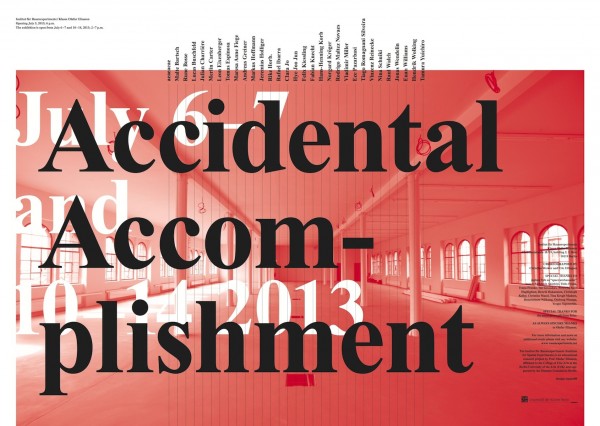
Accidental Accomplishment
WORKS BY: AEAEAEAE, Malte Bartsch, Rune Bosse, Lucas Buschfeld, Julian Charrière, Merlin Carter, Leon Eixenberger, Tomas Espinosa, Maresa Anna Fiege, Andreas Greiner, Markus Hoffmann, Jeremias Holliger, Rike Horb, Rafael Ibarra, Clara Jo, Hye Joo Jun, Felix Kiessling, Fabian Knecht, Hans-Henning Korb, Norgard Kröger, Rodrigo Maltez Novaes, Vladimir Miller, Ece Pazarbasi, Tiago Romagnani Silveira, Vinzenz Reinecke, Nina Schuiki, Raul Walch, Jonas Wendelin, Euan Williams, Hendrik Wolking, Tamura Yuichiro
CHOREOGRAPHED BY
Christina Werner and Eric Ellingsen
View Exhibition Website
Exhibition Program:
July 5: Opening with installation, performances, actions, experiments, drinks
July 7: An accidental accomplishment, a conversation with Beatriz Colomina, Mark Wigley, and Olafur Eliasson
July 11: Opening of UdK Rundgang, Hardenbergstraße 33
July 13: Performance and film program with interventions, poems, talks, actions, experiments, hearing, listenings
Mit Beiträgen von: AEAEAEAE, Malte Bartsch, Rune Bosse, Lucas Buschfeld, Julian Charrière, Merlin Carter, Leon Eixenberger, Tomas Espinosa, Maresa Anna Fiege, Andreas Greiner, Markus Hoffmann, Jeremias Holliger, Rike Horb, Rafael Ibarra, Clara Jo, Hye Joo Jun, Felix Kiessling, Fabian Knecht, Hans-Henning Korb, Norgard Kröger, Rodrigo Maltez Novaes, Vladimir Miller, Ece Pazarbasi, Tiago Romagnani Silveira, Vinzenz Reinecke, Nina Schuiki, Raul Walch, Jonas Wendelin, Euan Williams, Hendrik Wolking, Tamura Yuichiro
Choreografiert von Christina Werner und Eric Ellingsen
Website der Ausstellung besuchen
Ausstellungsprogram:
5. Juli: Vernissage mit Installationen, Performances, Aktionen, Experimente, Getränke
7. Juli: An accidental accomplishment, eine Diskussion mit Beatriz Colomina, Mark Wigley, und Olafur Eliasson
11. Juli: UdK Rundgang Eröffnung, Hardenbergstraße 33
13. Juli: Performance und Filmprogram mit Interventionen, Poesie, Talks, Aktionen, Experimente, Sound

WEEK 4
WEEK 4
WEEK 4
WEEK 4
Thursday, June 21
16.00 Walk & Workshop: Sound Walks and Things
19.00 Netactivities and Art: Lecture and Conversation with Robert Sakrowski
Friday, June 22
14.00 Spontaneous Book Workshop
15.00 Heartbeat Performance by Markus Hoffmann & Lena König
18.00 – 20.00 Do Poetry: Experiments with Sharmila Cohen, Eric Ellingsen, Christian Hawkey, Monika Rinck & you
20.00 Informal Intimacy Building: just sit around and read from inspiring books together and talk
Saturday, June 23
Unfair Poetry and Other Unfair Things
14.00 – 17.00 Unfair Translation Experiments : Yves Mettler from The Selection; Sharmila Cohen, from Telephone Journal; Jan Bovelet, Miodrag Kuc from Anxious Prop
17.00 – 18.00 Unfair Sounds : “How to speak the language of a dead species”, Performance / Workshop by Leon Eixenberger
18.00 – 19.45 Unfair Roundtable Discussion : making questions and translating ideas into things, with Barbara Buchmaier, Sandra Huber, John Holten, Camilla Kragelund, Caleb Waldorf
20.00 – 22.00 Unfair Poetry & Other Art Things: readings and performances by Shane Anderson, Sharmila Cohen, Eric Ellingsen, Christian Hawkey, Martina Hefter, Karl Holmqvist, Gaëlle Kreens, Kirsten Palz, Andreas Töpfer, Uljana Wolf
Sunday, June 24
14.00 Stunts and Exercise Workshop by Merlin Carter & Clara Jo with Arne Schönewald
16.00 Your Choreography Works – What’s the Score: Workshop with Ari Benjamin Meyers
17.00 I do it because I can’t : fly attempt #4 by Rune Bosse
20.00 Banjee’s Caramel Sundae Summer Block Party : Live Concert Performance, BBQ and Ice C.R.E.A.M. A project by Clara Jo & James Gregory Atkinson / Banjee Boi
June 22: Do Poetry: Experiments with Sharmila Cohen, Eric Ellingsen, Christian Hawkey, Monika Rinck & you
June 23: Unfair Sounds : “How to speak the language of a dead species”, Performance / Workshop by Leon Eixenberger
June 24: Your Choreography Works – What’s the Score: Workshop with Ari Benjamin Meyers
June 24: Banjee’s Caramel Sundae Summer Block Party : Live Concert Performance, BBQ and Ice C.R.E.A.M. A project by Clara Jo & James Gregory Atkinson / Banjee Boi
Thursday, June 21
16.00 Walk & Workshop: Sound Walks and Things
19.00 Netactivities and Art: Lecture and Conversation with Robert Sakrowski
Friday, June 22
14.00 Spontaneous Book Workshop
15.00 Heartbeat Performance by Markus Hoffmann & Lena König
18.00 – 20.00 Do Poetry: Experiments with Sharmila Cohen, Eric Ellingsen, Christian Hawkey, Monika Rinck & you
20.00 Informal Intimacy Building: just sit around and read from inspiring books together and talk
Saturday, June 23
Unfair Poetry and Other Unfair Things
14.00 – 17.00 Unfair Translation Experiments : Yves Mettler from The Selection; Sharmila Cohen, from Telephone Journal; Jan Bovelet, Miodrag Kuc from Anxious Prop
17.00 – 18.00 Unfair Sounds : “How to speak the language of a dead species”, Performance / Workshop by Leon Eixenberger
18.00 – 19.45 Unfair Roundtable Discussion : making questions and translating ideas into things, with Barbara Buchmaier, Sandra Huber, John Holten, Camilla Kragelund, Caleb Waldorf
20.00 – 22.00 Unfair Poetry & Other Art Things: readings and performances by Shane Anderson, Sharmila Cohen, Eric Ellingsen, Christian Hawkey, Martina Hefter, Karl Holmqvist, Gaëlle Kreens, Kirsten Palz, Andreas Töpfer, Uljana Wolf
Sunday, June 24
14.00 Stunts and Exercise Workshop by Merlin Carter & Clara Jo with Arne Schönewald
16.00 Your Choreography Works – What’s the Score: Workshop with Ari Benjamin Meyers
17.00 I do it because I can’t : fly attempt #4 by Rune Bosse
20.00 Banjee’s Caramel Sundae Summer Block Party : Live Concert Performance, BBQ and Ice C.R.E.A.M. A project by Clara Jo & James Gregory Atkinson / Banjee Boi
June 22: Do Poetry: Experiments with Sharmila Cohen, Eric Ellingsen, Christian Hawkey, Monika Rinck & you
June 23: Unfair Sounds : “How to speak the language of a dead species”, Performance / Workshop by Leon Eixenberger
June 24: Your Choreography Works – What’s the Score: Workshop with Ari Benjamin Meyers
June 24: Banjee’s Caramel Sundae Summer Block Party : Live Concert Performance, BBQ and Ice C.R.E.A.M. A project by Clara Jo & James Gregory Atkinson / Banjee Boi
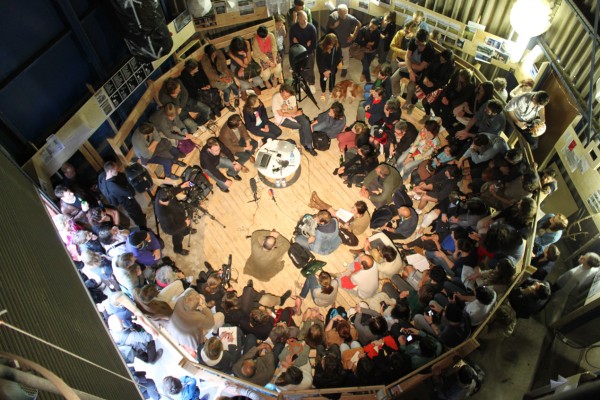
WEEK 3
WEEK 3
WEEK 3
WEEK 3
Thursday, June 14
16.00 Walk & Workshop: Balance Walk (Trisha Brown) and more: Video Manuals
17.00 – 21.00 This is Japan : Walk for Fukushima Festival Filmscreening and Workshop by Nina Fischer and Maroan el Sani: Fukushima project presentation
Friday, June 15
14.00 Public Critiques with the participants of Institut für Raumexperimente & Olafur Eliasson
19.30 Caring is Acting: Artistic Engagement in Public Space Conversation with Olafur Eliasson, Eric Ellingsen, Guido Brendgens, Benjamin Foerster-Baldenius, Regula Lüscher, Joanna Warsza, Christina Werner, e.a.
Saturday, June 16
15.00 Stunts and Exercise Workshop by Merlin Carter & Clara Jo
18.00 Institut für Raumexperimente : Talk at the Festival Center
19.00 – 21.00 Film Program: Institut für Raumexperimente
Sunday, June 17
14.00 -19.00 The Black Manual Presents Two Cranes: a live electro-acoustic candomblé induction with Valdirjovena, Juninho Quebradeira, Leo Leandro, Joao Rasta, Jan Werner
17.00 I do it because I can’t : fly attempt #3 by Rune Bosse
17.30 Fitness for Artist by Clara Jo & Merlin Carter with Helga Wretman
Fitness for Artists by Clara Jo & Merlin Carter
June 15: Caring is Acting: Artistic Engagement in Public Space Conversation with Olafur Eliasson, Eric Ellingsen, Guido Brendgens, Benjamin Foerster-Baldenius, Regula Lüscher, Joanna Warsza, Christina Werner, e.a.
June 17: The Black Manual Presents Two Cranes: a live electro-acoustic candomblé induction with Valdirjovena, Juninho Quebradeira, Leo Leandro, Joao Rasta, Jan Werner
June 17: I do it because I can’t : fly attempt #3 by Rune Bosse
Thursday, June 14
16.00 Walk & Workshop: Balance Walk (Trisha Brown) and more: Video Manuals
17.00 – 21.00 This is Japan : Walk for Fukushima Festival Filmscreening and Workshop by Nina Fischer and Maroan el Sani: Fukushima project presentation
Friday, June 15
14.00 Public Critiques with the participants of Institut für Raumexperimente & Olafur Eliasson
19.30 Caring is Acting: Artistic Engagement in Public Space Conversation with Olafur Eliasson, Eric Ellingsen, Guido Brendgens, Benjamin Foerster-Baldenius, Regula Lüscher, Joanna Warsza, Christina Werner, e.a.
Saturday, June 16
15.00 Stunts and Exercise Workshop by Merlin Carter & Clara Jo
18.00 Institut für Raumexperimente : Talk at the Festival Center
19.00 – 21.00 Film Program: Institut für Raumexperimente
Sunday, June 17
14.00 -19.00 The Black Manual Presents Two Cranes: a live electro-acoustic candomblé induction with Valdirjovena, Juninho Quebradeira, Leo Leandro, Joao Rasta, Jan Werner
17.00 I do it because I can’t : fly attempt #3 by Rune Bosse
17.30 Fitness for Artist by Clara Jo & Merlin Carter with Helga Wretman
Fitness for Artists by Clara Jo & Merlin Carter
June 15: Caring is Acting: Artistic Engagement in Public Space Conversation with Olafur Eliasson, Eric Ellingsen, Guido Brendgens, Benjamin Foerster-Baldenius, Regula Lüscher, Joanna Warsza, Christina Werner, e.a.
June 17: The Black Manual Presents Two Cranes: a live electro-acoustic candomblé induction with Valdirjovena, Juninho Quebradeira, Leo Leandro, Joao Rasta, Jan Werner
June 17: I do it because I can’t : fly attempt #3 by Rune Bosse
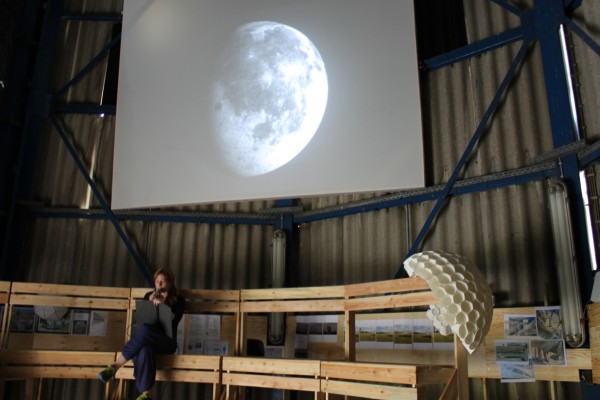
WEEK 2
WEEK 2
WEEK 2
WEEK 2
Thursday, June 7
14.00 – 21.00 Performing Politics I : Critical Spatial Practices in Art and Architecture; Symposium by Eric Ellingsen & Alvaro Urbano with Ivan Argote, Luz Broto, Deconcrete, Something Fantastic, Klara Hobza, Petrit Hailaj, Intelegencias Colectivas, Todo Por La Praxis (TPX), Philippe van Wolputte
Friday, June 8
14.00 – 21.00 Performing Politics I : Critical Spatial Practices in Art and Architecture; Symposium by Eric Ellingsen & Alvaro Urbano with Ivan Argote, Luz Broto, Deconcrete, Something Fantastic, Klara Hobza, Petrit Hailaj, Intelegencias Colectivas, Todo Por La Praxis (TPX), Philippe van Wolputte
Saturday, June 9
14.00 – 19.00 Augen über London : Workshop by Andreas Greiner and Julian Francis Bisesi
16.00 Egg Drop Workshop and Drop & Slow Bike Competition
Sunday, June 10
14.00 Walk & Workshop by Laura McLardy & Jonas Wendelin
16.00 – 21.00 Kinonik: Film Program by Raul Walch
17.00 I do it because I can’t : fly attempt #2 by Rune Bosse
19.00 Flight Report Nr. 2: Weekly Documentation
June 8: Performing Politics I : Critical Spatial Practices in Art and Architecture; Symposium by Eric Ellingsen & Alvaro Urbano with Ivan Argote, Luz Broto, Deconcrete, Something Fantastic, Klara Hobza, Petrit Hailaj, Intelegencias Colectivas, Todo Por La Praxis (TPX), Philippe van Wolputte
June 9: Five Corners Workshop
June 9: Slow Bike Competition
June 10: Video Feed by Euan Williams
June 10: Kinonik: Film Program by Raul Walch
Thursday, June 7
14.00 – 21.00 Performing Politics I : Critical Spatial Practices in Art and Architecture; Symposium by Eric Ellingsen & Alvaro Urbano with Ivan Argote, Luz Broto, Deconcrete, Something Fantastic, Klara Hobza, Petrit Hailaj, Intelegencias Colectivas, Todo Por La Praxis (TPX), Philippe van Wolputte
Friday, June 8
14.00 – 21.00 Performing Politics I : Critical Spatial Practices in Art and Architecture; Symposium by Eric Ellingsen & Alvaro Urbano with Ivan Argote, Luz Broto, Deconcrete, Something Fantastic, Klara Hobza, Petrit Hailaj, Intelegencias Colectivas, Todo Por La Praxis (TPX), Philippe van Wolputte
Saturday, June 9
14.00 – 19.00 Augen über London : Workshop by Andreas Greiner and Julian Francis Bisesi
16.00 Egg Drop Workshop and Drop & Slow Bike Competition
Sunday, June 10
14.00 Walk & Workshop by Laura McLardy & Jonas Wendelin
16.00 – 21.00 Kinonik: Film Program by Raul Walch
17.00 I do it because I can’t : fly attempt #2 by Rune Bosse
19.00 Flight Report Nr. 2: Weekly Documentation
June 8: Performing Politics I : Critical Spatial Practices in Art and Architecture; Symposium by Eric Ellingsen & Alvaro Urbano with Ivan Argote, Luz Broto, Deconcrete, Something Fantastic, Klara Hobza, Petrit Hailaj, Intelegencias Colectivas, Todo Por La Praxis (TPX), Philippe van Wolputte
June 9: Five Corners Workshop
June 9: Slow Bike Competition
June 10: Video Feed by Euan Williams
June 10: Kinonik: Film Program by Raul Walch

WEEK 1
WEEK 1
WEEK 1
WEEK 1
Thursday, May 31
18.00 Opening UP, Turning ON, Taking OFF
19.30 Walk and Reading: The Zone Walk
Friday, June 1
16.00 Wing Building Workshop
18.00 In-Flight Entertainment: Video Program
20.00 Emergency Landing: Open Mic
Saturday, June 2
14.00-21.00 Flight of Future: Film Program by Florian Wüst
19.00 Flight of Future: Conversation with Florian Wüst
Sunday, June 3
14.00 Flight Report Nr. 1: Weekly Documentation
16.00 Geodesic Workshop with Lukas Feireiss / Raul Walch and others
17.00 I do it because I can’t : fly attempt #1 by Rune Bosse
19.00 As Light as Lead: Lecture and Conversation with Prof. Thomas Macho
June 2: Flight of Future: Film Program by Florian Wüst
June 3: I do it because I can’t : fly attempt #1 by Rune Bosse
Geodesic Workshop with Lukas Feireiss / Raul Walch and others
June 1: Entladung by Andreas Greiner & Fabian Knecht
Thursday, May 31
18.00 Opening UP, Turning ON, Taking OFF
19.30 Walk and Reading: The Zone Walk
Friday, June 1
16.00 Wing Building Workshop
18.00 In-Flight Entertainment: Video Program
20.00 Emergency Landing: Open Mic
Saturday, June 2
14.00-21.00 Flight of Future: Film Program by Florian Wüst
19.00 Flight of Future: Conversation with Florian Wüst
Sunday, June 3
14.00 Flight Report Nr. 1: Weekly Documentation
16.00 Geodesic Workshop with Lukas Feireiss / Raul Walch and others
17.00 I do it because I can’t : fly attempt #1 by Rune Bosse
19.00 As Light as Lead: Lecture and Conversation with Prof. Thomas Macho
June 2: Flight of Future: Film Program by Florian Wüst
June 3: I do it because I can’t : fly attempt #1 by Rune Bosse
Geodesic Workshop with Lukas Feireiss / Raul Walch and others
June 1: Entladung by Andreas Greiner & Fabian Knecht
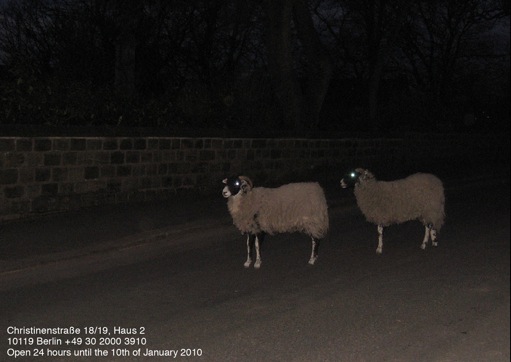
Euan Williams: Turning Shadow into Transient Sight
It’s winter, it’s night, it’s cold.
A group of people are huddled outside around the bay windows of a room – trying to see what it is they are supposed to be looking at. Patience is a large part of the piece. Some give up and look away; others persist – noses pressed against the glass, hands cupped and held to their heads like brackets containing eyes.
In a 100th of a second the large strobe that is inside the room under the window flashes 1500 Joules of light into the space and against the walls – the walls then reflect the light towards the window, to the group of people, and out into the Pfefferberg yard.
In the night time the light is quite aggressive – claiming the area lit up by the flash – burning an impression of the room onto retinas. The walls within the space have been altered – each has a different shade of grey and there are thick black lines along the corners of the walls, ceiling and floor. The group walk away – taking the room with them as an afterimage – a transposed sight overlaid upon a new environment.
During the daytime the flash remains flashing but its intensity is weakened by the light of the sun. The tempo of the pauses in-between each flash varies from day to day – yet always remains slow and disparate from one another.
The flash flashed for 24 hours a day for two months and ran over the winter solstice.
It’s winter, it’s night, it’s cold.
A group of people are huddled outside around the bay windows of a room – trying to see what it is they are supposed to be looking at. Patience is a large part of the piece. Some give up and look away; others persist – noses pressed against the glass, hands cupped and held to their heads like brackets containing eyes.
In a 100th of a second the large strobe that is inside the room under the window flashes 1500 Joules of light into the space and against the walls – the walls then reflect the light towards the window, to the group of people, and out into the Pfefferberg yard.
In the night time the light is quite aggressive – claiming the area lit up by the flash – burning an impression of the room onto retinas. The walls within the space have been altered – each has a different shade of grey and there are thick black lines along the corners of the walls, ceiling and floor. The group walk away – taking the room with them as an afterimage – a transposed sight overlaid upon a new environment.
During the daytime the flash remains flashing but its intensity is weakened by the light of the sun. The tempo of the pauses in-between each flash varies from day to day – yet always remains slow and disparate from one another.
The flash flashed for 24 hours a day for two months and ran over the winter solstice.
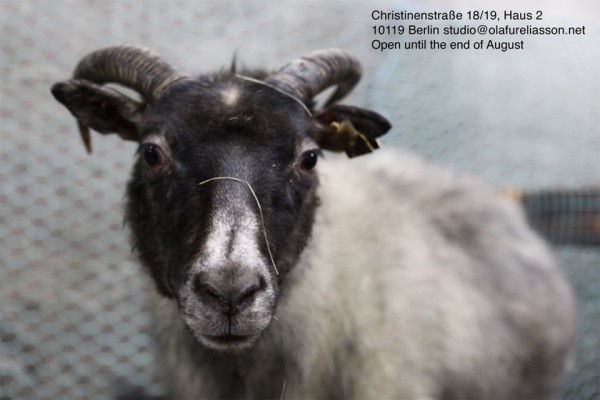
Quynh Vantu, Leon Eixenberger, Clara Jo, Jeremias Holliger, Raul Walch, Asako Iwama & Lauren Maurer
Fresh herbs and seasonal vegetables harvested by Asako Iwama & Lauren Maurer
Leon Eixenberger
Quynh Vantu
Quynh Vantu: Ease Labyrinth
Quynh Vantu: Ease Labyrinth
Jeremias Holliger
Jeremias Holliger
Fresh herbs and seasonal vegetables harvested by Asako Iwama & Lauren Maurer
Leon Eixenberger
Quynh Vantu
Quynh Vantu: Ease Labyrinth
Quynh Vantu: Ease Labyrinth
Jeremias Holliger
Jeremias Holliger
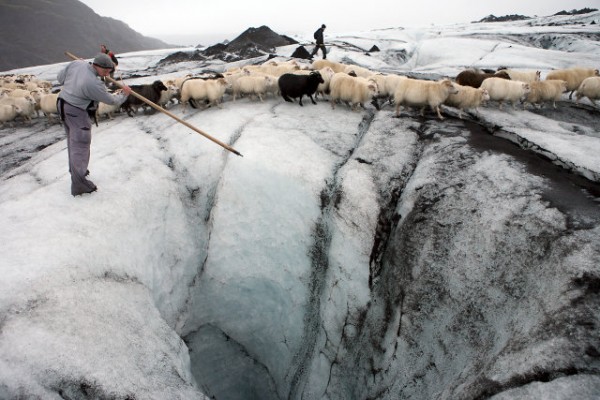
Grey Sheep Ausstellungsreihe
Grey Sheep is an ongoing project, initiated by Studio Olafur Eliasson, which expands the studio’s activities by instigating a dialogue between artists associated with the studio or the Institut für Raumexperimente and a local audience. The name refers to a rare type of Icelandic sheep.
Grey Sheep, ein Projekt von Studio Olafur Eliasson, initiiert den Dialog vor Ort – als Erweiterung der Studioaktivitäten und in Kollaboration mit Künstlern, die im Austausch mit dem Studio oder dem Institut für Raumexperimente stehen. Benannt ist das Projekt nach einer seltenen Art des Islandschafs.
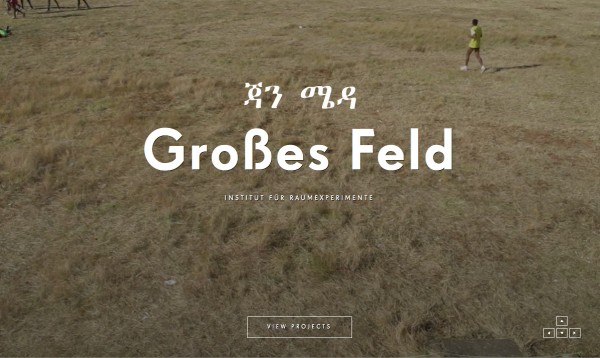
Jan Meda – Großes Feld
The Institut für Raumexperimente hosts a three-day art festival at Jan Meda, the former horse race track in Addis Ababa. The exhibition includes works by artists from Addis Ababa and Berlin. By facilitating the collaborative engagement of a unique group of artists and cultural producers, the programme creates an atmosphere of experimentation, friction, and radical movement that challenges the norms by which we create art, live together, and, thus, produce reality. Works include pavilions installed in the field, video, painting, sculpture and photography, installations, performances, workshops for children, a light sound workshop, cooking experiments, a lecture and film program, and a poetry jazz event.
Contributions by: AEAEAEAE, Malte Bartsch, Julius von Bismarck, Rune Bosse & Addis Ababa University Football Club, Merlin Carter, Julian Charrière, Leon Eixenberger, Leon Eixenberger, Eric Ellingsen, Tomas Espinosa, Henok Getachew, Tamrat Gezahegne, Andreas Greiner, Markus Hoffmann, Rike Horb, Clara Jo, Hans-Henning Korb, Mihret Kebede, Felix Kiessling, Fabian Knecht, Norgard Kröger, Robert Lippok, Felix Meyer, Simen Museus, Molly Nesbit, Lynn Peemoeller, Vinzenz Reinecke, Nina Schuiki, Robel Temesgen, Alkistis Thomidou, Raul Walch, Jonas Wendelin, Christina Werner, Euan Williams, Helen Zeru
View exhibition website.
Program:
13 December: Opening DayPerformances and walks by Eric Ellingsen, Simen Museus & Hans-Henning Korb, Henok Getachew, Rune Bosse & Robel Temesgen, Julian Charrière.
14 December: Film ScreeningVideo works by artists from Addis Abeba and Berlin: Eric Ellingsen, Fabian Knecht, Merlin Carter, Felix Meyer, Robel Temesgen, Raul Walch, and Jonas Wendelin
14 December: Conversation with Molly NesbitLecture at the exhibition
Click to view the video documentation of Molly Nesbit’s lecture Doubts and Habits of Actions in Time.
15 December: Ishe get ‘um, OK PoetryPoetry readings and performances by Eric Ellingsen, Mihret Kebede, Misrak Terefe, Abebaw Melaku, Demissew Mersha, Vinzenz Reinecke, Tadele Tewodros, and Addis Taem Band
Click to view the video documentation of the poetry performances.
Das Institut für Raumexperimente richtet ein dreitägiges Kunstfestival auf der früheren Pferderennbahn, Jan Meda, in Addis Abeba aus. Die Ausstellung zeigt Werke von Künstlern aus Addis Abeba und Berlin. So wird eine besondere Begegnung und Zusammenarbeit einer Gruppe von Künstlern und Kulturschaffenden ermöglicht. Hierdurch schafft das Festival eine experimentelle und spannungsgeladene Atmosphäre mit Offenheit für radikale Schritte. Normen nach denen wir Kunst machen, zusammen leben und Realität produzieren werden so in Frage gestellt. Die Arbeiten umfassen unter anderem Pavillons auf der Rennbahn, Video, Malerei, Skulptur und Fotografie, Installationen, Performances, Workshops für Kinder, einen Workshop mit Licht und Resonanz, Kochexperimente, ein Vorlesungs- und Filmprogramm sowie ein Jazz-Poetry Event.
Mit Beiträgen von: AEAEAEAE, Malte Bartsch, Julius von Bismarck, Rune Bosse & Addis Ababa University Football Club, Merlin Carter, Julian Charrière, Leon Eixenberger, Leon Eixenberger, Eric Ellingsen, Tomas Espinosa, Henok Getachew, Tamrat Gezahegne, Andreas Greiner, Markus Hoffmann, Rike Horb, Clara Jo, Hans-Henning Korb, Mihret Kebede, Felix Kiessling, Fabian Knecht, Norgard Kröger, Robert Lippok, Felix Meyer, Simen Museus, Molly Nesbit, Lynn Peemoeller, Vinzenz Reinecke, Nina Schuiki, Robel Temesgen, Alkistis Thomidou, Raul Walch, Jonas Wendelin, Christina Werner, Euan Williams, Helen Zeru
Website der Ausstellung besuchen.
Programm:
13. Dezember: EröffnungPerformances und Walks von Eric Ellingsen, Simen Museus & Hans-Henning Korb, Henok Getachew, Rune Bosse & Robel Temesgen, Julian Charrière.
14. Dezember: FilmabendVideos von Künstlern aus Addis Abeba und Berlin: Eric Ellingsen, Fabian Knecht, Merlin Carter, Felix Meyer, Robel Temesgen, Raul Walch und Jonas Wendelin
14. Dezember: Molly Nesbit: Doubts and Habits of Actions in TimeVortrag in der Ausstellung
Hier zur Videodokumentation des Vortrags von Molly Nesbit.
15 December: Ishe get ‘um, OK PoetryLesungen und Performances von Eric Ellingsen, Mihret Kebede, Misrak Terefe, Abebaw Melaku, Demissew Mersha, Vinzenz Reinecke, Tadele Tewodros und der Addis Taem Band
Die Videodokumentation der Performances anschauen.
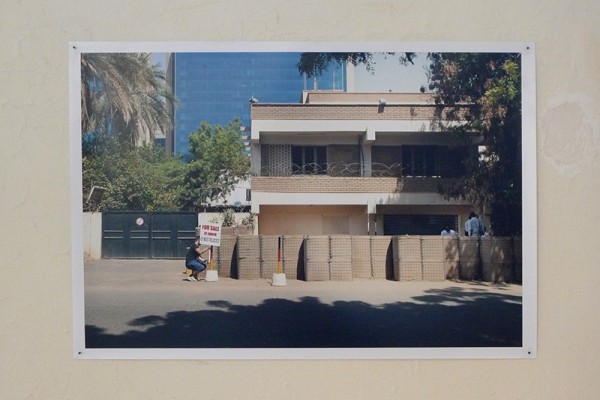
Addis Foto Fest 2012
The Institut für Raumexperimente is invited to participate in the Addis Foto Fest 2012. Established in 2010, the Addis Foto Fest is a biennial photography festival directed by photographer Aida Muluneh. Produced by Desta for Africa (DFA), the weeklong international festival is held in Addis Ababa, Ethiopia, and features exhibitions, portfolio reviews, conferences, projections, and film screenings.
The works contributed by the Institut für Raumexperimente are exhibited at the Alle School of Fine Art and Design, Addis Ababa University, with several interventions taking place in public space.
Works and interventions by Malte Bartsch; Julius von Bismarck; Rune Bosse; Julian Charrière and Julius von Bismarck; Eric Ellingsen and Fabian Knecht; Leon Eixenberger; Leon Eixenberger and Hans-Henning Korb; Markus Hoffmann; Jonas Wendelin; Felix Kiessling; Fabian Knecht; Vinzenz Reinecke and Merlin Carter; Nina Schuiki; Raul Walch; and Christina Werner, Alkistis Thomidou, Helen Zeru and Norgard Kröger
Das Institut für Raumexperimente ist eingeladen am Addis Foto Fest 2012 teilzunehmen. Gegründet im Jahr 2010 ist das Addis Foto Fest ein alle zwei Jahre stattfindendes Festival für Fotografie unter der Leitung der Fotografin Aida Muluneh. Das einwöchige Festival ist eine Produktion von Desta for Africa (DFA) und findet in Addis Abeba, Äthiopien statt. Teil des Programms sind Ausstellungen, Portfoliobesprechungen, Konferenzen, Projektionen und Filmvorführungen.
Die Arbeiten des Instituts für Raumexperimente sind an der Alle School of Fine Art and Design der Addis Abeba University zu sehen. Mehrere Events finden außerdem im öffentlichen Raum statt.
Arbeiten und Interventionen von Malte Bartsch; Julius von Bismarck; Rune Bosse; Julian Charrière und Julius von Bismarck; Eric Ellingsen und Fabian Knecht; Leon Eixenberger; Leon Eixenberger und Hans-Henning Korb; Markus Hoffmann; Jonas Wendelin; Felix Kiessling; Fabian Knecht; Vinzenz Reinecke und Merlin Carter; Nina Schuiki; Raul Walch; und Christina Werner, Alkistis Thomidou, Helen Zeru und Norgard Kröger
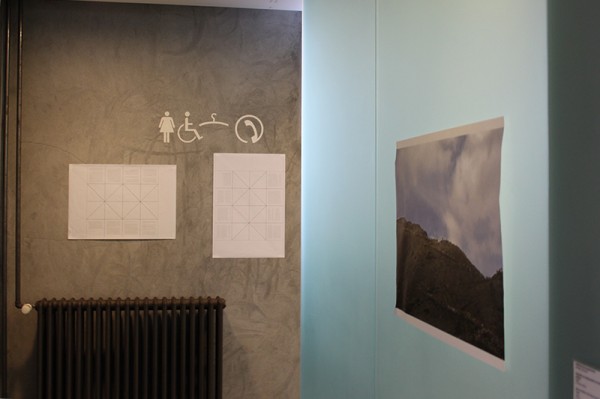
Ideas Are Motion, Teil 3: Reykjavik
Ideas Are Motion: The Poster as an Experiment in Travel
Part 3: Reykjavik Art Museum – Hafnarhús, Iceland
Without Destination – TRAIL, Reykjavik Art Museum – Hafnarhús, Iceland
with works by: Fernanda Trevellin de Almeida, Julius von Bismarck, Julian Charrière, Elise Eeraerts, Olafur Eliasson, Eric Ellingsen, Andreas Greiner, Markus Hoffmann, Jeremias Holliger, Friederike Horbrügger, Anne Duk Hee Jordan, Felix Kiessling, Fabian Knecht, Jae Rhim Lee, Gabrielle Mainguy, Laura McLardy, Astrid Nippoldt, Timea Anita Oravecz, Sophia Pompéry, Sarah Rechberger, Dan Stockholm, Alvaro Urbano, Ósk Vilhjálmsdóttir, Raul Walch, Christina Werner, Euan Williams, Hendrik Wolking
in collaboration with Markús Þór Andrésson
Ideas Are Motion takes place in(1) Zagreb, Croatia (2) Japan (3) Iceland.
Ideas Are Motion: The Poster as an Experiment in Travel is prismatically structured to reflect the making of a class excursion, within the making of an individual art project, within the making of a collective project, within the feeling of a place, within an exhibition in that place.
Exhibition film
Exhibition viewsfrom Reykjavik Art Museum
Ideas Are Motion: The Poster as an Experiment in Travel
Teil 3: Reykjavik Kunstmuseum – Hafnarhús, Island
Without Destination – TRAIL, Reykjavik Kunstmuseum – Hafnarhús, Island
mit Arbeiten von: Fernanda Trevellin de Almeida, Julius von Bismarck, Julian Charrière, Elise Eeraerts, Olafur Eliasson, Eric Ellingsen, Andreas Greiner, Markus Hoffmann, Jeremias Holliger, Friederike Horbrügger, Anne Duk Hee Jordan, Felix Kiessling, Fabian Knecht, Jae Rhim Lee, Gabrielle Mainguy, Laura McLardy, Astrid Nippoldt, Timea Anita Oravecz, Sophia Pompéry, Sarah Rechberger, Dan Stockholm, Alvaro Urbano, Ósk Vilhjálmsdóttir, Raul Walch, Christina Werner, Euan Williams, Hendrik Wolking
in Zusammenarbeit mit Markús Þór Andrésson
Ideas Are Motion findet statt in(1) Zagreb, Kroatien (2) Japan (3) Island.
Ideas Are Motion: The Poster as an Experiment in Travel ist ein prismatisch strukturiertes Projekt, das die Erfahrungen einer Klassenreise reflektiert: Prozesse eines individuellen künstlerischen Projektes, Prozesse kollektiven Arbeitens, Prozesse des Erspürens eines Ortes, Prozesse des Ausstellungsmachens an diesem Ort.
Film zur Ausstellung
Ausstellungsansichtenim Reykjavik Kunstmuseum
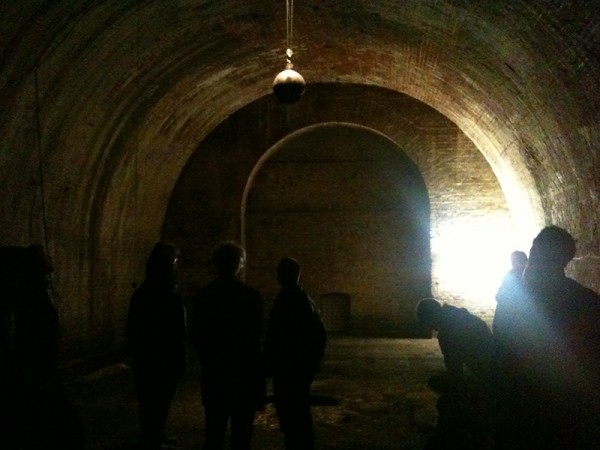
let’s start to implement little errors
Exhibition at Pfefferberg, Berlin
with works by Julius von Bismarck, Julian Charrière, Elise Eeraerts, Andreas Greiner, Markus Hoffmann, Jeremias Holliger, Friederike Horbrügger, Thomas Jellis, Anne Duk Hee Jordan, Armin Keplinger, Felix Kiessling, Fabian Knecht, Johannes Lieback, Gabrielle Mainguy, Laura McLardy, Astrid Nippoldt, Timea Anita Oravecz, Sophia Pompéry, Sarah Rechberger, Martin Schied, Matthias Sohr, Dan Stockholm, Fernanda Trevellin de Almeida, Alvaro Urbano, Raul Walch, Euan Williams, Hendrik Wolking
exhibition view
View flyer
View floor plan
Ausstellung im Pfefferberg, Berlin
mit Arbeiten von Julius von Bismarck, Julian Charrière, Elise Eeraerts, Andreas Greiner, Markus Hoffmann, Jeremias Holliger, Friederike Horbrügger, Thomas Jellis, Anne Duk Hee Jordan, Armin Keplinger, Felix Kiessling, Fabian Knecht, Johannes Lieback, Gabrielle Mainguy, Laura McLardy, Astrid Nippoldt, Timea Anita Oravecz, Sophia Pompéry, Sarah Rechberger, Martin Schied, Matthias Sohr, Dan Stockholm, Fernanda Trevellin de Almeida, Alvaro Urbano, Raul Walch, Euan Williams, Hendrik Wolking
in der Ausstellung
Flyer ansehen
Grundriss ansehen
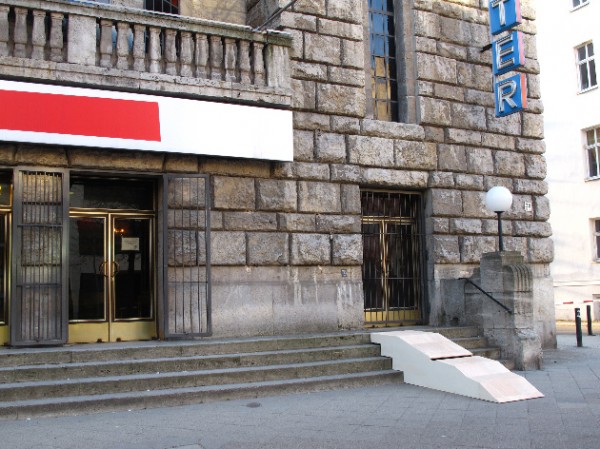
Theaterfestival 100°
Installations and interventions as part of the Theater Festival 100°
Collaboration with Hebbel-am-Ufer, Berlin
WORKS BY Julian Francis Bisesi, Julian Charrière, Elise Eeraerts, Jan Fiege, Andreas Greiner, Markus Hoffmann, Jeremias Holliger, Friederike Horbrügger, Armin Keplinger, Maresa Anna Fiege, Marie-Kristin Thiele, Raul Walch, Euan Williams, Alvaro Urbano
View flyer
Installationen und Interventionen im Rahmen des Theaterfestivals 100°
Kollaboration mit Hebbel-am-Ufer, Berlin
BEITRÄGE VON Julian Francis Bisesi, Julian Charrière, Elise Eeraerts, Jan Fiege, Andreas Greiner, Markus Hoffmann, Jeremias Holliger, Rike Horb, Armin Keplinger, Maresa Anna Fiege, Marie-Kristin Thiele, Raul Walch, Euan Williams, Alvaro Urbano
Flyer ansehen
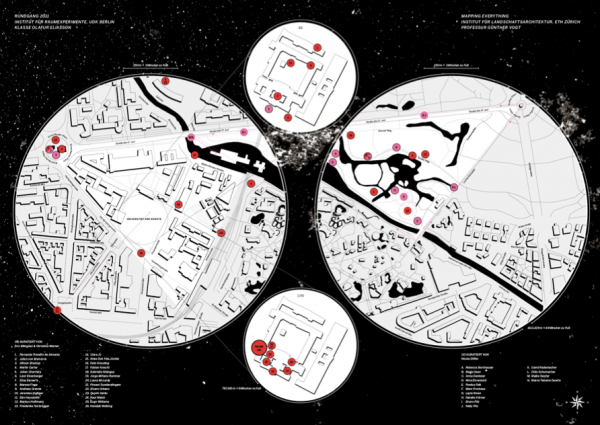
Mapping Everything: Ausstellung
Mapping Everything, Exhibition
with works by:
Fernanda Trevellin de Almeida, Julius von Bismarck, Allison Bisshop, Rebecca Bornhauser, Merlin Carter, Julian Charrière, Berte Daan, Anna Denkeler, Nina Ehrenbold, Leon Eixenberger, Elise Eeraerts, Pontus Falk, Maresa Anna Fiege, Marc Frochaux, Andreas Greiner, Elín Hansdóttir, Jeremias Holliger, Markus Hoffmann, Friederike Horbrügger, Leyla Ilman, Clara Jo, Anne Duk Hee Jordan, Felix Kiessling, Fabian Knecht, Natalie Körner, Gabrielle Mainguy, Jorge Minano Ramirez, Laura McLardy, Bruno Pilz, Nelly Pilz, David Rademacher, Dido Schumacher, Pireeni Sundaralingam, Maike Swyter, Marco Teixeira Duarte, Alvaro Urbano, Quynh Vantu, Raul Walch, Euan Williams, Hendrik Wolking
view exhibition map
Mapping Everything, Ausstellung
mit Arbeiten von:
Fernanda Trevellin de Almeida, Julius von Bismarck, Allison Bisshop, Rebecca Bornhauser, Merlin Carter, Julian Charrière, Berte Daan, Anna Denkeler, Nina Ehrenbold, Leon Eixenberger, Elise Eeraerts, Pontus Falk, Maresa Anna Fiege, Marc Frochaux, Andreas Greiner, Elín Hansdóttir, Jeremias Holliger, Markus Hoffmann, Friederike Horbrügger, Leyla Ilman, Clara Jo, Anne Duk Hee Jordan, Felix Kiessling, Fabian Knecht, Natalie Körner, Gabrielle Mainguy, Jorge Minano Ramirez, Laura McLardy, Bruno Pilz, Nelly Pilz, David Rademacher, Dido Schumacher, Pireeni Sundaralingam, Maike Swyter, Marco Teixeira Duarte, Alvaro Urbano, Quynh Vantu, Raul Walch, Euan Williams, Hendrik Wolking
Ausstellungskarte als PDF anschauen
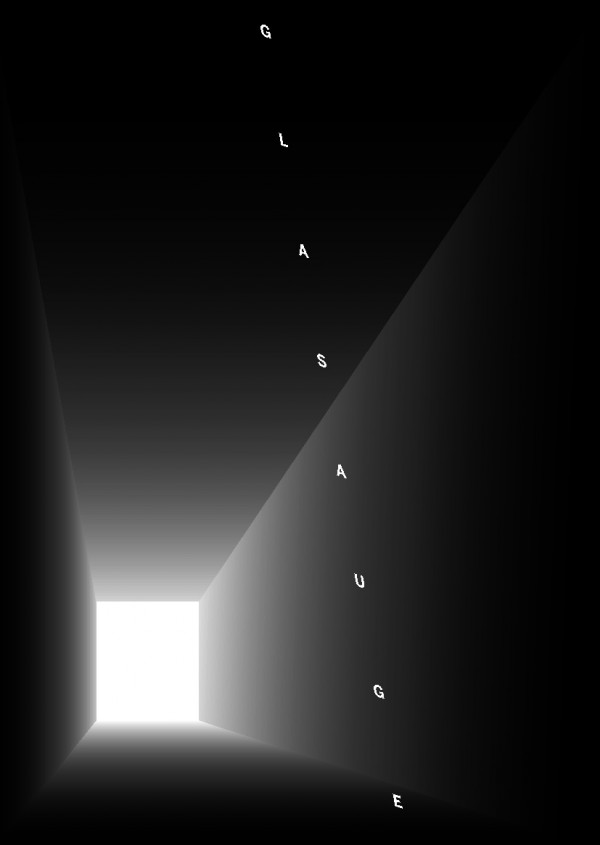
GLASAUGE
Visit project microsite
WORKS BY AEAEAEAE, Rune Bosse, Julius von Bismarck, Julian Charrière, Merlin Carter, Andreas Dzialocha, Leon Eixenberger, Olafur Eliasson and TR, Eric Ellingsen, Tomas Espinosa, Maresa Fiege, Fabian Gisler, Andreas Greiner, Felix Meyer, Rodrigo Maltez Novaes, Markus Hoffmann, Jeremias Holliger, Friederike Horbrügger, Clara Jo, Anne Duk Hee Jordan, Felix Kiessling, Jonas Wendelin, Fabian Knecht, Hans-Henning Korb, Felix Lüke, Laura McLardy, Macarena Ruiz-Tagle, Andrea Sanzvela, Martin Schick, Tiago Romagnani Silveira, Diana Sprenger, Wilm Thoben, Alvaro Urbano, Raul Walch, Jan St. Werner, Euan Williams, Hendrik Wolking
View exhibition map
Projektwebsite besuchen
ARBEITEN VON AEAEAEAE, Rune Bosse, Julius von Bismarck, Julian Charrière, Merlin Carter, Andreas Dzialocha, Leon Eixenberger, Olafur Eliasson and TR, Eric Ellingsen, Tomas Espinosa, Maresa Fiege, Fabian Gisler, Andreas Greiner, Felix Meyer, Rodrigo Maltez Novaes, Markus Hoffmann, Jeremias Holliger, Friederike Horbrügger, Clara Jo, Anne Duk Hee Jordan, Felix Kiessling, Jonas Wendelin, Fabian Knecht, Hans-Henning Korb, Felix Lüke, Laura McLardy, Macarena Ruiz-Tagle, Andrea Sanzvela, Martin Schick, Tiago Romagnani Silveira, Diana Sprenger, Wilm Thoben, Alvaro Urbano, Raul Walch, Jan St. Werner, Euan Williams, Hendrik Wolking
siehe Ausstellungsplan
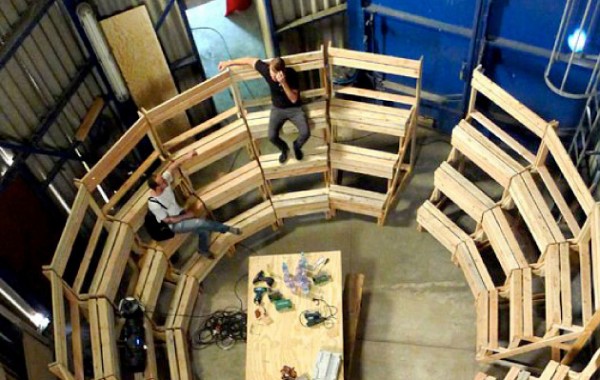
Translations Acts
Translation Acts at The World Is Not Fair – Die Große Weltausstellung 2012
CONTRIBUTIONS/WORKSHOPS/INTERVENTIONS/PERFORMANCES BY
Shane Anderson, Ivan Argote, Julian Francis Bisesi, Julius von Bismarck, Rune Bosse, Guido Brendgens, Luz Broto, Barbara Buchmaier, Carson Chan, Julian Charrière, Merlin Carter, Sharmila Cohen, Deconcrete, Olafur Eliasson, Eric Ellingsen, Leon Eixenberger, Tomas Espinosa, Lukas Feireiss, Maresa Anna Fiege, Nina Fischer, Benjamin Foerster-Baldenius, Matthias Friederich, Andreas Greiner, Petrit Hailaj, Christian Hawkey, Martina Hefter, Klara Hobza, Markus Hoffmann, Jeremias Holliger, Karl Holmqvist, John Holten, Friederike Horbrügger, Sandra Huber, Intelegencias Colectivas, Clara Jo, Anne Duk Hee Jordan, Felix Kiessling, Lena König, Julian von Klier, Fabian Knecht, Hans-Henning Korb, Camilla Kragelund, Gaëlle Kreens, Fotini Lazaridou-Hatzigoga, Leo Leandro, Regula Lüscher, Laura McLardy, Thomas Macho, Yves Mettler, Felix Meyer, Ari Benjamin Meyers, Simen Museus, Kirsten Palz, Juninho Quebradeira, Joao Rasta, Monika Rinck, Macarena Ruiz-Tagle, Maroan el Sani, Arne Schönewald, Tiago Romagnani Silveira, Something Fantastic, Todo Por La Praxis, Andreas Töpfer, Montse Torreda, Alvaro Urbano, Valdirjovena, Raul Walch, Caleb Waldorf, Joanna Warsza, Jonas Wendelin, Christina Werner, Jan Werner, Euan Williams, Uljana Wolf, Hendrik Wolking, Philippe van Wolputte, Florian Wüst, Helga Wretman
View Exhibition Programme (PDF)
Go to: Full Exhibition Publication
Translation Acts bei The World Is Not Fair – Die Große Weltausstellung 2012
BEITRÄGE/WORKSHOPS/INTERVENTIONEN/PERFORMANCES VON
Shane Anderson, Ivan Argote, Julian Francis Bisesi, Julius von Bismarck, Rune Bosse, Guido Brendgens, Luz Broto, Barbara Buchmaier, Carson Chan, Julian Charrière, Merlin Carter, Sharmila Cohen, Deconcrete, Olafur Eliasson, Eric Ellingsen, Leon Eixenberger, Tomas Espinosa, Lukas Feireiss, Maresa Anna Fiege, Nina Fischer, Benjamin Foerster-Baldenius, Matthias Friederich, Andreas Greiner, Petrit Hailaj, Christian Hawkey, Martina Hefter, Klara Hobza, Markus Hoffmann, Jeremias Holliger, Karl Holmqvist, John Holten, Friederike Horbrügger, Sandra Huber, Intelegencias Colectivas, Clara Jo, Anne Duk Hee Jordan, Felix Kiessling, Lena König, Julian von Klier, Fabian Knecht, Hans-Henning Korb, Camilla Kragelund, Gaëlle Kreens, Fotini Lazaridou-Hatzigoga, Leo Leandro, Regula Lüscher, Laura McLardy, Thomas Macho, Yves Mettler, Felix Meyer, Ari Benjamin Meyers, Simen Museus, Kirsten Palz, Juninho Quebradeira, Joao Rasta, Monika Rinck, Macarena Ruiz-Tagle, Maroan el Sani, Arne Schönewald, Tiago Romagnani Silveira, Something Fantastic, Todo Por La Praxis, Andreas Töpfer, Montse Torreda, Alvaro Urbano, Valdirjovena, Raul Walch, Caleb Waldorf, Joanna Warsza, Jonas Wendelin, Christina Werner, Jan Werner, Euan Williams, Uljana Wolf, Hendrik Wolking, Philippe van Wolputte, Florian Wüst, Helga Wretman
Ausstellungsprogramm ansehen (PDF)
Zur gesamten Publikation
Programm ansehen
Exhibition publication
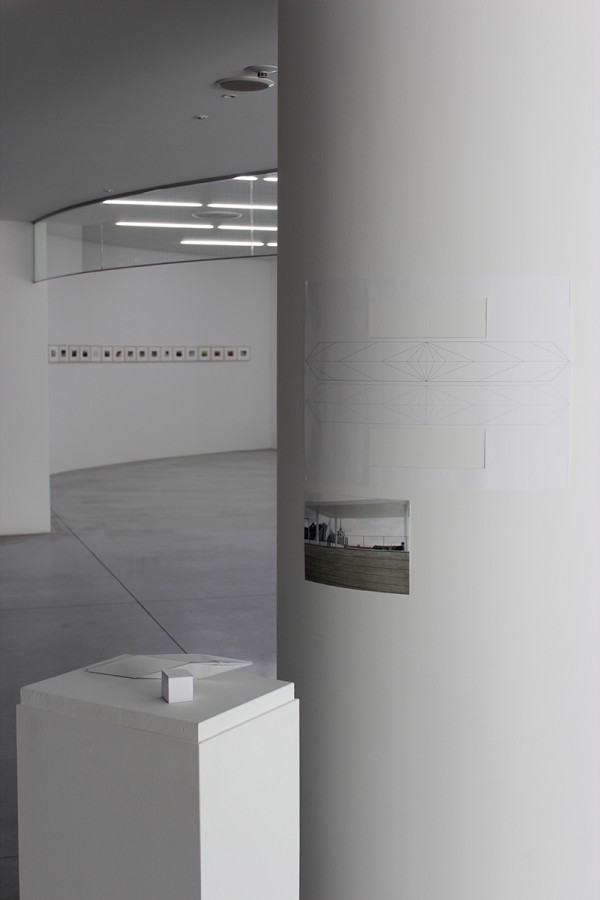
Ideas Are Motion, Teil 2: Japan
Ideas Are Motion: The Poster as an Experiment in Travel
Poster Project, Part 2: Japan
Berlin 2000-2011: Playing amongst the Ruins, Museum of Contemporary Art Tokyo
with works by Fernanda Trevellin de Almeida, Julius von Bismarck, Julian Charrière, Elise Eeraerts, Olafur Eliasson, Eric Ellingsen, Ivana Franke, Andreas Greiner, Markus Hoffmann, Jeremias Holliger, Friederike Horbrügger, Asako Iwama, Anne Duk Hee Jordan, Felix Kiessling, Fabian Knecht, Gabrielle Mainguy, Laura McLardy, Sophia Pompéry, Matthias Sohr, Dan Stockholm Henriksen, Raul Walch, Christina Werner, Euan Williams
Video © Olafur Eliasson / Institut für Raumexperimente
Ideas Are Motion: The Poster as an Experiment in Travel is prismatically structured to reflect the making of a class excursion, within the making of an individual art project, within the making of a collective project, within the feeling of a place, within an exhibition in that place.
Ideas Are Motion takes place in(1) Zagreb, Croatia (2) Japan (3) Iceland.
The Institut für Raumexperimente traveled to Kanazawa, Kyoto and Tokyo in February and March 2010 and brings back Ideas Are Motion as part of the exhibition Berlin 2000-2011: Playing amongst the Ruins at the MOT, Museum of Contemporary Art Tokyo from 29.10.2011 – 9.1.2012.
Some posters are sketches of ideas, some finished statements, others dreams, or personal distortions. They are autonomous projects soon to be realized, parts realized in other places, and pitches for projects to come. In a real way, each poster is a still from a moving stream.
Every place is a mangle of spatial relationships involving motions and emotions of scale, speed, perception, attention span, directionality, and distance. Posters are vehicles of urban communication, which materialize these spatial relationships. Posters mobilize populations of perception. We behave differently because of the promiscuity of these kinds of signs in public space. We slow down, think about, read, reflect on, change plans. Urban signs are coordinated around the rhythms of our movement but they also help to coordinate that movement.
Posters are mirrors, which confirm an approach, a direction of arrival, a route of passing through. Posters reflect the population’s psychological relationship to things we personally feel we want or need, and the things we go out of way for. Posters offer a phenomenal vehicle to hitchhike an encounter with art, a formal opportunity to subvert the complete commodification of our public space, while materializing diverse art projects without predetermining an artistic content.
The poster project makes the concept act the art. The act demonstrates a process of how thinking feedbacks into a transformed thought and that thought feeds back into a transformed action of change in the world.
Ideas Are Motion: The Poster as an Experiment in Travel
Poster Projekt, Teil 2: Japan
Berlin 2000-2011: Playing amongst the Ruins, Museum of Contemporary Art Tokyo
mit Arbeiten von Fernanda Trevellin de Almeida, Julius von Bismarck, Julian Charrière, Elise Eeraerts, Olafur Eliasson, Eric Ellingsen, Ivana Franke, Andreas Greiner, Markus Hoffmann, Jeremias Holliger, Friederike Horbrügger, Asako Iwama, Anne Duk Hee Jordan, Felix Kiessling, Fabian Knecht, Gabrielle Mainguy, Laura McLardy, Sophia Pompéry, Matthias Sohr, Dan Stockholm Henriksen, Raul Walch, Christina Werner, Euan Williams
Video © Olafur Eliasson / Institut für Raumexperimente
Ideas Are Motion: The Poster as an Experiment in Travel ist ein prismatisch strukturiertes Projekt, das die Erfahrungen einer Klassenreise reflektiert: Prozesse eines individuellen künstlerischen Projektes, Prozesse kollektiven Arbeitens, Prozesse des Erspürens eines Ortes, Prozesse des Ausstellungsmachens an diesem Ort.
Ideas Are Motion findet statt in:(1) Zagreb, Kroatien (2) Japan (3) Island.
Das Institut für Raumexperimente reiste Februar bis März 2010 nach Kanazawa, Kyoto und Tokyo. Ideas Are Motion bringt die Erfahrungen dieser Reise als Teil der Ausstellung Berlin 2000-2011: Playing amongst the Ruins im MOT, Museum of Contemporary Art Tokyo vom 29.10.2011 – 9.1.2012 nach Japan zurück.
Einige Poster sind Skizzen, einige präzise Statements, andere sind Träume oder persönliche Verformungen. Sie sind autonome Projekte, die in Bälde realisieren werden, an anderen Orten bereits realisiert sind oder Vorschläge für die Zukunft. Metaphorisch und tatsächlich ist jedes Poster eine Momentaufnahme eines Ideenstromes.
Jeder Ort ist durchzogen von räumlichen Verhältnissen, die Bewegungen von und Gefühle für Maßstab, Geschwindigkeit, Wahrnehmung, Aufmerksamkeitsspanne, Richtung und Entfernung einschließen. Poster sind Vehikel urbaner Kommunikation, in denen sich diese Verhältnisse materialisieren. Poster mobilisieren vielfältige Wahrnehmungsräume. Die Promiskuität dieser Zeichen im öffentlichen Raum beeinflusst unser Verhalten. Wir halten an, lesen, denken nach, reflektieren und ändern unsere Pläne. Urbane Zeichen werden choreographiert entsprechend unserer Bewegungsmuster, können aber andererseits auch helfen, jene Bewegungen zu koordinieren.
Poster sind Spiegel, die eine Annäherung, eine Ankunft, ein Passieren markieren. Poster reflektieren die psychologischen Beziehungsmuster unserer Gesellschaften zu Dingen, die wir persönlich attraktiv finden, mögen oder auch meiden. Poster bieten sich an als Medium einer unkonventionelleren Begegnung mit Kunst und als formale Möglichkeit, die vollständige Kommerzialisierung unserer öffentlichen Räume zu unterlaufen. Dabei können die unterschiedlichsten Kunstprojekte entstehen, ohne dass der künstlerische Inhalt festgelegt wäre.
Das Posterprojekt macht den konzeptuellen Akt zur Kunst. Dieser Akt der Umsetzung demonstriert wie Denkprozesse mit sich verändernden Ideen rückgekoppelt sind und diese Ideen Handlungen beeinflussen, die Veränderungen in der Welt bewirken.
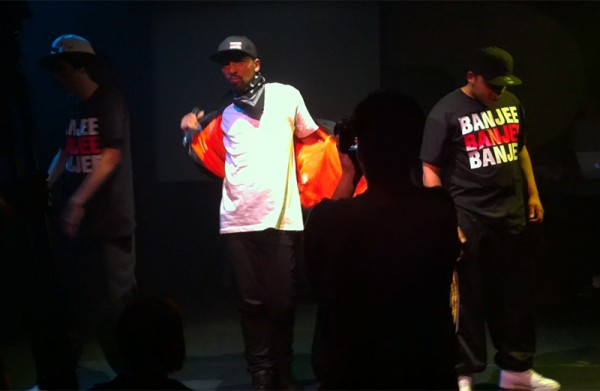
Testing Stage
Installations & interventions during Performance Night at Testing Stage—A Window to Performa New York at HAU Berlin
Collaboration with Hebbel-am-Ufer, Berlin
Installationen & Interventionen zur Performance Night, Testing Stage—A Window to Performa New York at HAU Berlin
Kollaboration mit Hebbel-am-Ufer, Berlin
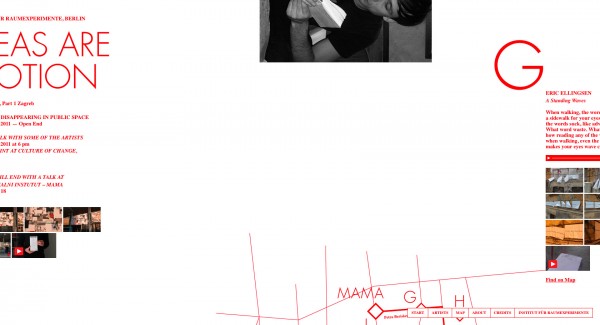
Ideas Are Motion, Teil 1: Zagreb
Ideas Are Motion: The Poster as an Experiment in Travel
Poster Project, Part 1: Zagreb
Ideas Are Motion: The Poster as an Experiment in Travel is prismatically structured to reflect the making of a class excursion (a road trip), within the making of an individual art project, within the making of a collective class project, within the feeling of a place, within an exhibition in that place. These trips range from urban cultural excursions in megacities like Tokyo, to three day walks in the wilderness of Iceland. Ideas are made in motion. The road trip turns into a round trip. Finished projects are projected back into the world. Having the experience comes with the responsibility of producing something from that experience that could add a different wobble to the world.
Visit project website
With works by Viktor Bedö, Julius von Bismarck, Julian Charrière, Eric Ellingsen, Andreas Greiner, Markus Hoffmann, Felix Kiessling, Fabian Knecht, Gabrielle Mainguy, Sophia Pompéry, Kirsten Weiss, Christina Werner
Ideas Are Motion: The Poster as an Experiment in Travel
Posterprojekt, Teil 1: Zagreb
Ideas Are Motion: The Poster as an Experiment in Travel ist ein prismatisch strukturiertes Projekt, das die Erfahrungen einer Klassenreise reflektiert: Prozesse eines individuellen künstlerischen Projektes, Prozesse kollektiven Arbeitens, Prozesse des Erspürens eines Ortes, Prozesse des Ausstellungsmachens an diesem Ort. Die zugrundeliegenden Reiseerfahrungen reichen von Exkursionen in urbane Metropolräume wie Tokio bis hin zu dreitägigen Wanderungen durch die Wildnis Islands. Ideen werden durch und in Bewegung erzeugt. Der „Road Trip“ wird zum „Round Trip“. Abgeschlossene Projekte werden zurück in die Welt projiziert. Erfahrungen gemacht zu haben, bringt die Verantwortung mit sich, etwas von dieser Erfahrung umzusetzen, etwas anzustoßen, das unsere Umlaufbahnen ein wenig zum Eiern bringen könnte.
Besuchen Sie die Website des Projektes
mit Arbeiten von Viktor Bedö, Julius von Bismarck, Julian Charrière, Eric Ellingsen, Andreas Greiner, Markus Hoffmann, Felix Kiessling, Fabian Knecht, Gabrielle Mainguy, Sophia Pompéry, Kirsten Weiss, Christina Werner

